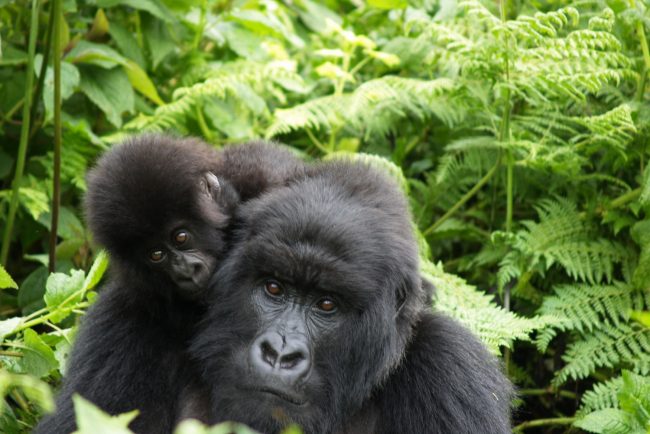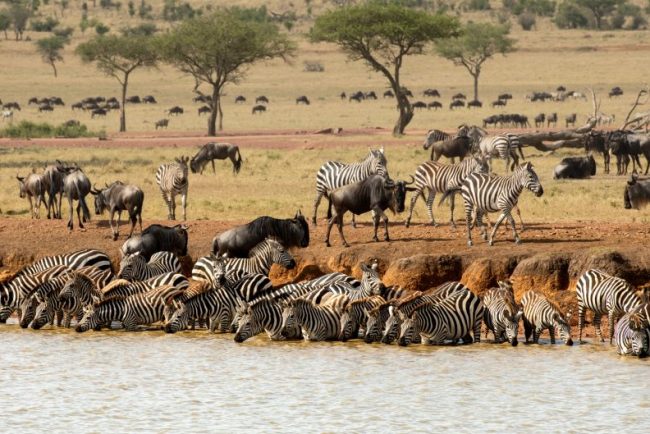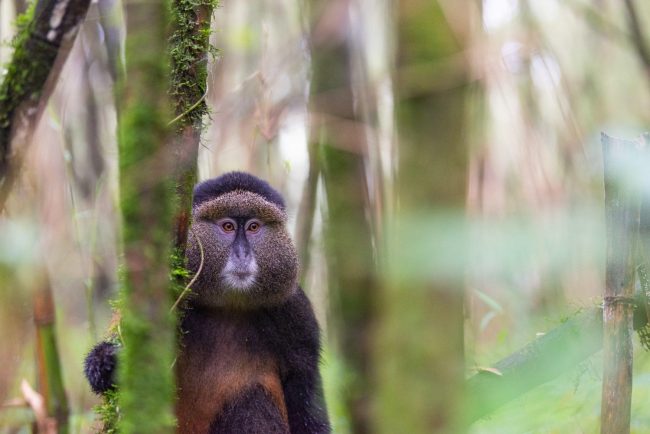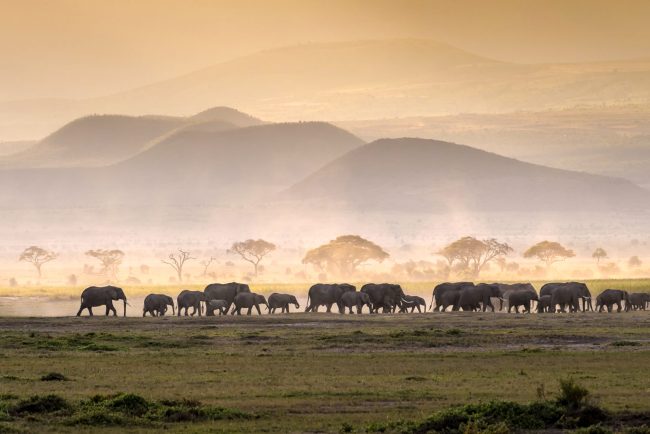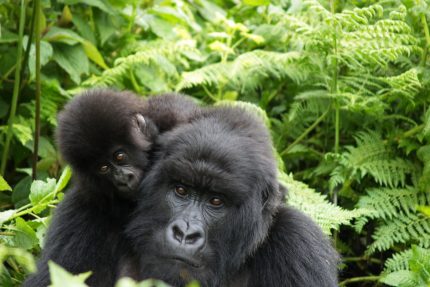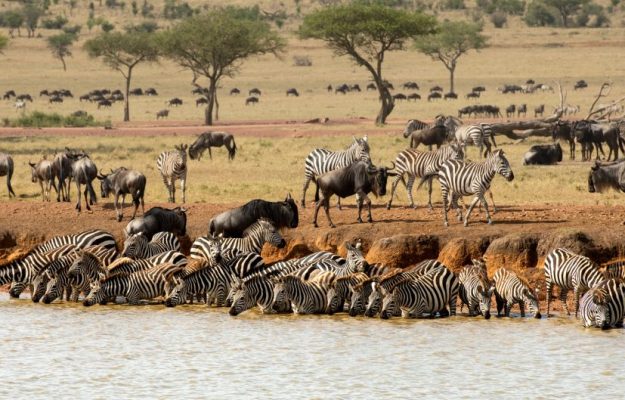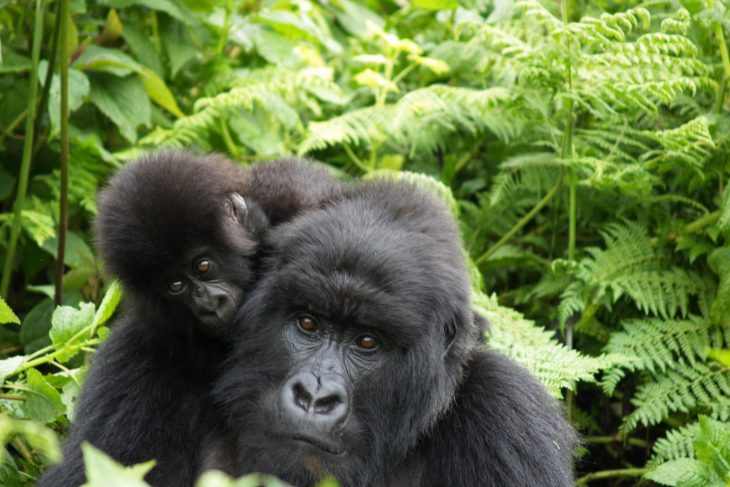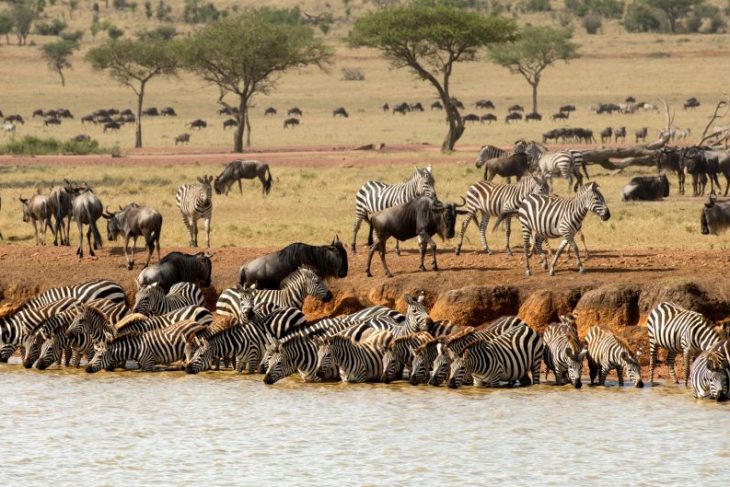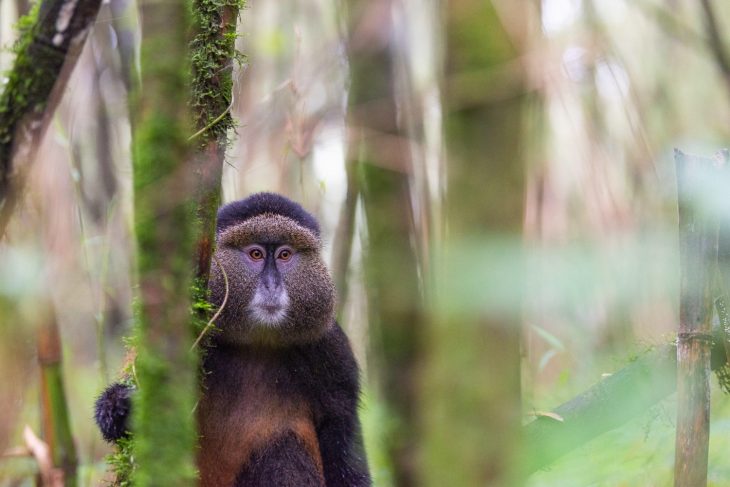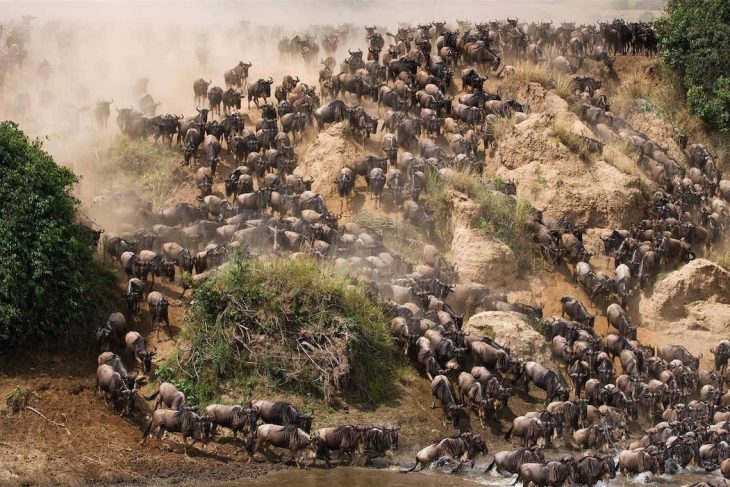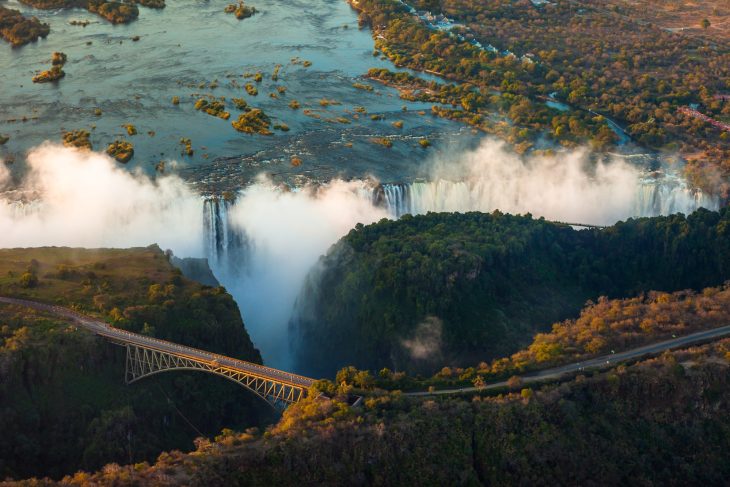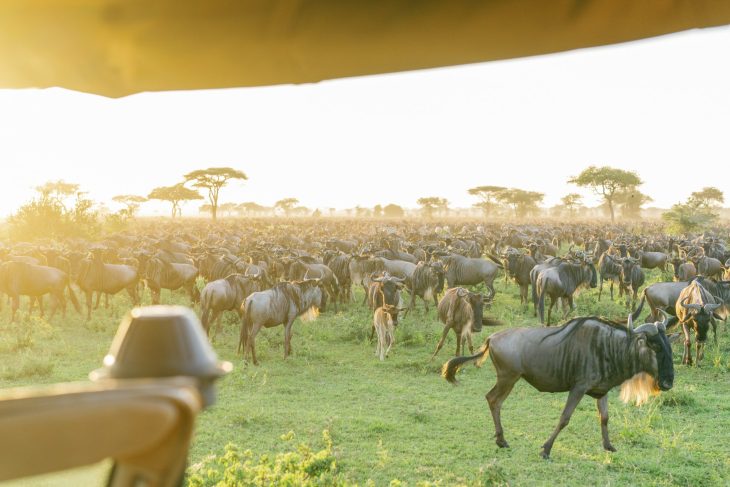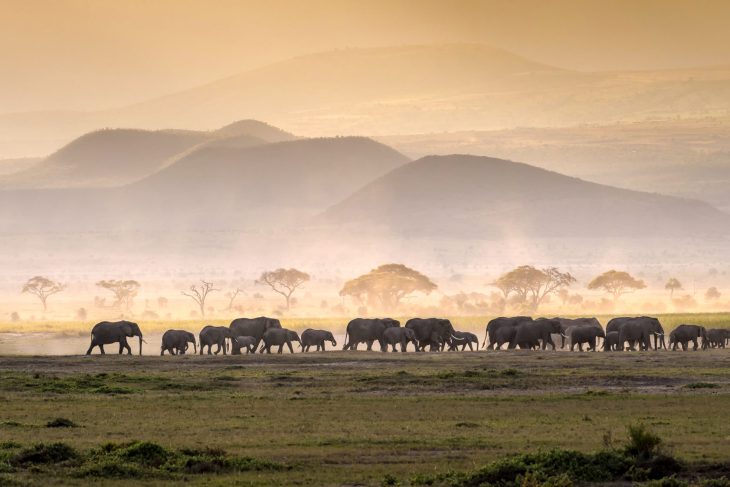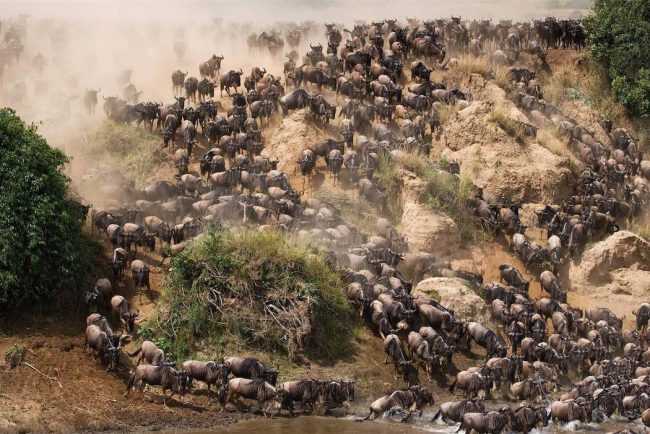
Your Guide to Experiencing the Great Migration in Tanzania
If Tanzania is commonly regarded as the visual triumph of East Africa, the Great Wildebeest Migration is the icing on this visual cake. It’s a naturally orchestrated show of over 2,000,000 animals across 1,000 kilometres over two countries, namely Tanzania and Kenya. Prepare to be thrilled by this incredible spectacle. […]
Tanzania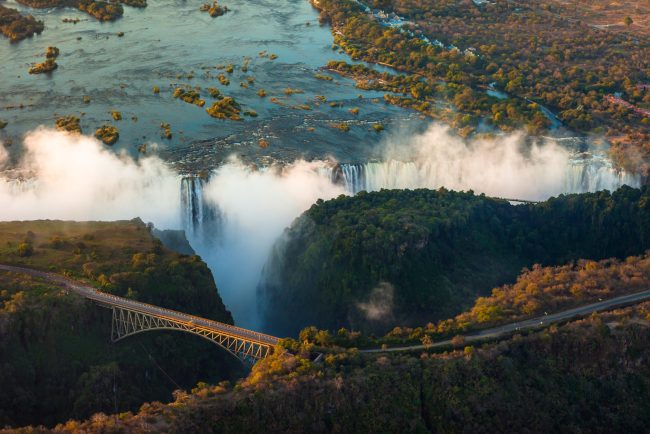
Cascade into Pure Bliss with The 12 Best Lodges in Victoria Falls
We could gush (get it?) about the jaw-dropping Victoria Falls until the hippos come home, but let’s be real – you’ve got to see this African wonder for yourself. And why should you stay at any other place but the best lodges in Victoria Falls? […]
Zimbabwe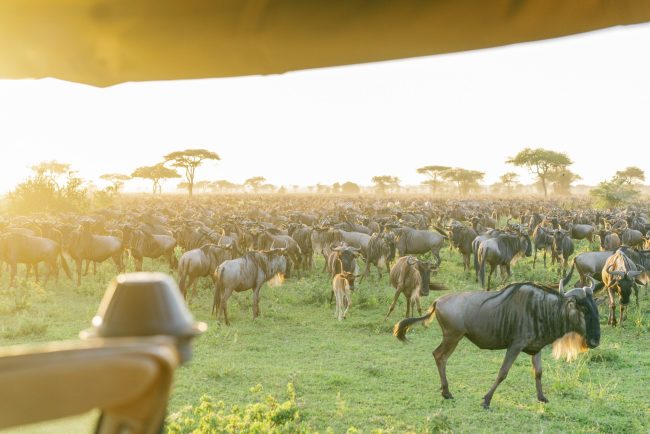
When is the Best Time to Visit the Serengeti?
The Serengeti in northern Tanzania is one of Africa’s most spectacular national parks. The incredible density and variety of wildlife in this county-sized wildlife haven are second to none. While the Great Migration – with up to two million grazers on the move – rightly attracts most of the attention, you […]
Tanzania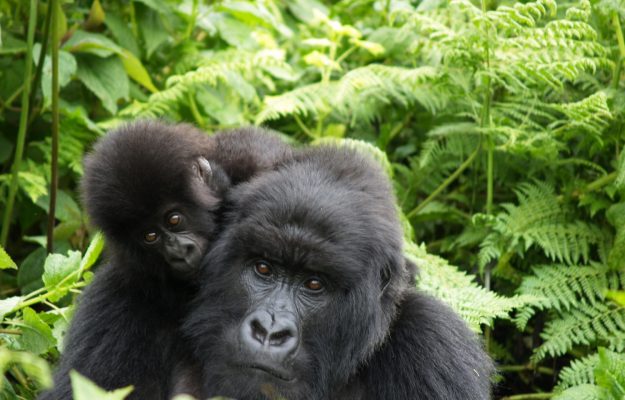


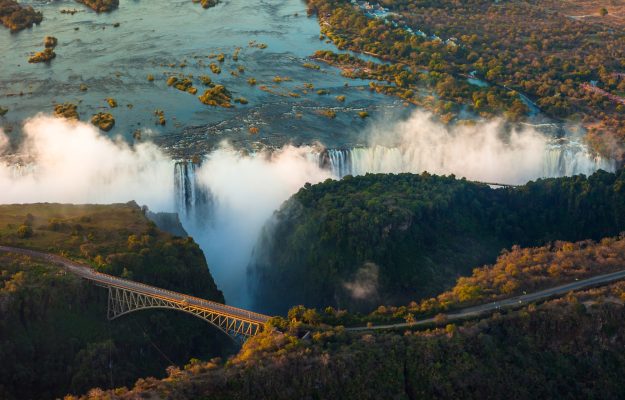

Eco-tourism in Rwanda and Its Impact
As a seasoned African traveller, I’ve been fortunate to tick many items off my African travel bucket list and had my fair share of magical moments, from soaring above the Serengeti in a hot air balloon to meeting a leopard’s eyes at Londolozi. However, despite […]
RwandaAs a seasoned African traveller, I’ve been fortunate to tick many items off my African travel bucket list and had my fair share of magical moments, from soaring above the Serengeti in a hot air balloon to meeting a leopard’s eyes at Londolozi. However, despite this, nothing quite prepares you for travelling to Rwanda. There’s something undeniably different about this country, and its commitment to tourism plays a huge role in this experience. The government has established a keen focus on eco-tourism in Rwanda, and its success is fast establishing a blueprint for other African countries to follow…
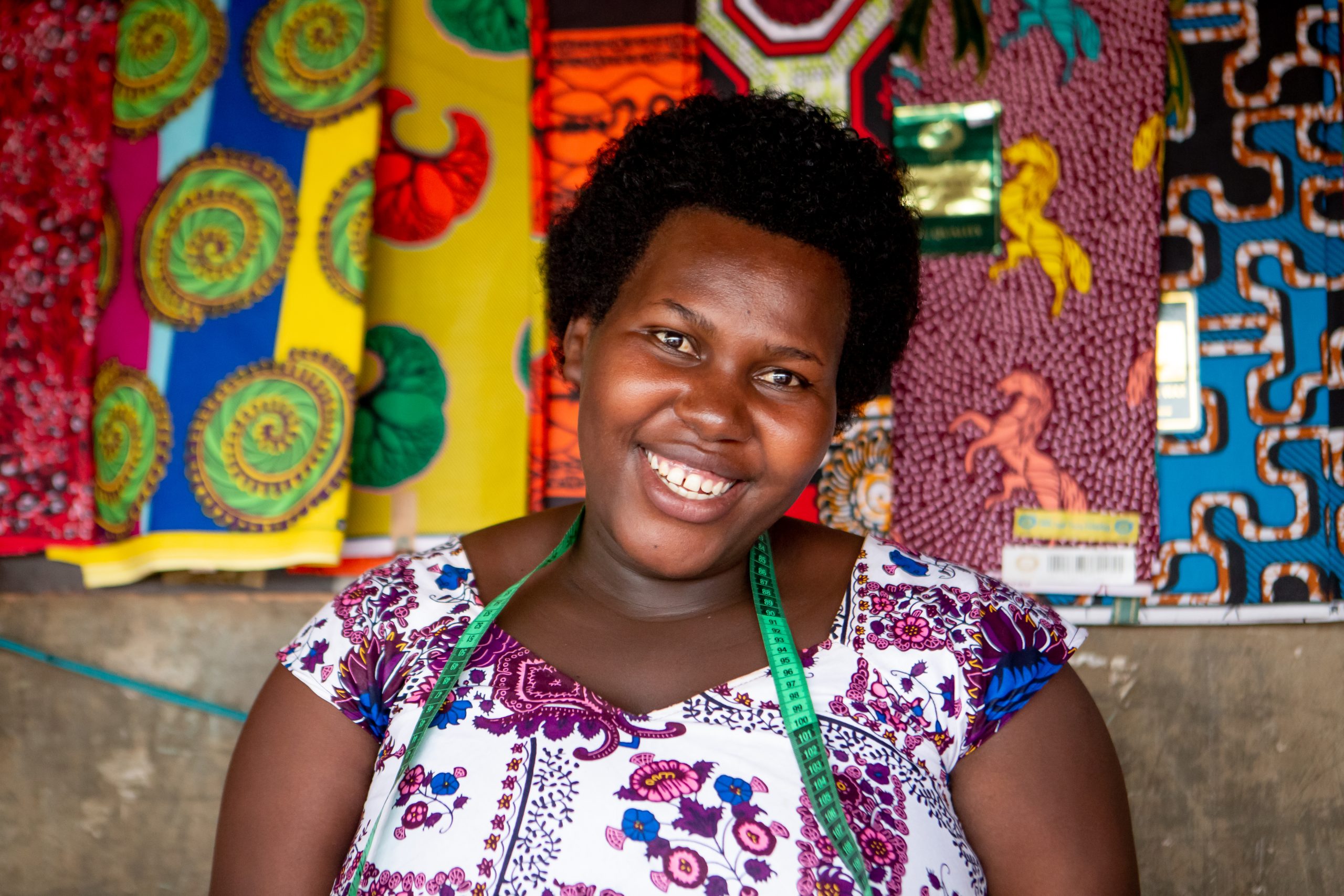
Rwanda’s people are at the heart of this counrty’s charms, Image Credit: Singita Kwitonda Lodge
Progressing from the Shadows of a Troubled Past
Rwanda has fast become a leader in sustainable tourism on the African continent. Revolutionary legislation and renewed focus have set a clear path for their future. Also known as “The Land of a Thousand Hills”, Rwanda is among the greenest (both literally and figuratively) countries on our planet.
With initiatives such as banning plastic bags, animal conservation, and sustainable lodges, Rwanda is changing the face of eco-tourism. Furthermore, the streets of the capital, Kigali, are pristine, a rarity among African cities. There are no discarded food wrappers or plastic bottles, making it East Africa’s cleanest city by far.

Kigali is rich in culture and history and known for being clean and safe
More Than Meets the Eye
The Rwandan government has focused on the importance of conservation in building a sustainable eco-tourism industry. In a similar vein, there has been a growing focus on animal conservation efforts in Rwanda. The resulting resurgence of the gorilla population and the reintroduction of lions and rhinos to Akagera National Park have been products of the focus on tourism.
As tourism begins to boom, the Rwandan government has ensured that eco-tourism is an absolute priority. Luxury lodges and properties have community and conservation initiatives that pledge to safeguard the future of tourism. There is far more to tourism than meets the eye, from reforestation efforts at Bisate Lodge to community initiatives that empower women at One&Only Gorilla’s Nest.
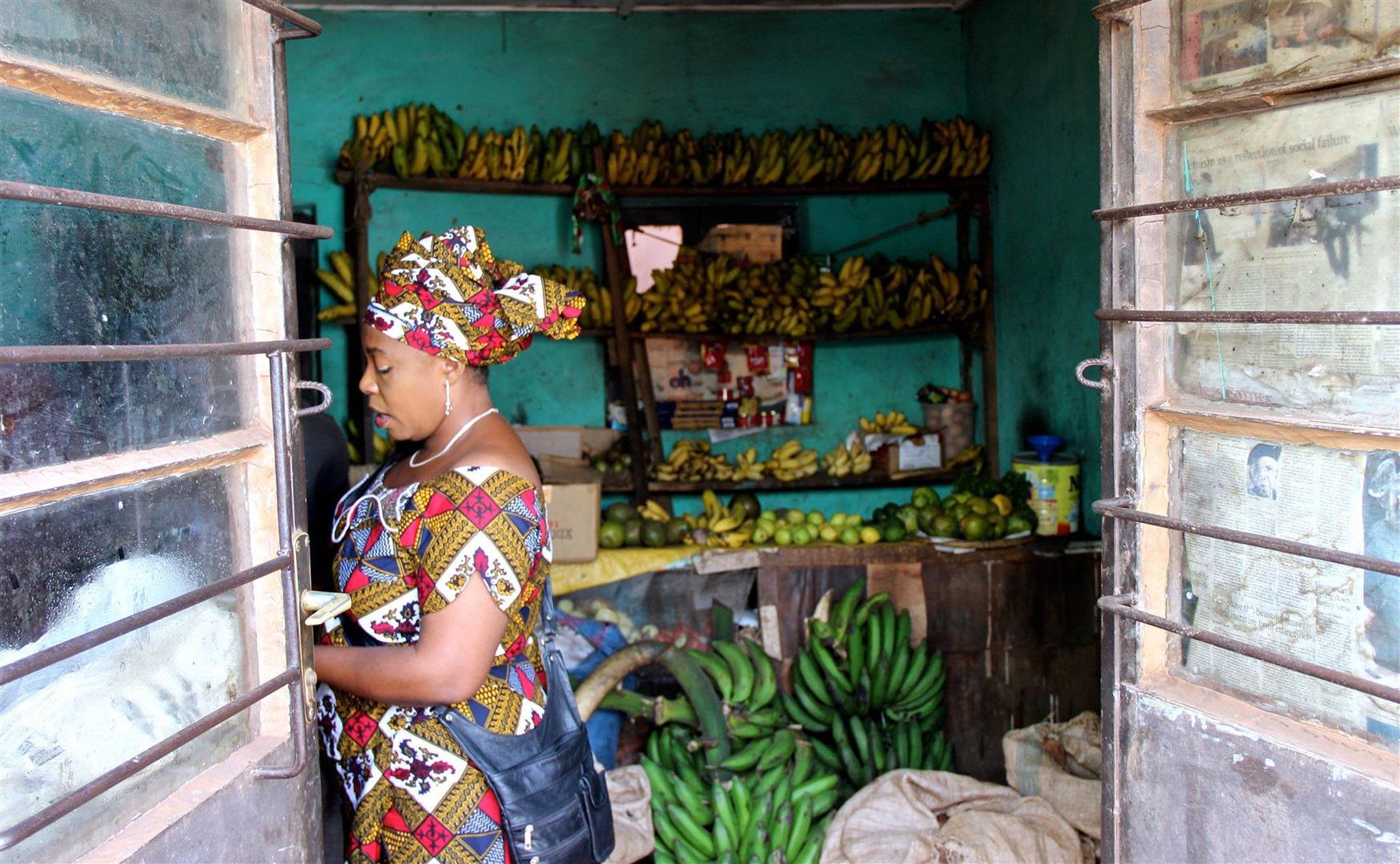
Women empowerment forms part of Rwanda’s tourism model
The Impact of Eco-Tourism in Rwanda on Locals
The tourism industry is actively empowering members of communities by making them key contributors to eco-tourism. As a nation, Rwanda takes collective responsibility for ensuring every visitor leaves with an incredible experience. Apart from its famous mountain gorillas, Rwanda truly shines in combining astonishing luxury with warm hospitality.
Undoubtedly, the renewed focus on tourism has brought a sense of meaning to the Rwandan people. And with their involvement, it’s well on its way to being a truly symbiotic relationship.
Increased funding raised by a reinvigorated industry assists in housing and community upliftment. In return, the people of Rwanda work together to ensure this is a destination that truly touches your heart. All in all, it makes for the perfect representation of the Rwandan culture, her community, and her people.
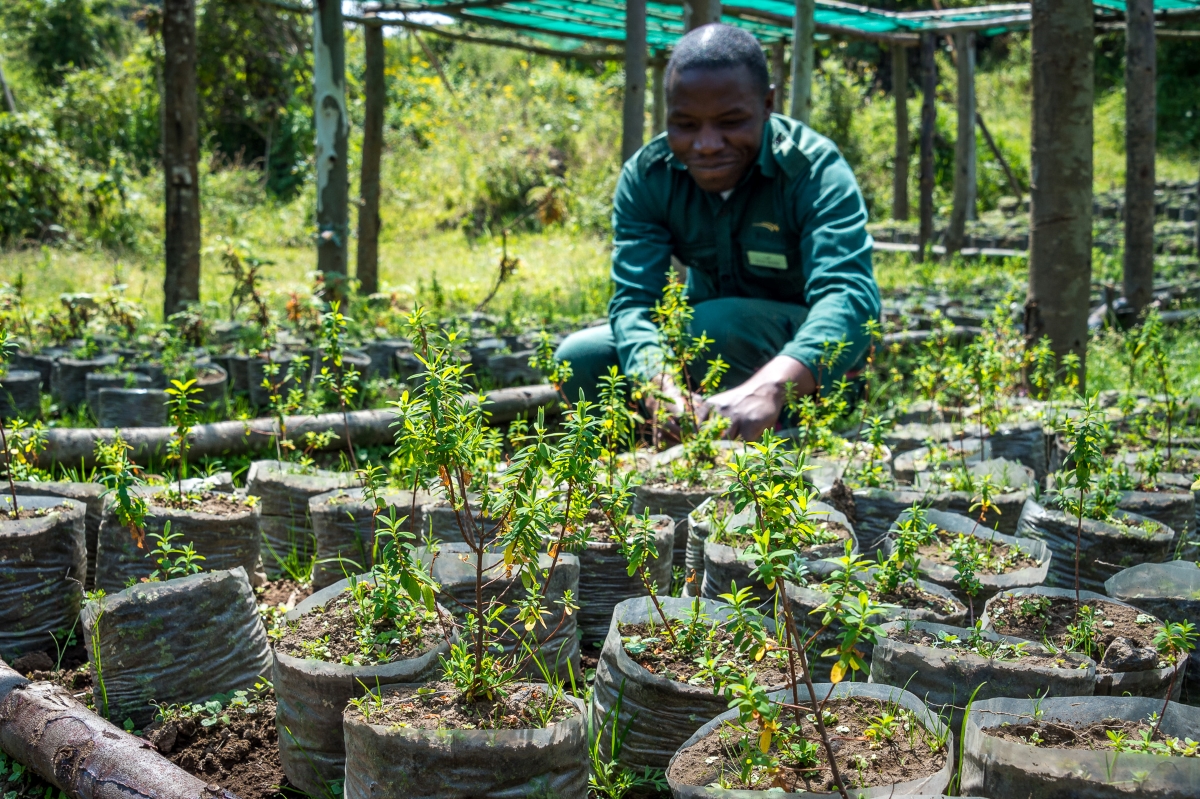
Eco-tourism in Rwanda starts and ends with its own people, Image Credit: Wilderness Bisate
Five Ways Eco-Tourism in Rwanda is Succeeding
Rwanda has implemented multiple eco-tourism initiatives, but here are just a few ways they’re making a difference.
1. Creating New National Parks
There are so many success stories in Rwanda when it comes to national parks, particularly Akagera, Nyungwe and Volcanoes National Parks. However, they keep fighting to protect Mother Nature by creating another legally protected area and the country’s fourth national park, Gishwati-Mukura National Park.
Through these national parks, they’ve also managed to reintroduce species to the area, like lions to the Akagera National Park after being extinct for two decades. They also reintroduced rhinos and kept strengthening the population in the country.
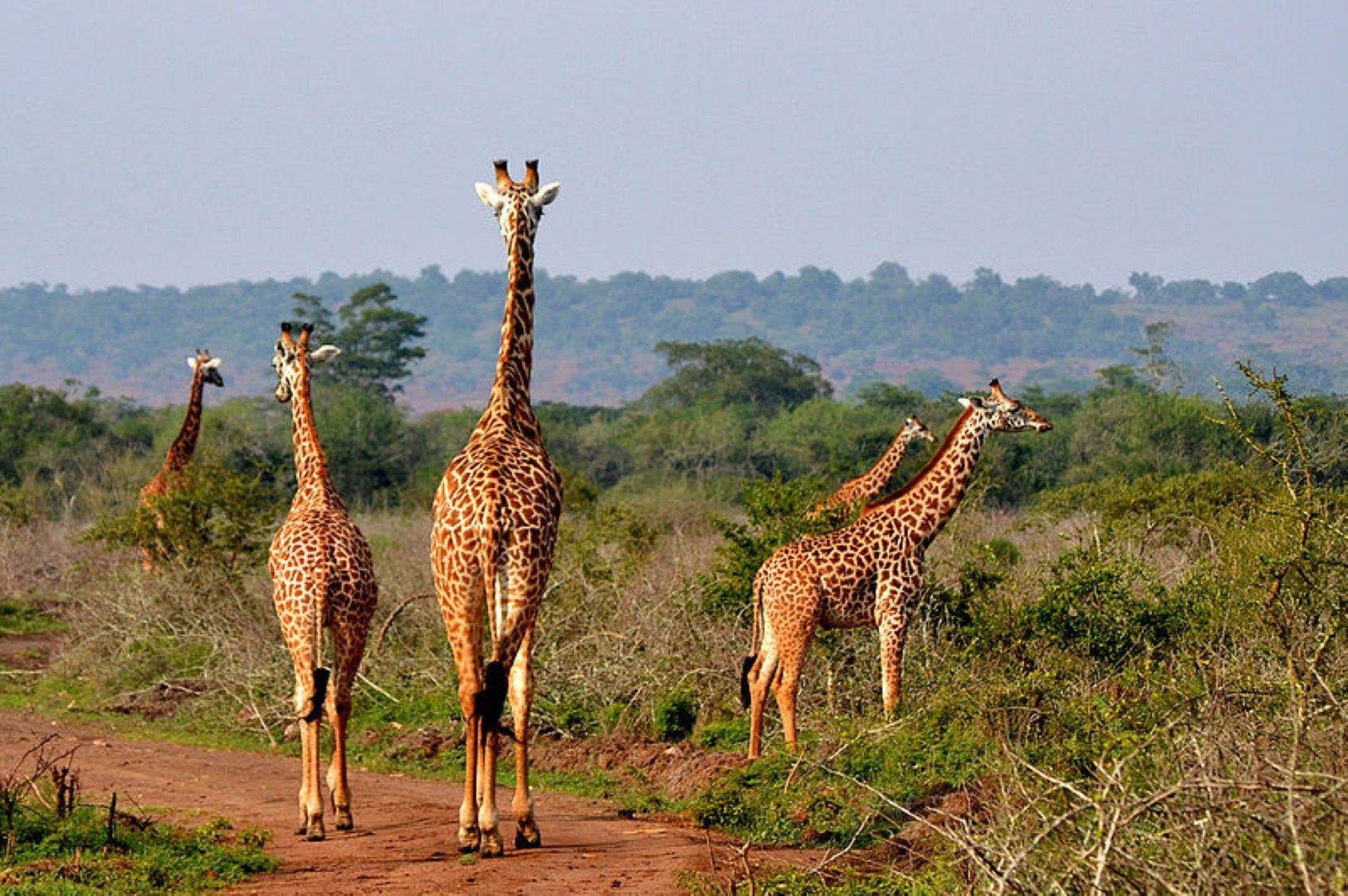
Giraffes roaming free in the Akagera National Park, Image Credit: Abhishek Singh.
2. Bringing Mountain Gorillas Back From The Brink of Extinction
Through eco-sensitive gorilla trekking and various other tourism initiatives, Rwanda has managed to protect and increase the endangered mountain gorilla population, making them the only ape species to move from being critically endangered to endangered.
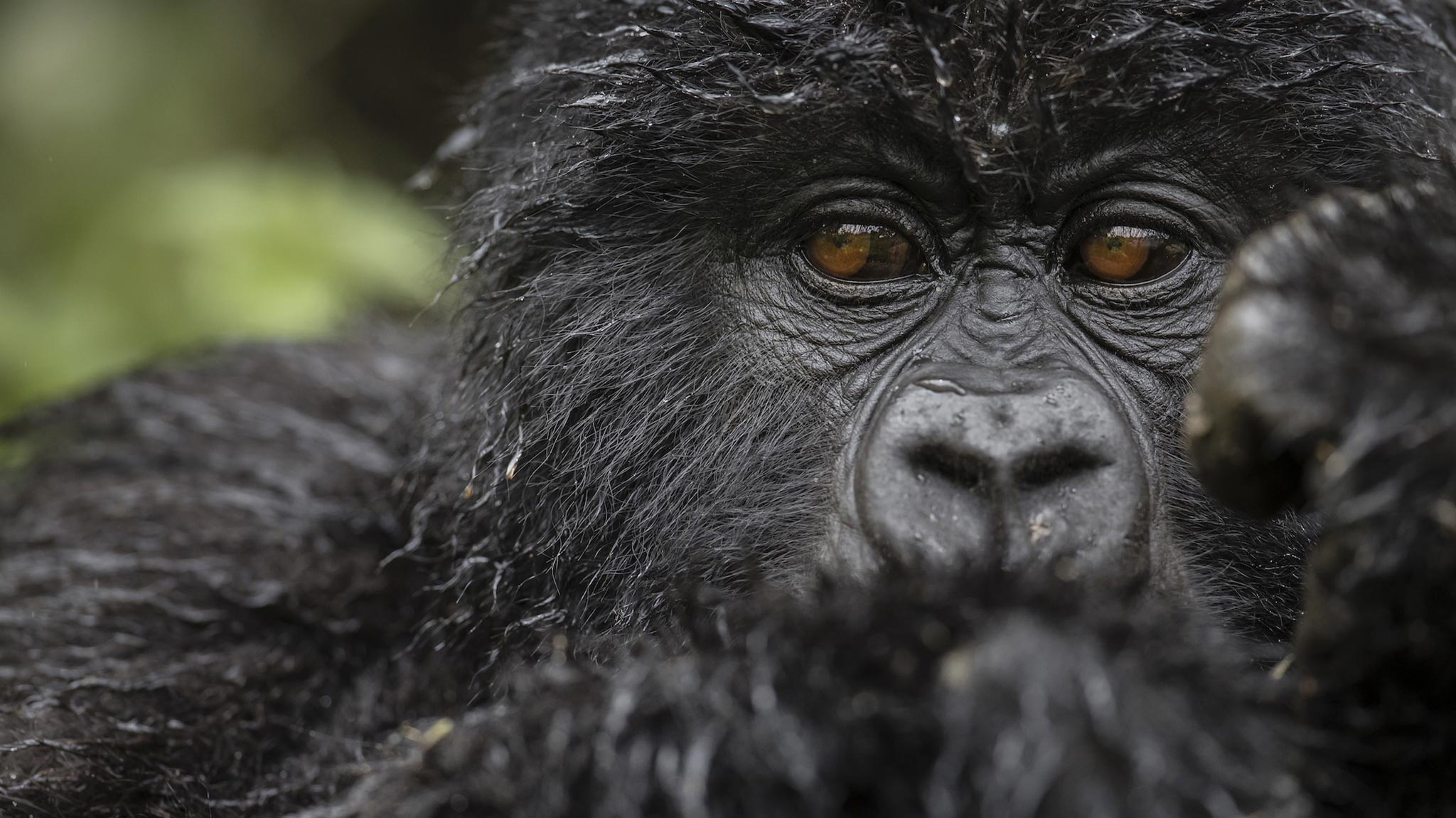
Rwanda is home to some of the world’s last remaining populations of mountain gorillas, Image Credit: Singita Kwitonda
3. Low-Impact Travel Experiences
Rwanda has taken low-impact travel in their stride by focusing on low-volume travel and working with luxury lodges that share these values.
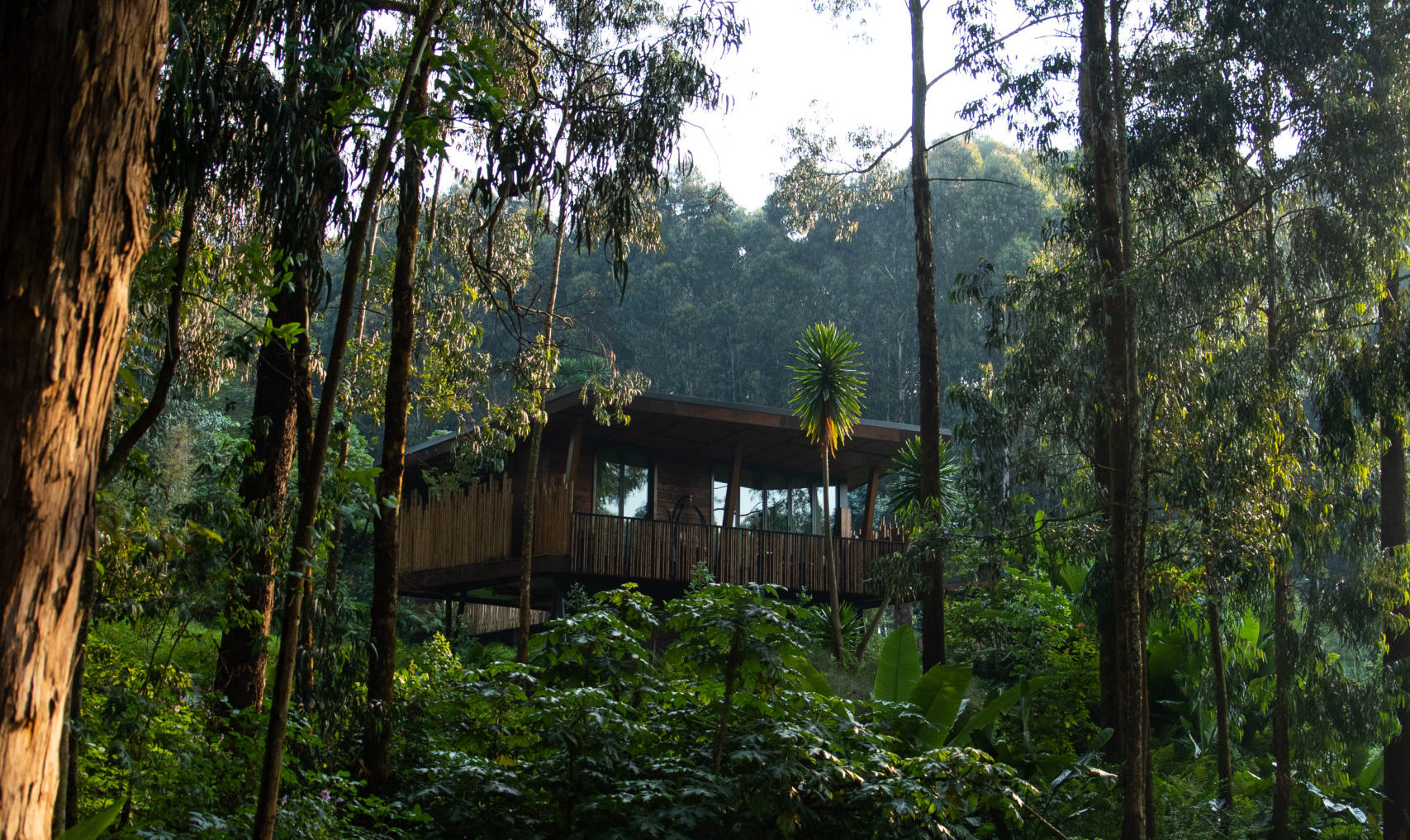
One&Only Gorilla’s Nest is a secluded and luxurious forest haven set amongst the trees
4. Keeping Locals in The Spotlight
The local people form the golden thread of all eco-tourism in Rwanda. Therefore, the country aims to uplift local communities by giving a percentage of tourism revenue to its surrounding communities, which fosters pride and makes eco-tourism more sustainable for the future.
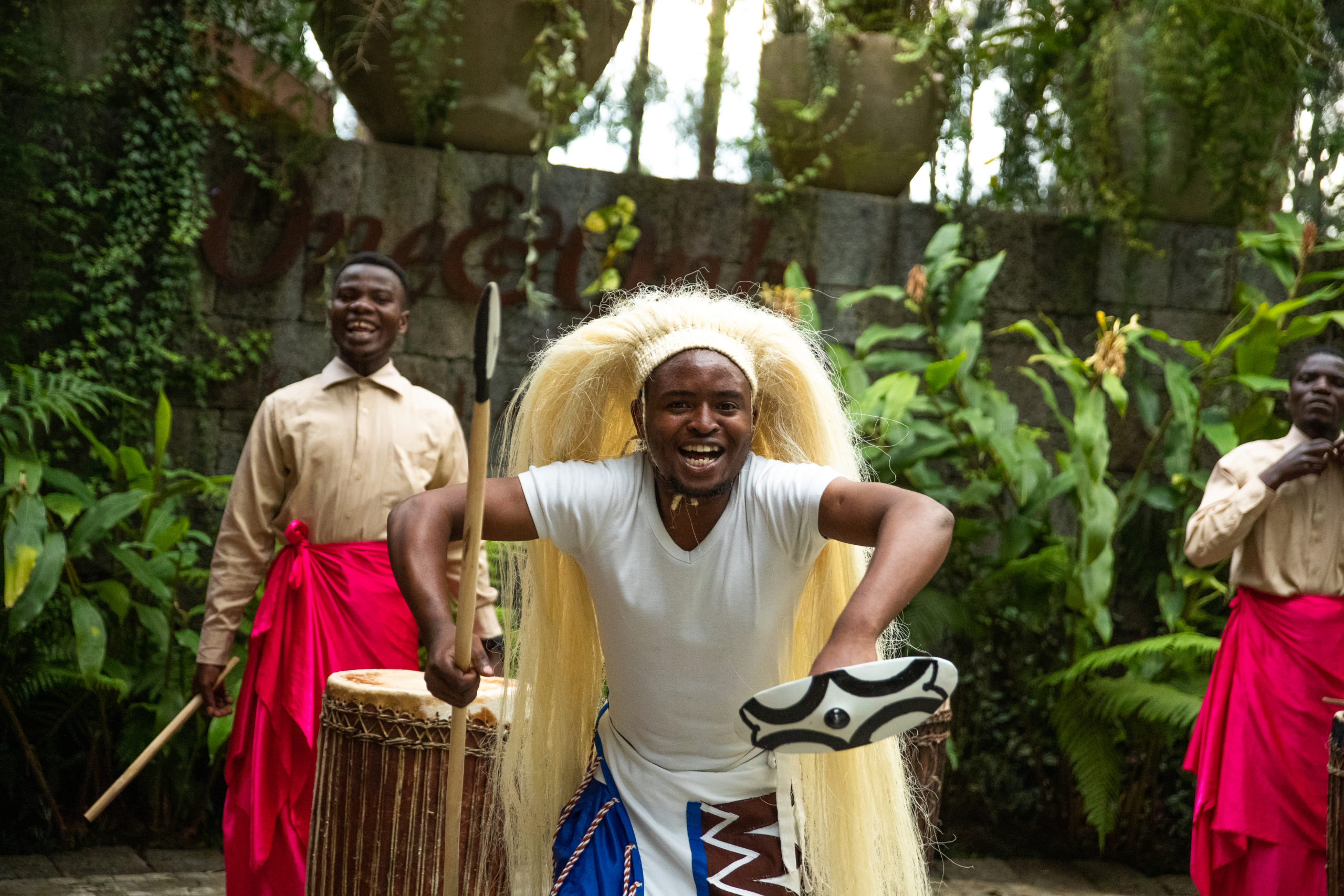
Eco-tourism in Rwanda is setting a benchmark for other African countries to follow
5. Incentivising Ecosystem Services
To inspire more people to focus on ecosystem services and promote environmental conservation, the Rwandan government introduced Payment for Ecosystem Services (PES). This effectively rewards service providers or an ecosystem service.
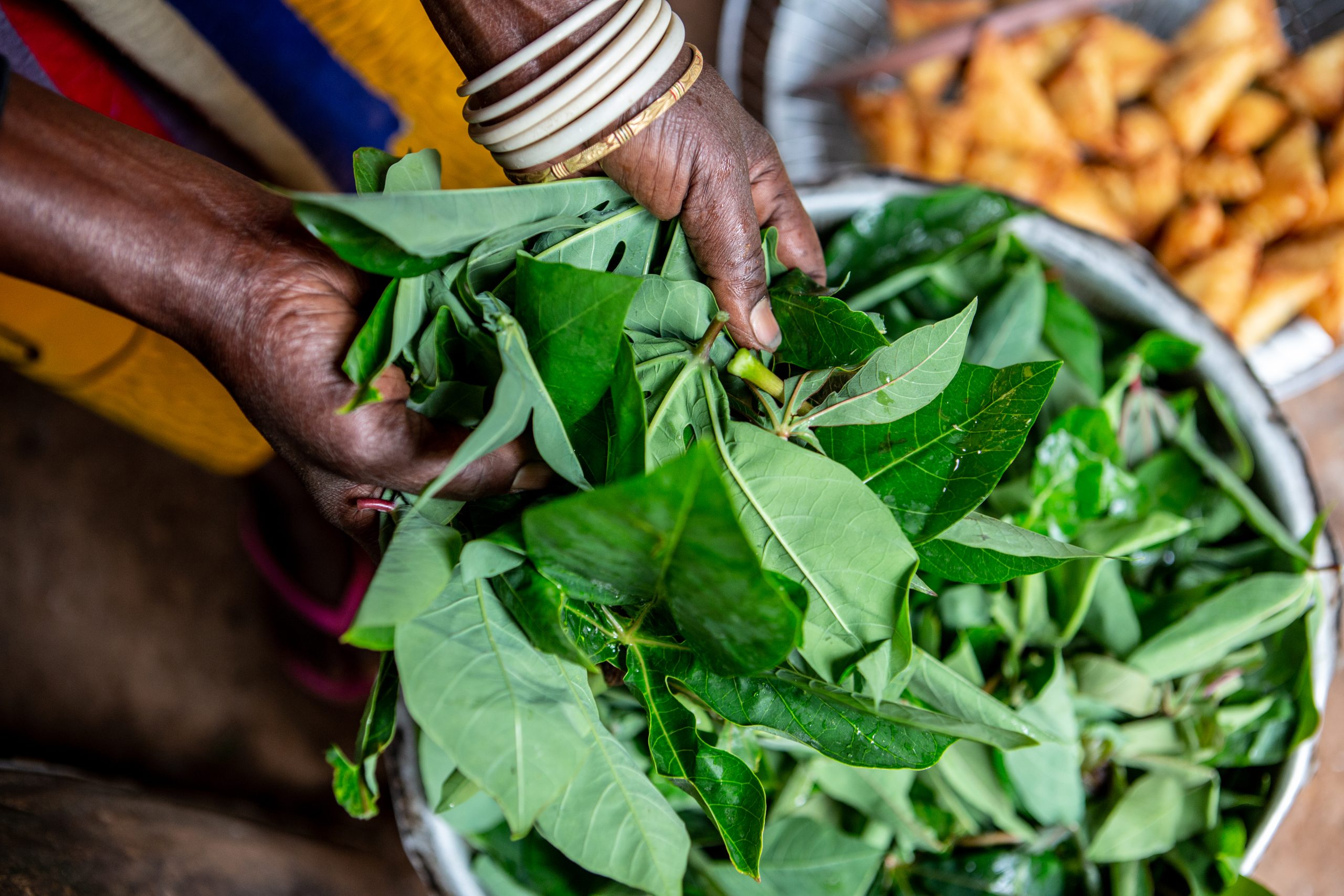
Rwanda is investing in a greener future
Let’s Get You to Rwanda
If you’re planning your next African adventure, Rwanda should be at the very top of your list. And, as African Travel Experts, Rhino Africa is here to help bring your next dream African holiday to life.
Contact us today, and let’s start planning the ultimate African adventure – tailored to you!


Feel Like an Explorer in Gonarezhou National Park
Imagine teleporting back into prehistoric times, when dinosaurs roamed Earth, and there was no artificial light source in sight or a rumbling engine in earshot. Enter a Gonarezhou National Park safari, an experience so utterly wild and remote that you’ll feel like you’re one of the last people on the planet. So, […]
ZimbabweImagine teleporting back into prehistoric times, when dinosaurs roamed Earth, and there was no artificial light source in sight or a rumbling engine in earshot. Enter a Gonarezhou National Park safari, an experience so utterly wild and remote that you’ll feel like you’re one of the last people on the planet. So, join me as we take a closer look at why a Gonarezhou National Park safari in Zimbabwe is one of our favourite African secrets…

How’s this for WOW, Image Credit: Chilo Gorge Safari Lodge
Gonarezhou, The Place of Elephants
Yes, I know, the word “Gonarezhou” is quite a mouthful, seeming like just a bunch of letters scrambled together. So, to help you pronounce it, repeat after me: “Gonna-Re-Zhoo”.
It means “place of elephants”, and although we unfortunately can’t promise dinosaur sightings, you can enjoy prehistoric-looking elephants, rhinos, and crocodiles instead!

Place of elephants and rich ecological diversity, Image Credit: Chilo Gorge Safari Lodge
Southern Africa’s Stripped Back Safari Star
Gonarezhou National Park is located in the southeast corner of Zimbabwe, bordering Mozambique, and is the country’s second-largest national park.
It’s massive and absolutely wild. In fact, it’s one of the most authentic safari experiences you get on our continent. If you want to really lose yourself in Mother Nature’s untamed beauty with no restraints, then this is a dream come true for you.
As it’s so remote and rugged, we recommend a fly-in safari with a charter flight from Harare International Airport to a private airstrip near the national park. We don’t recommend self-drives here, as you’re really heading into the belly of the wild.
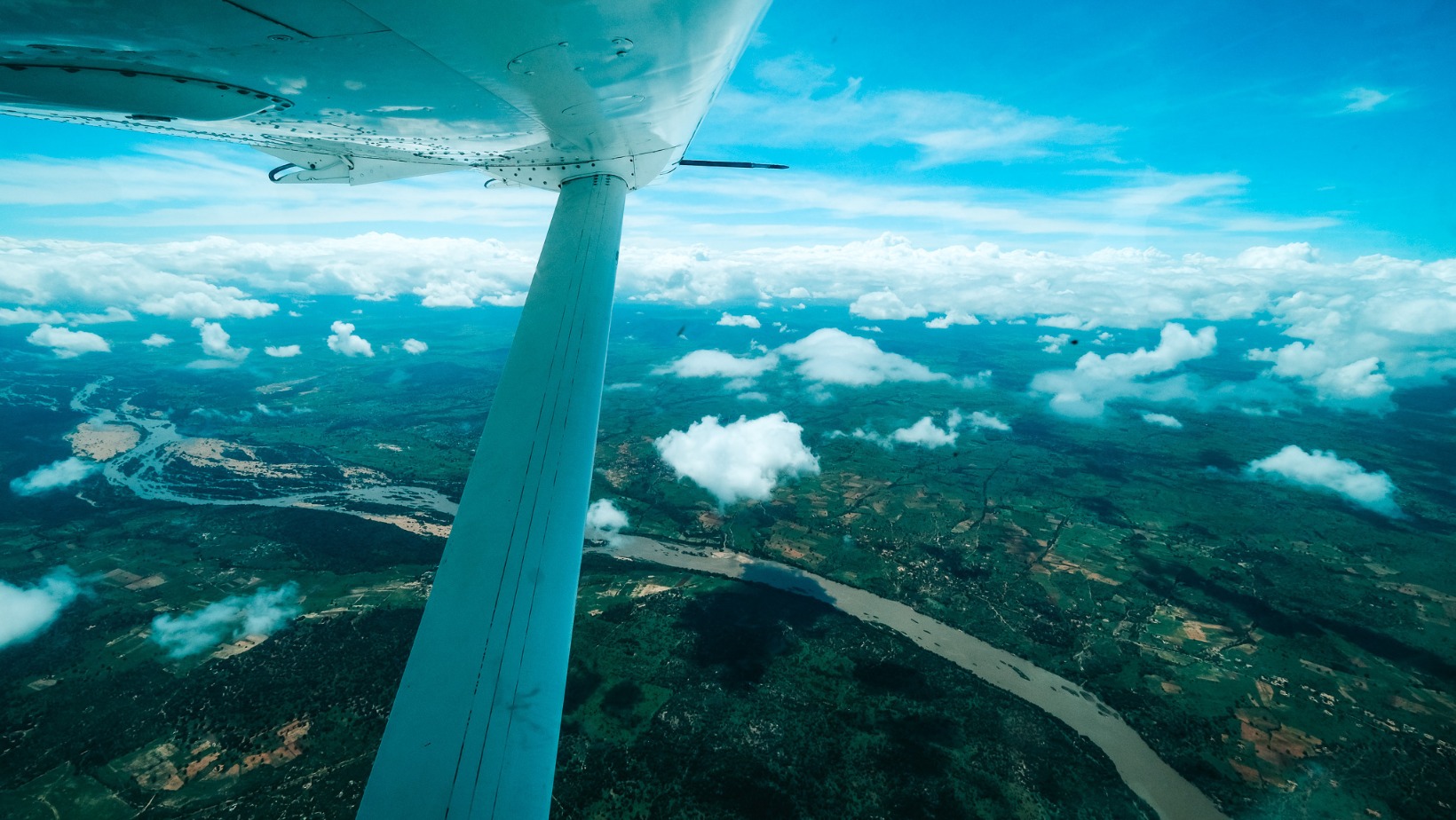
Enjoy aerial views upon arrival, Image Credit: Chilo Gorge Safari Lodge
A Glimpse of Gonarezhou’s Jurassic-Like Landscapes
When I said this national park is reminiscent of prehistoric times, I meant it. There are very few places in the world with such a variety of untouched ecological spaces.
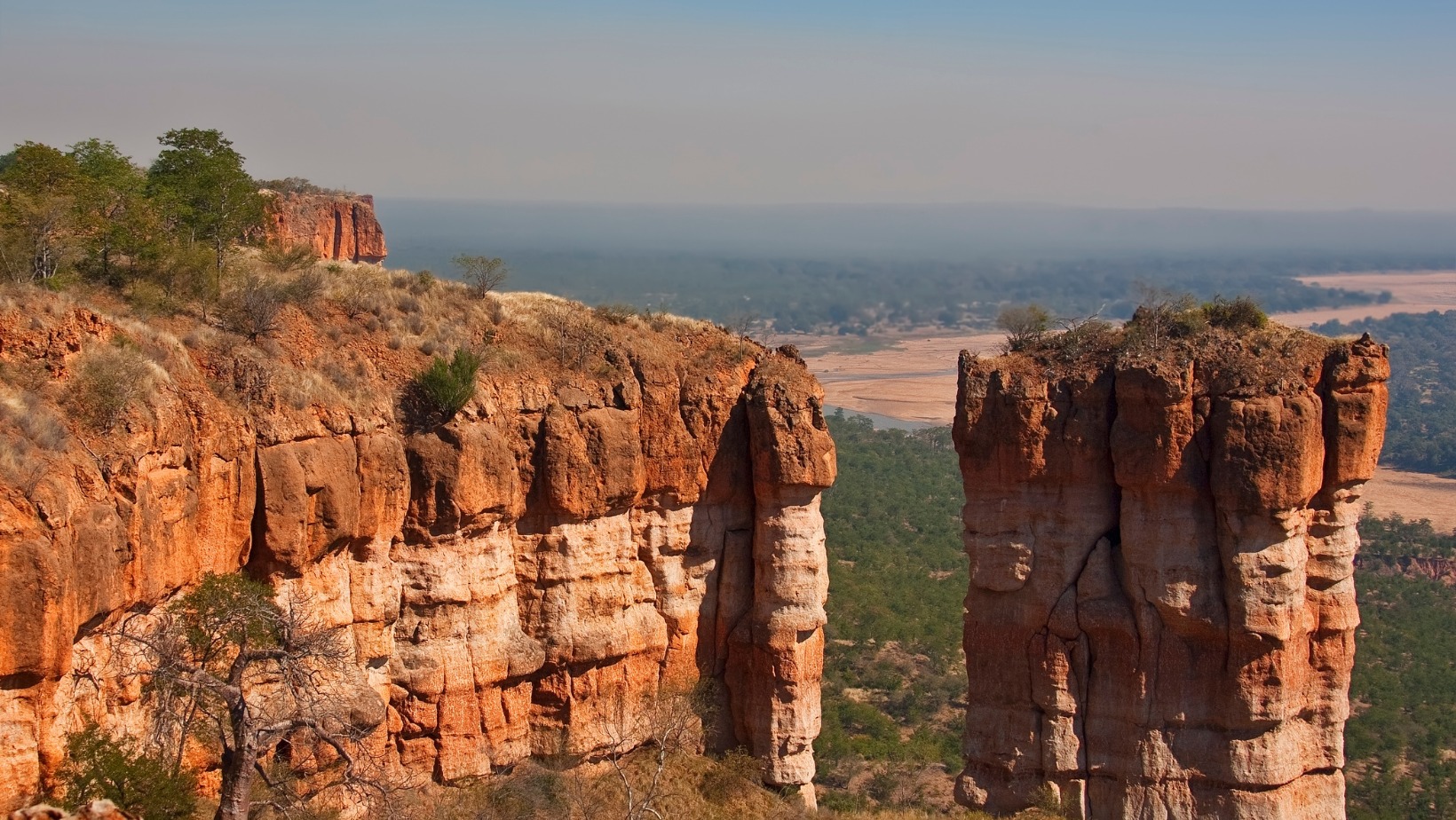
Mother Nature has the best paintbrush, Image Credit: Chilo Gorge Safari Lodge
Picture impresive reddish and white sandstone cliffs, overlooking sweeping Serengeti-like grasslands dotted with giraffes, nyalas, impalas and other wildlife roaming free. Next moment, you’re surrounded by woodlands, nyala berry trees, and winding rivers in between.
There are more than 493 plant species, of which 333 are woody species, and 160 are herbaceous species. However, I can’t help feeling there might be some species out there we are yet to discover… So, put on your best explorer hat for a Gonarezhou National Park safari!
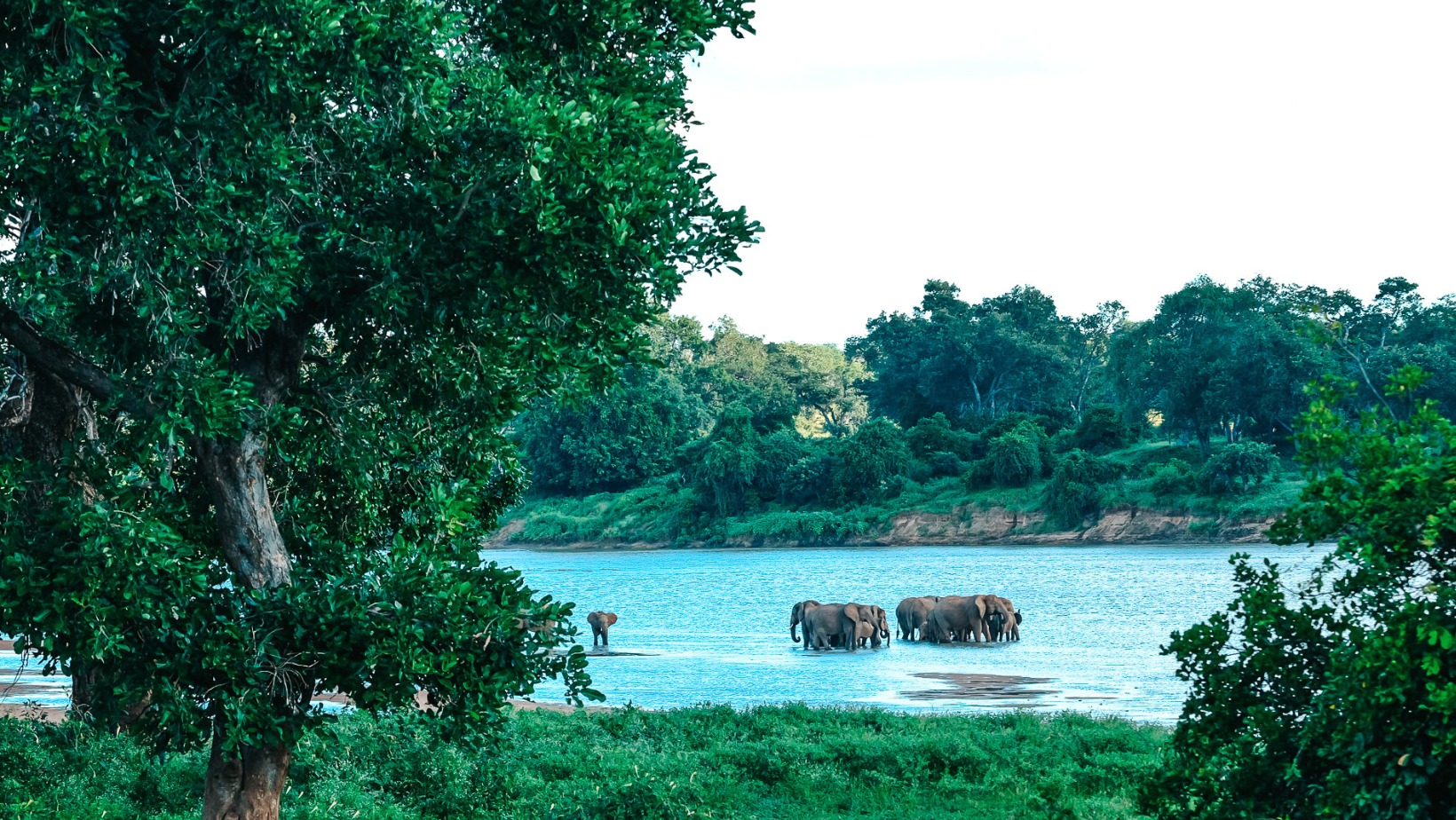
From woodlands to water, grasslands, and towering cliffs, Image Credit: Chilo Gorge Safari Lodge
What Wildlife Can I See on a Gonarezhou National Park Safari?
When on a Gonarezhou National Park safari, you’ll likely never encounter anyone else. It’s just so vast and such an off-the-beaten-track destination that you’ll feel like you have it all to yourself.
As the name suggests, you can see lots of elephants as it has a large population. And, yes, you can also see the rest of the Big 5, namely the lion, leopard, rhino, and African buffalo.
On land, there are 89 large mammal and 61 small mammal species roaming free here. There are also 116 reptiles, 34 amphibians, and more than 50 fish species.
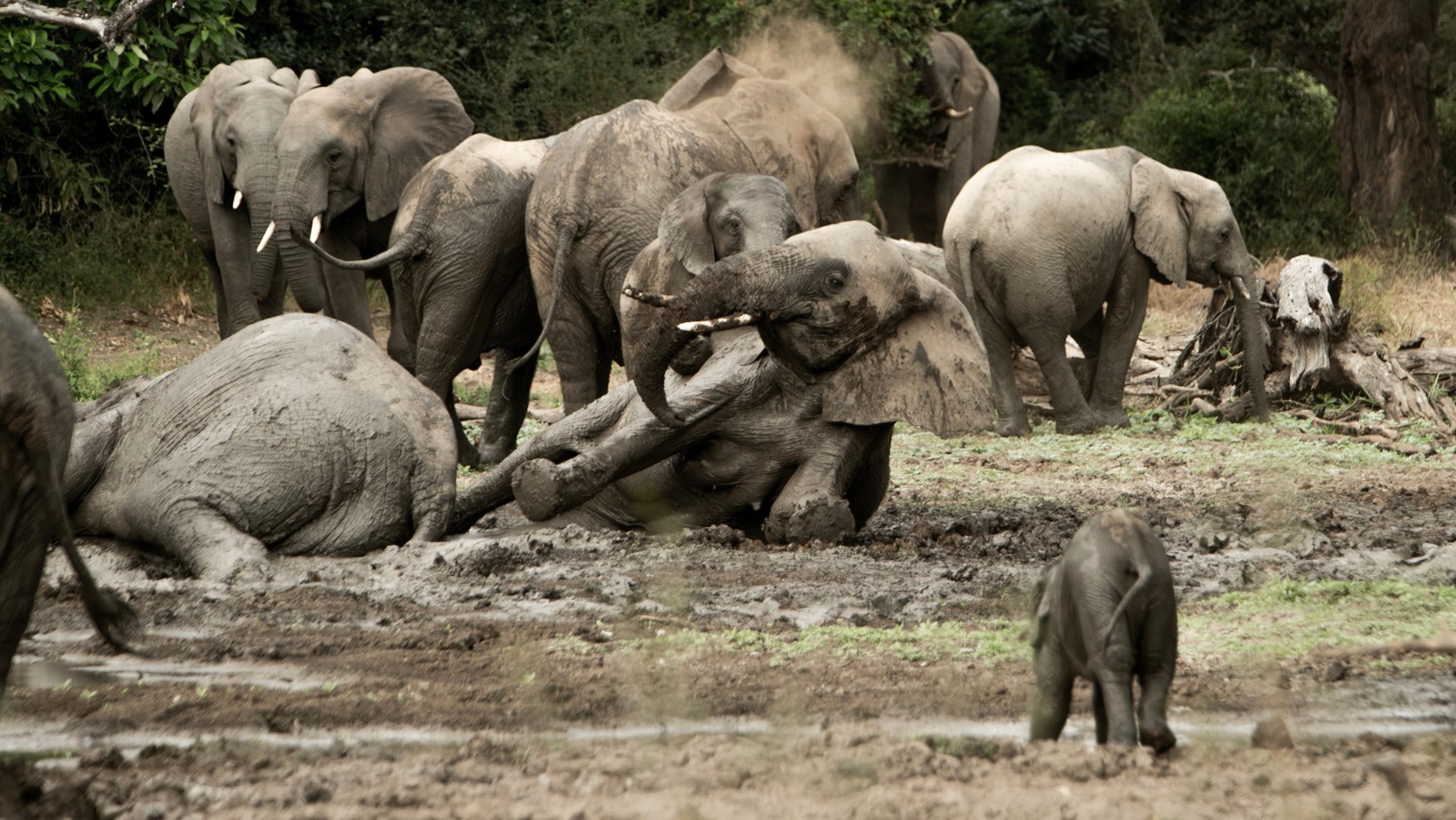
Did someone say “spa day?”, Image Credit: Chilo Gorge Safari Lodge
It also makes sense that you can see some endangered species since this is such a unique setting. For example, the black rhino, African wild dog, lappet-faced vulture, and the near-endemic turquoise killifish are all found here.
The Save River is a popular gathering place for wildlife, and we love that the water can look quite clear, so you can easily spot those species lurking beneath the surface!

Hippos wallowing in the Save River, Image Credit: Chilo Gorge Safari Lodge
Where to Stay in Gonarezhou National Park
We recommend you stay at Chilo Gorge Safari Lodge when visiting Gonarezhou National Park. We love that it’s perched high on the cliff, overlooking prime views of the ever-busy Save River. The private balconies are the perfect spot to just sit and watch the wildlife go about their business undisturbed.
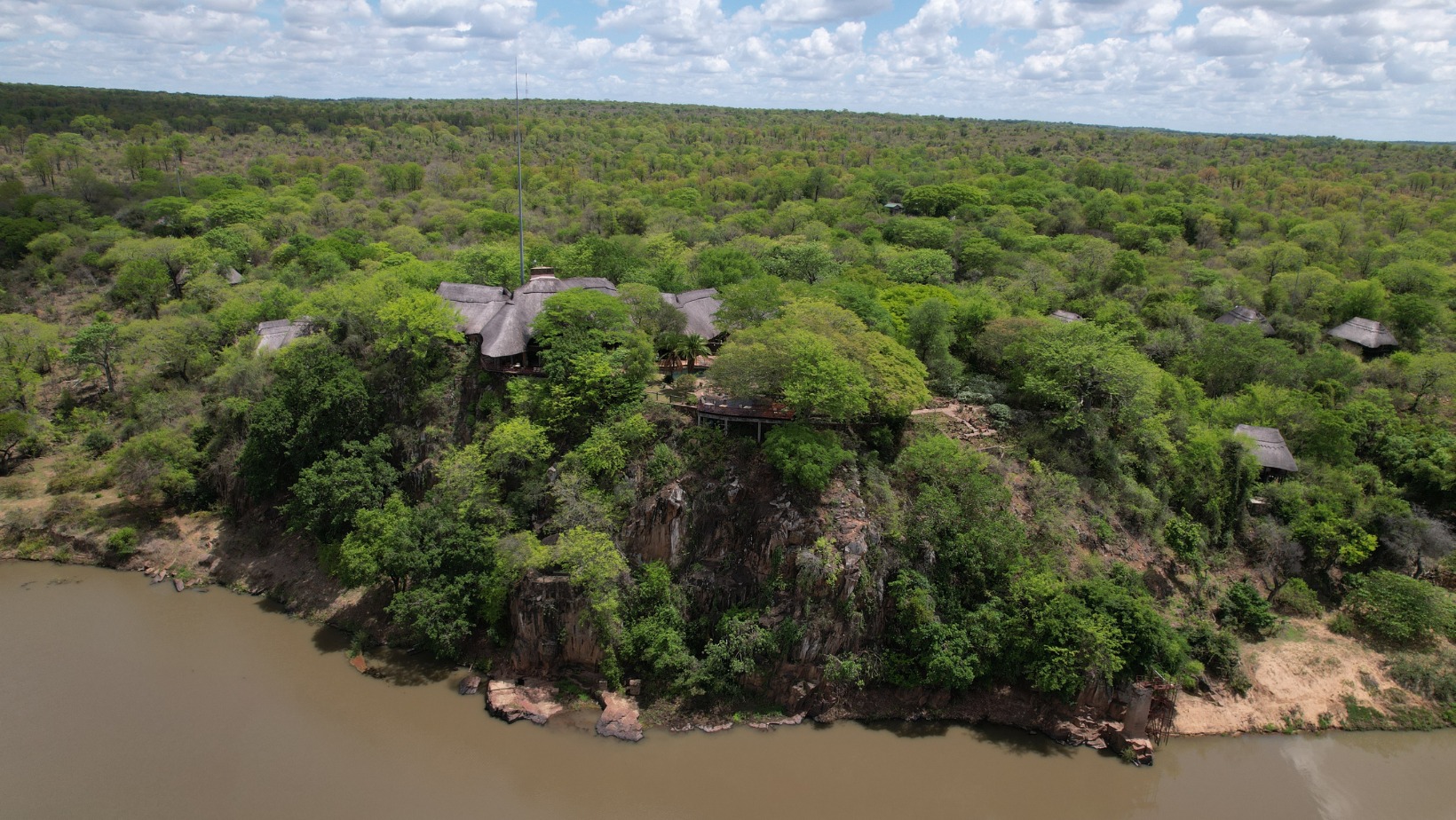
Best seat in Gonarezhou, overlooking the Save River, Image Credit: Chilo Gorge Safari Lodge
The pool also overlooks this view, and let’s just say that sunset will be a highlight of your every day in Gonarezhou National Park. Get ready to take lots and lots of photos!
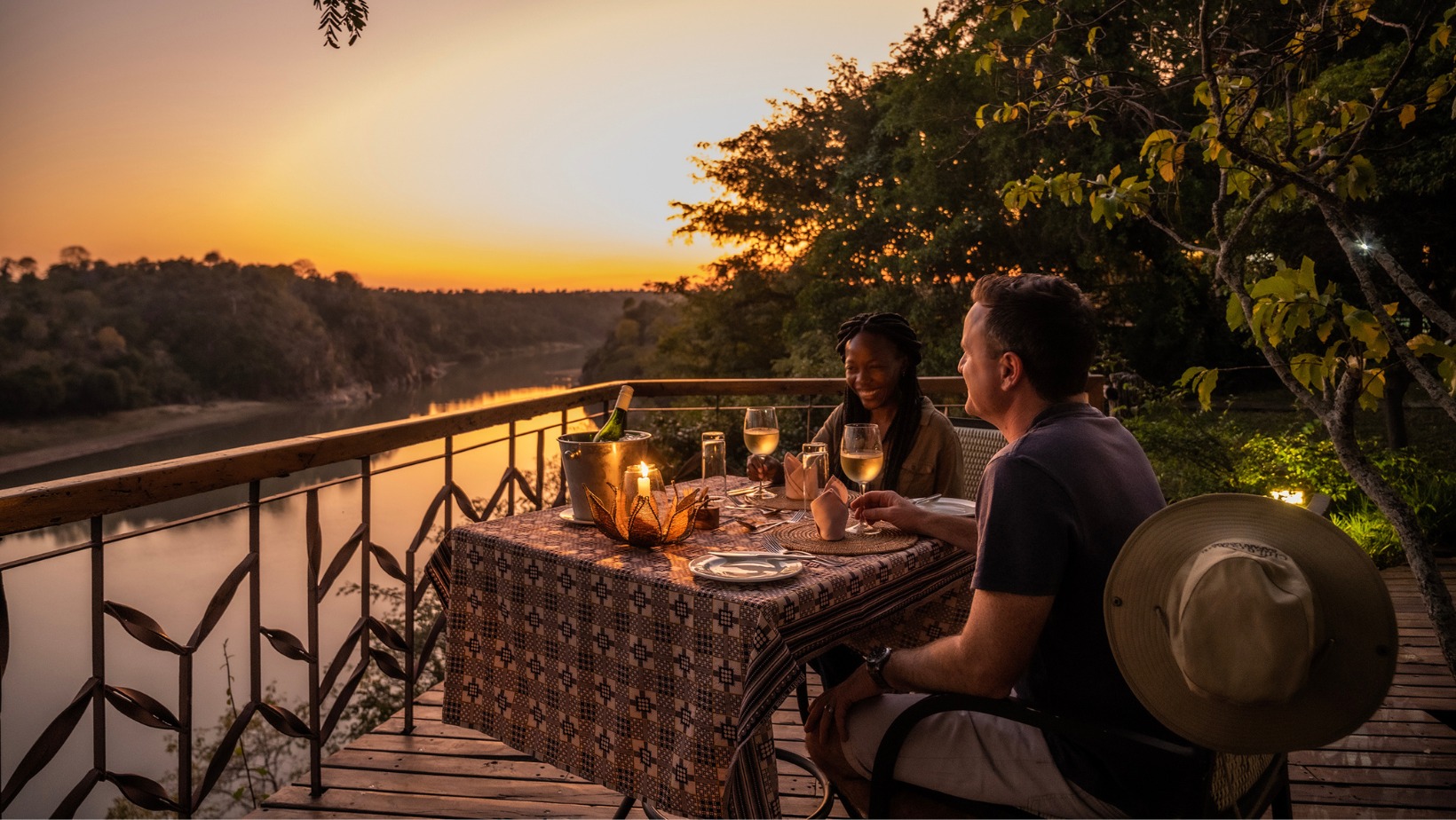
Sit and stare at the sunset, Image Credit: Chilo Gorge Safari Lodge
Explore the Gonarezhou National Park
There are many different safari activities to enjoy on a Gonarezhou National Park safari. When going on game drives, you might have to take a slight detour… on a boat!
Yes, often the terrain is so wild that you have to jump off your game drive vehicle, onto a boat to cross a river, and then on a diffrent vehicle. We love how this just adds another layer of adventure to the experience.
You can also go on walking safaris for a more immersive, up-close exploration of the vegetation and smaller details.

The best kind of drive is a game drive, Image Credit: Chilo Gorge Safari Lodge
Take the Adventure up a Notch
Let’s get even wilder by heading out on a fly-camping adventure! Yes, it’s camping in its most basic form (without you having to pitch any tents, of course. You just pitch up!). Think unfiltered nature all around, sitting around the crackling fire, and feeling that deep feeling of inner peace settle over you.
This activity is for the true adventurer who will enjoy bucket showers, hearty yet basic meals, and just meeting Mother Nature face-to-face.
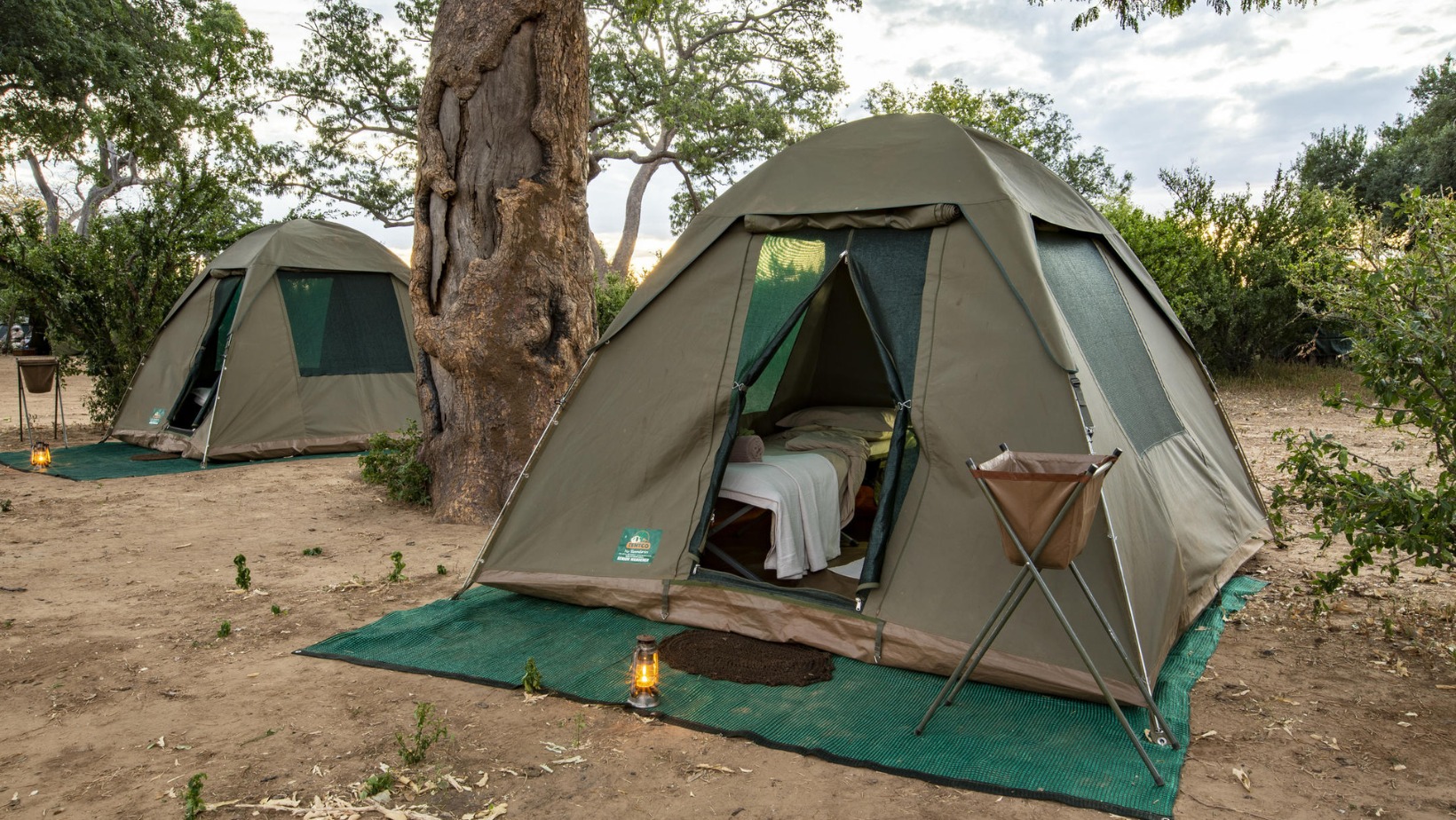
Camp out in the wilderness, Image Credit: Chilo Gorge Safari Lodge
Add a Dash of Culture to Your Gonarezhou Safari
As a lodge that focuses on community-led conservation, Chilo Gorge Safari Lodge works with and supports a wide range of initiatives that aim to bring community and conservation closer while also showing guests visiting Gonarezhou National Park how their travels have a positive effect on both.
When staying at Chilo Gorge Safari Lodge, you can learn more about the local Shangaan culture, including their farming methods, cooking methods, natural medicine, and crafts.

Step into the Shangaan locals’ world, Image Credit: Chilo Gorge Safari Lodge
Let’s Take You on a Gonarezhou National Park Safari
If you’re an explorer at heart who wants more from their travels than the standard, expected tourist sights, then Gonarezhou National Park is for you. Our Travel Experts know this hidden gem inside out and can plan a safari to make your heart sing songs you never knew it could.
Plus, we’ll also recommend other destinations you can explore that pair beautifully with Gonarezhou National Park. For example, we highly recommend you visit Victoria Falls while in Zimbabwe, and adding a stop in beach destination Mozambique is a breeze.
Reach out today, and let’s start planning! See you in Africa.
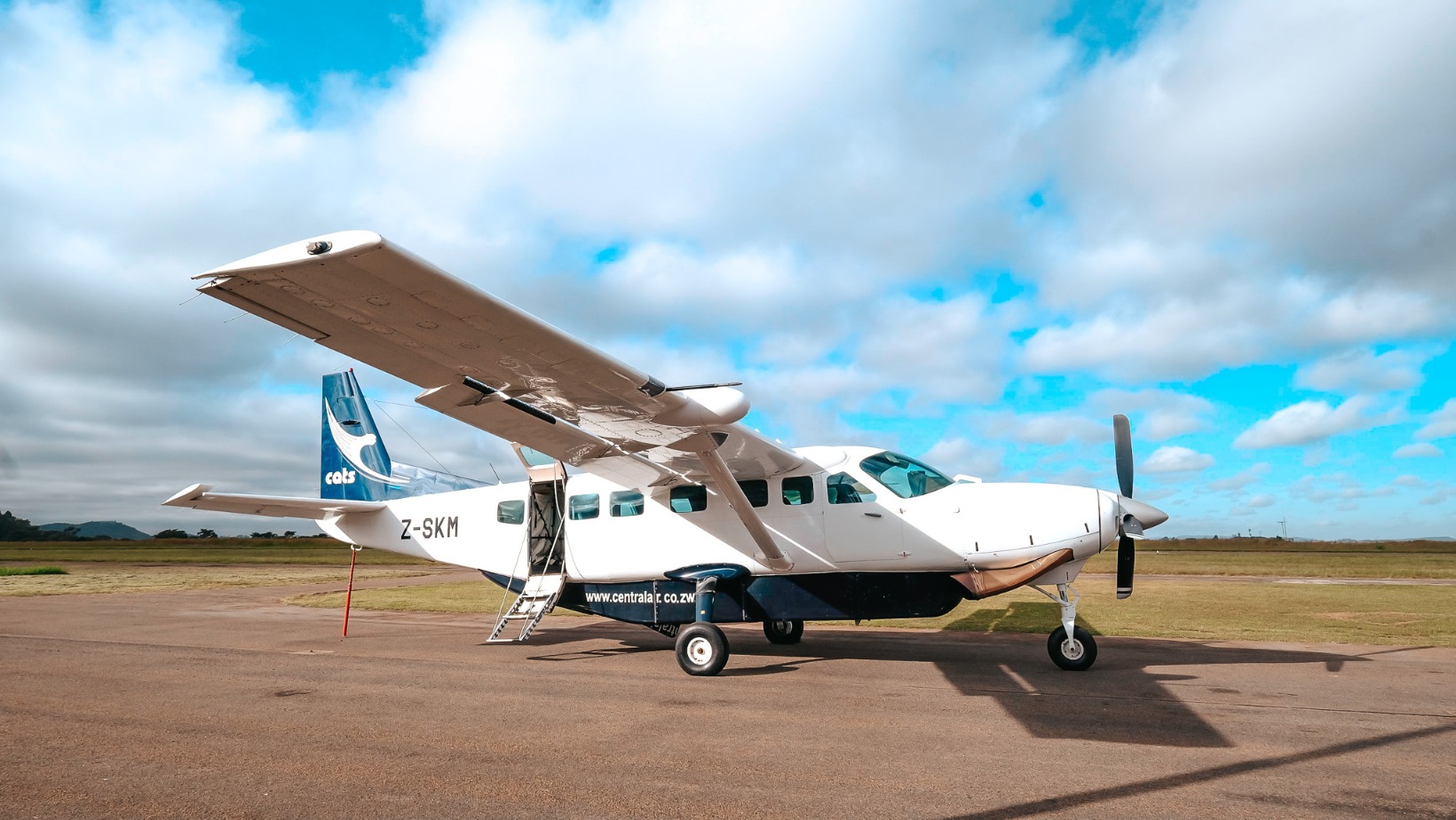
Ready, set, Africa! Image Credit: Chilo Gorge Safari Lodge
Featured Image Credit: Chilo Gorge Safari Lodge
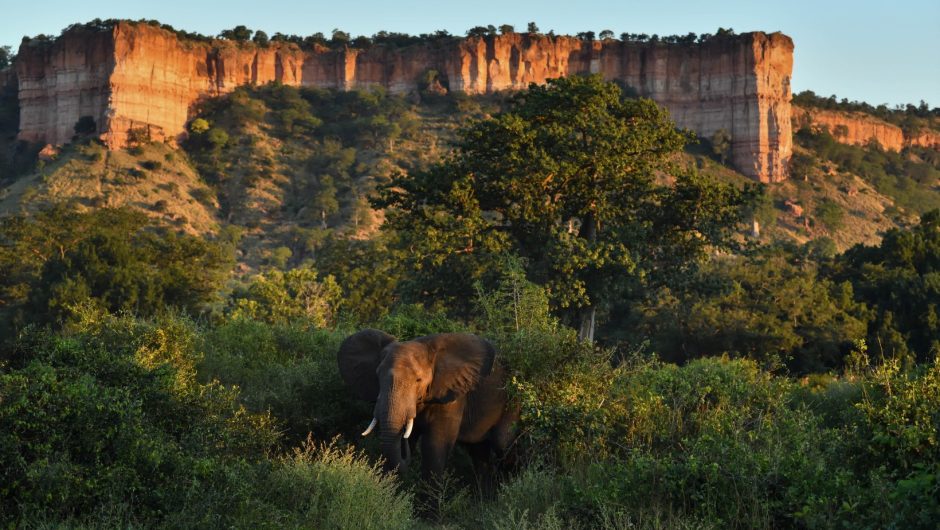
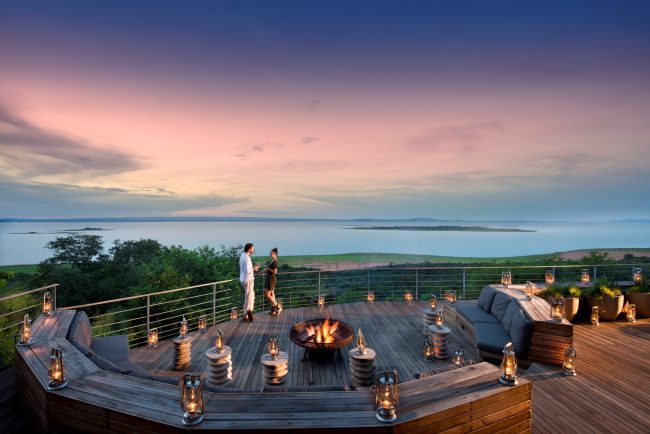
Why Your Next Holiday Should be a Lake Kariba Safari
Deciding where to go on your next African holiday can seem like an impossible choice, as there are so many wondrous destinations to choose from! Well, the good news is that we know what you should add to your itinerary next… a Lake Kariba safari! […]
ZimbabweDeciding where to go on your next African holiday can seem like an impossible choice, as there are so many wondrous destinations to choose from! Well, the good news is that we know what you should add to your itinerary next… a Lake Kariba safari! Whether it’s for a family holiday, a romantic getaway, or anything in between, Zimbabwe has it all. Here’s why we know you’ll love it.

Elevated Lake Kariba accommodation, Image Credit: Bumi Hills Safari Lodge
Leaving on a Jet Plane
There is a specific kind of silence just before a plane takes off. The aircraft is rumbling beneath you, almost quivering. Then suddenly, in a remarkable burst of speed for something so large, the plane is off, racing down the runway before finally being airborne, signalling your trip’s official start.
And suddenly, as the clouds part, you see it, crystal clear waters dotted with rolling hills and lush greenery. It has an almost Riviera-like look to it but better because this is Lake Kariba – the world’s largest man-made freshwater lake in the world!
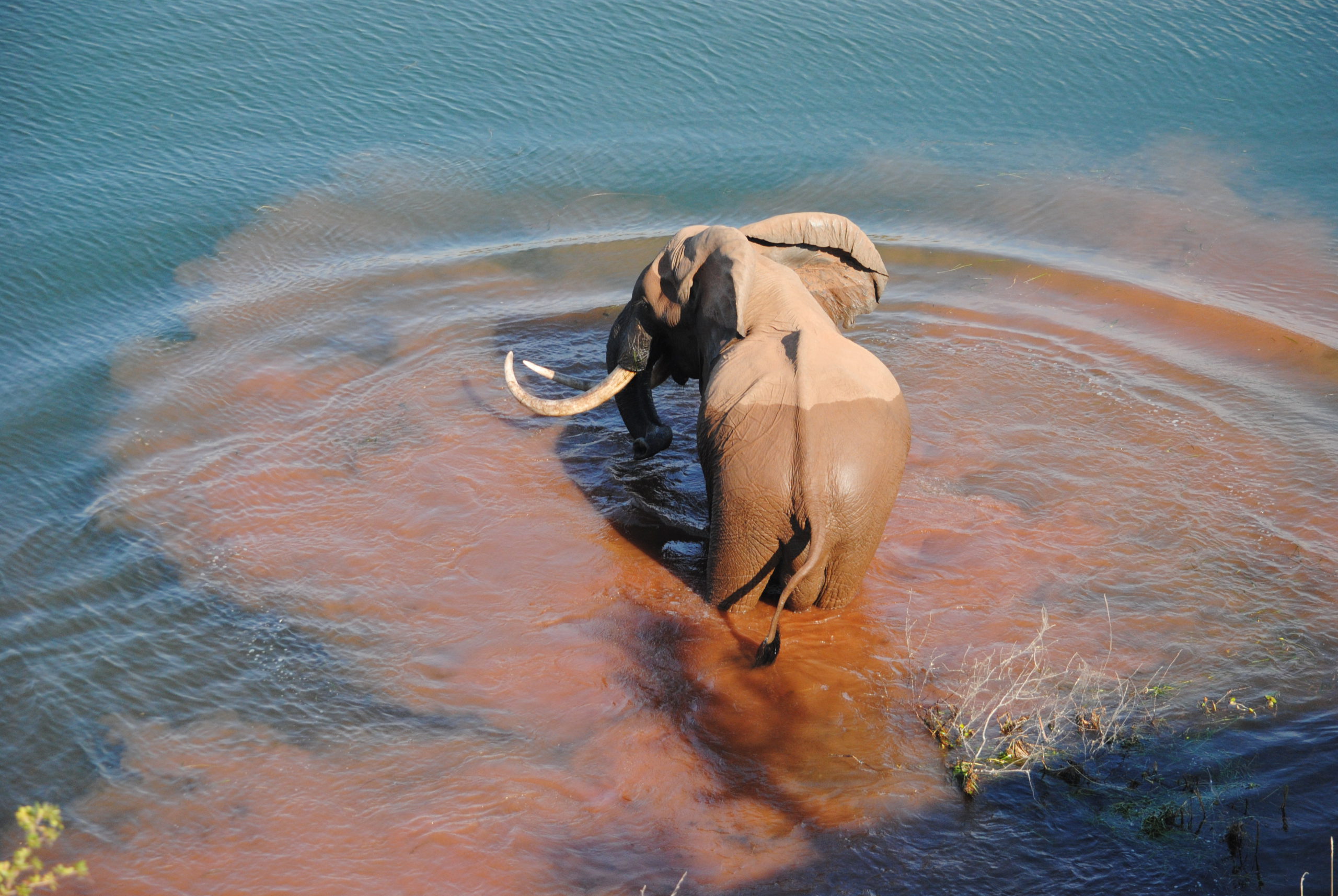
Kariba has an immense biodiversity, Image Credit: Changa Safari Camp
Your Lake Kariba Safari
Whether you’re travelling with the fam, or deepening those romantic ties, you’ll love a Lake Kariba safari. Here’s where we recommend you go for every type of holiday.
Family-Friendly Fun
It’s that time of year again when the whole family gears up for the long-awaited holiday, whether it’s a road trip or a flight. There’s always that last-minute rush to ensure everyone has packed everything they need.
But all the chaos will melt away the moment you set foot in Bumi Hills Safari Lodge, greeted by the stunning infinity pool and the serene view of the lake from your balcony.
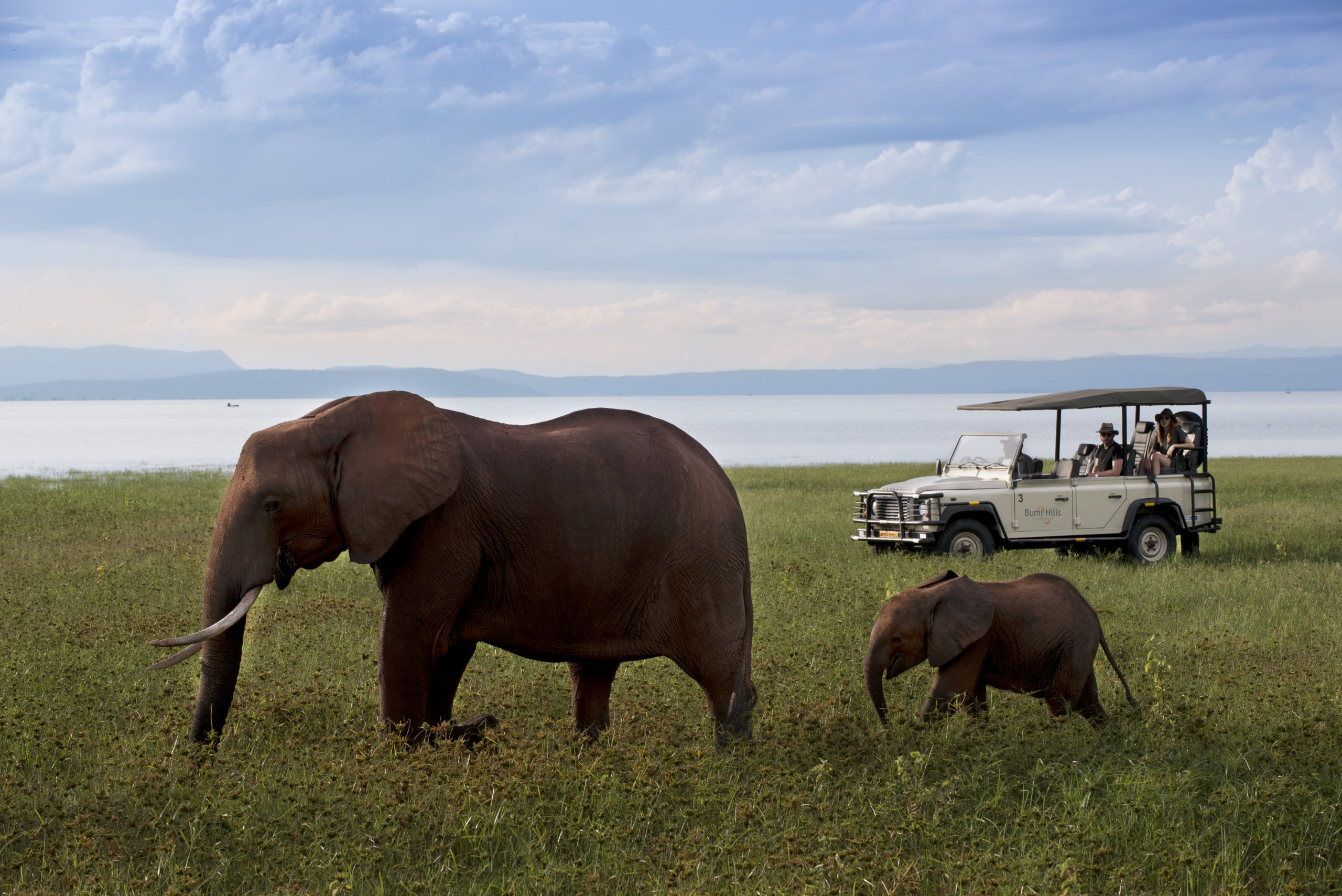
A game drive is the perfect start to the day, Image Credit: Bumi Hills Safari Lodge
1. Game Drive
Your first day in Kariba should definitely start with a game drive! The 5 AM wake-up call might sound early, but you’ll be so excited that you’ll jump right out of bed. Plus, there will be coffee!
You and your family will hop up onto the game vehicle, snuggle up, and enjoy the thrilling feeling of the wind rushing through your hair as you search for the Big 5.
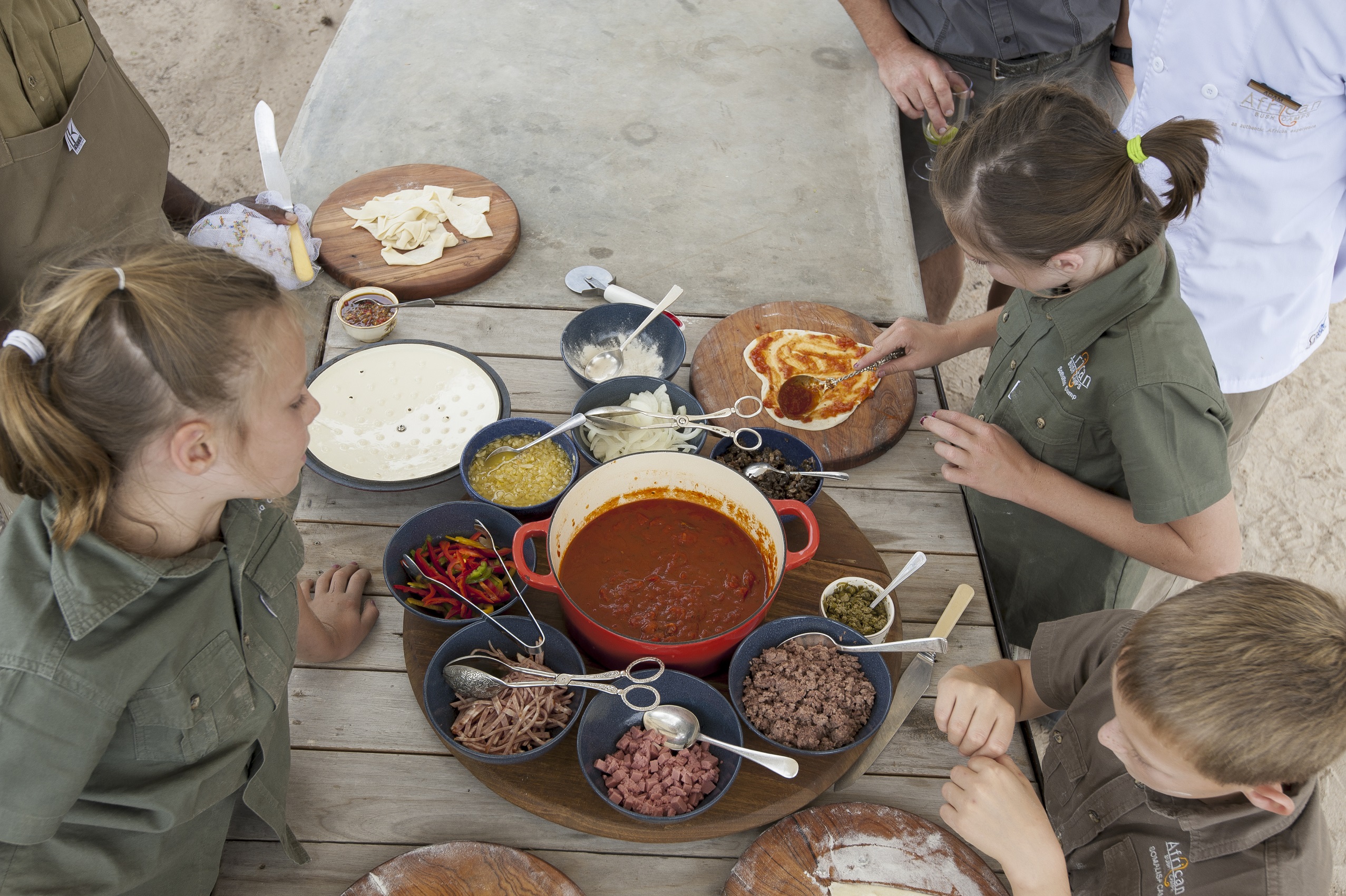
It’s never too early to learn how to cook, Image Credit: Bumi Hills Safari Lodge
2. Kids Club
The kids will be well looked after at the lodge’s dedicated kids club – the Ngwana Club. From nature walks around camp and storytelling to cultural arts and crafts and cub club cooking classes, boredom won’t be an option!
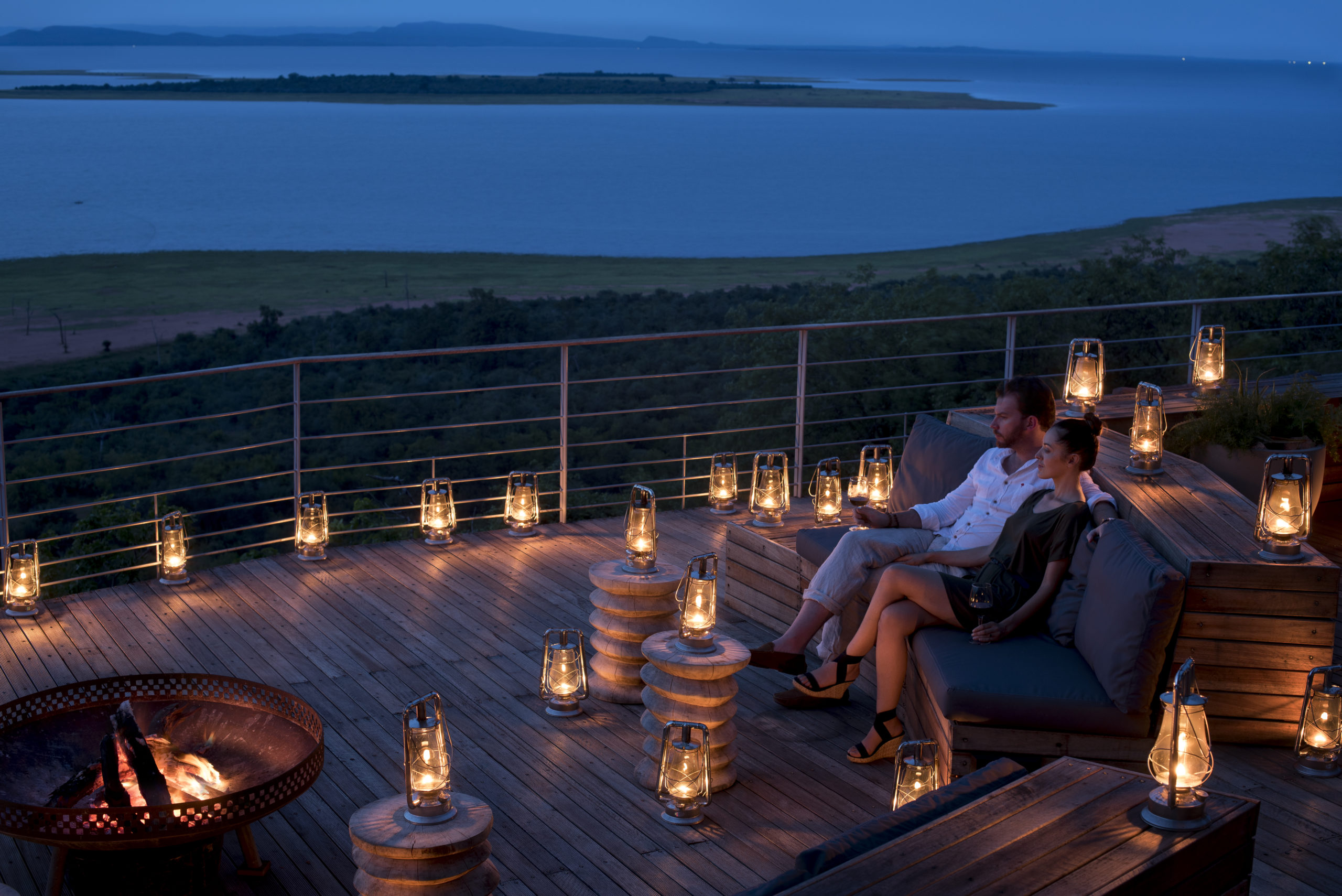
Just relax and soak in the views, Image Credit: Bumi Hills Safari Lodge
3. Private Dining
While this may be a family holiday, everyone needs a little “me”, or perhaps “we” time. As the sun sets, slip into some date night finery and enjoy a private dinner overlooking Lake Kariba.
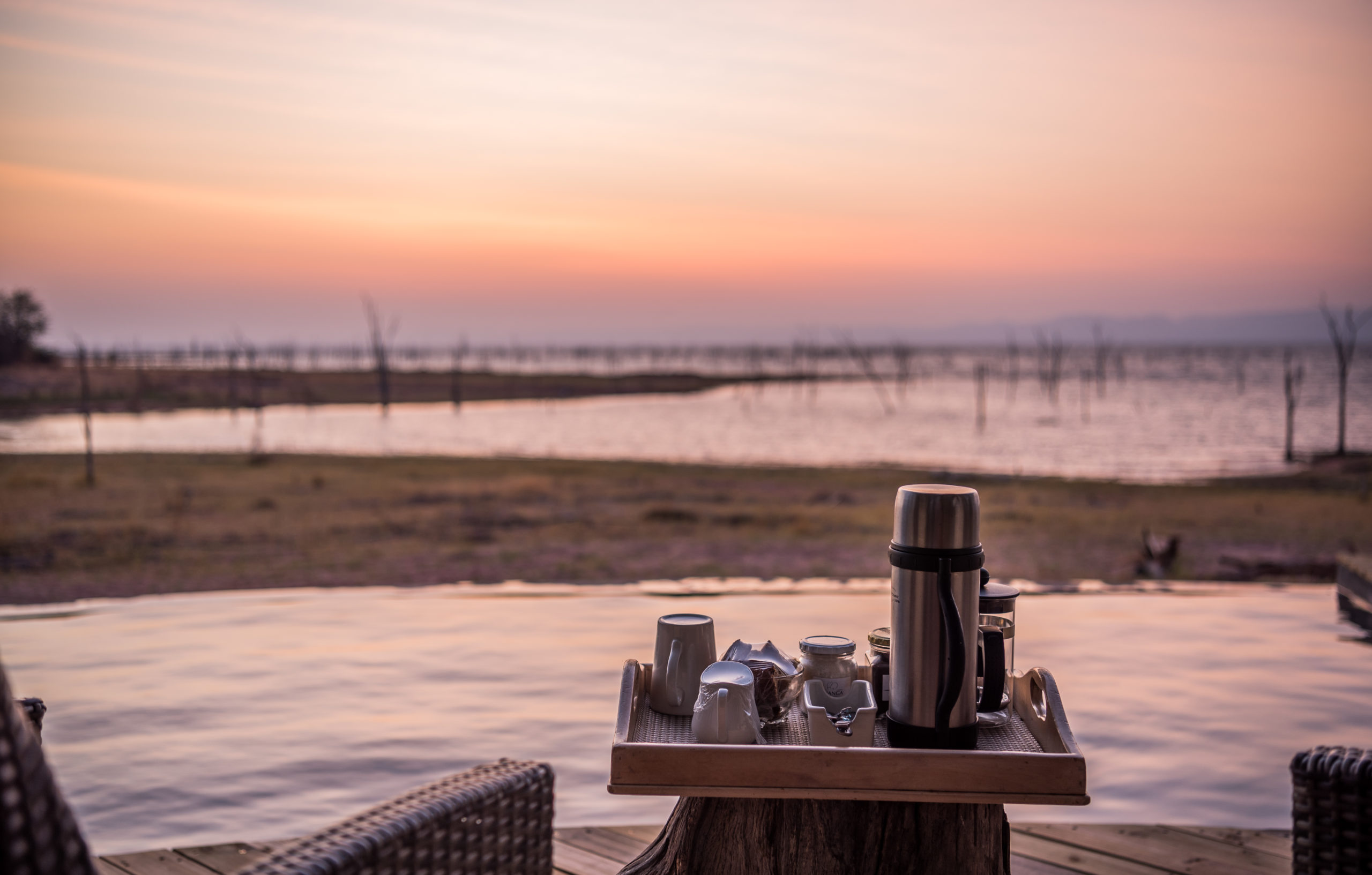
Start your day by the pool with a delicious cup of coffee, Image Credit: Changa Safari Camp
Romance
Could your journey to Lake Kariba have a more romantic purpose? Perhaps it marks the beginning of your honeymoon, a tranquil escape from the routine with no children in tow.
Or is it your maiden voyage as a couple, often dubbed as the ultimate relationship test? Regardless, Changa Safari Camp, in all its divine rustic glory, is the perfect setting for a little rom-com-worthy romance. Set on the shores of Lake Kariba with views of the Matusadona mountains, this camp is peaceful and secluded.
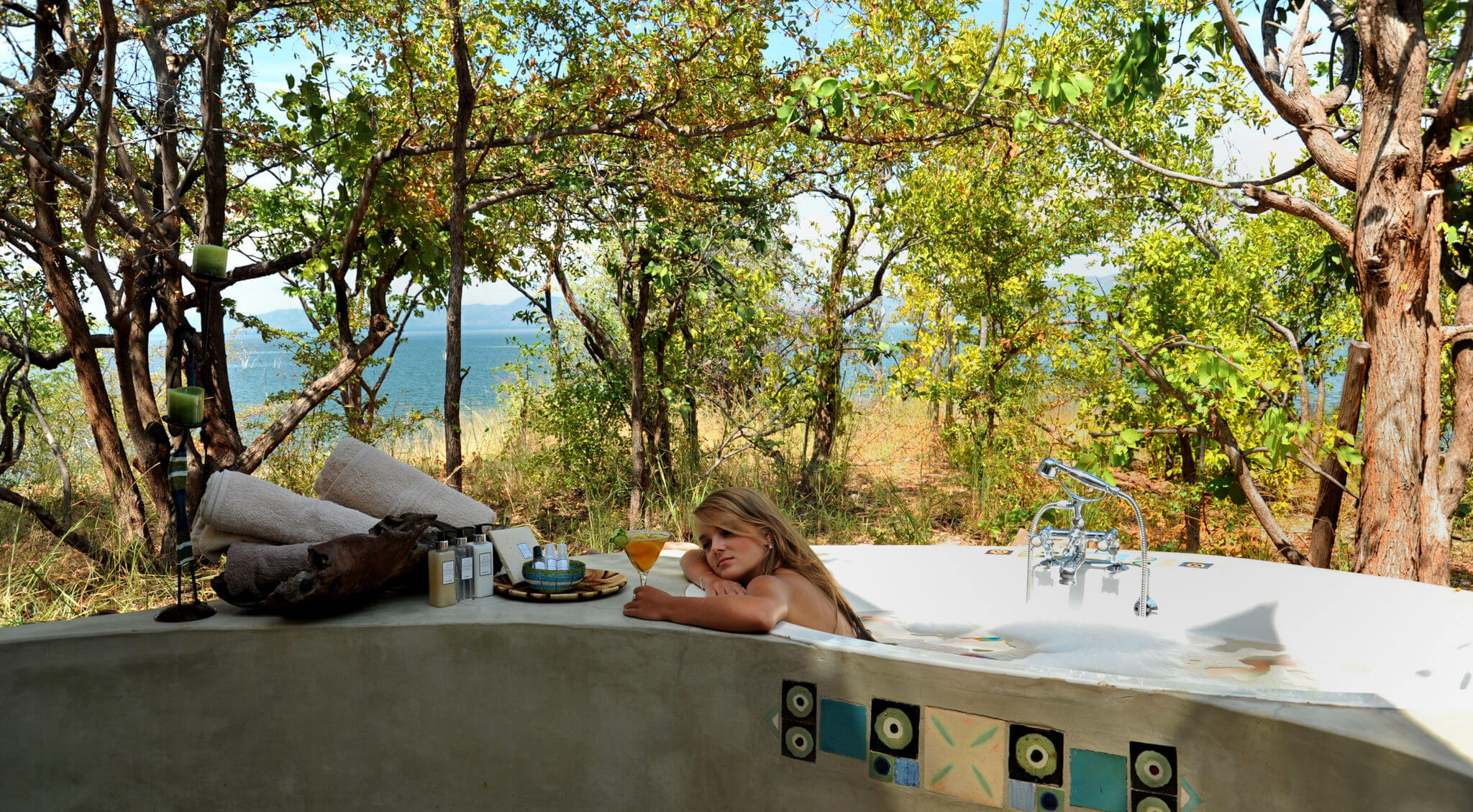
Soak in more than just the views, Image Credit: Changa Safari Camp
1. Bush Breakfast
Start your day off with a delicious and exclusive bush breakfast that has been lovingly set up on the private beach made just that much better with pancakes and mimosas! Or maybe just a bottle of bubbles – hold the OJ?
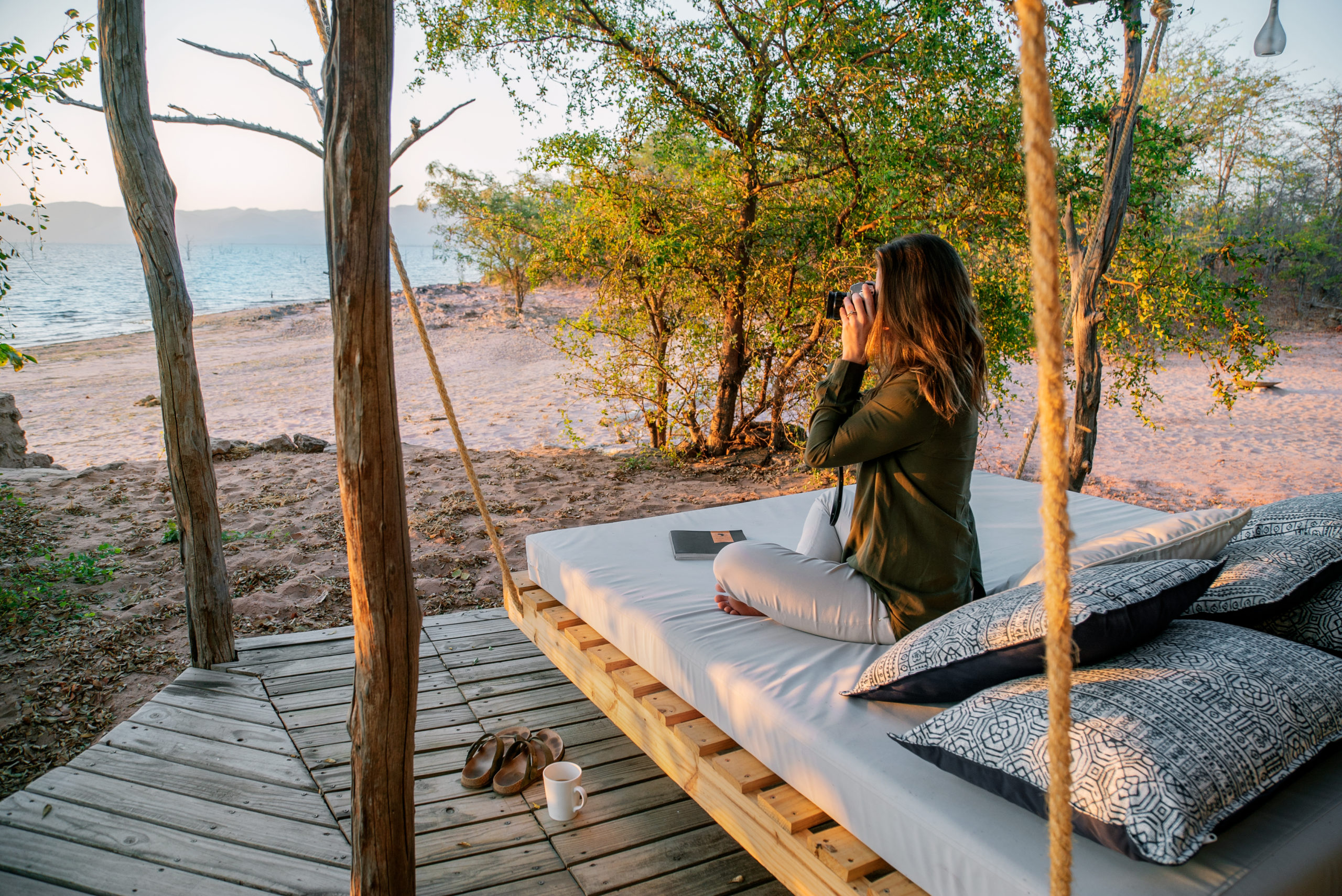
The view from the deck of your tented suite, Image Credit: Changa Safari Camp
2. Do Nothing Or Everything
The beauty of a Lake Kariba safari holiday is that you can do as much or as little as you like! You can start your day off snuggled up on the game vehicle tracking a pride of lions, go on a guided bush walk or take a short boat ride across the lake to the scenic Sanyati Gorge.
Or you can simply enjoy some quiet time by the pool, on the deck of your tent or even take a little afternoon nap.

Sundowners for two on a private beach, Image Credit: Changa Safari Camp
3. Private Sundowners
Yes, we know it’s more eating, but truthfully, aren’t all relationships merely deciding, or arguing, about where you’re going to eat next? A private sundowner for two is the perfect start to the evening.
Watch the sunset on a private beach, have a few laughs, and a few more drinks before adjourning to your tent and enjoying an outdoor bush bubble bath.
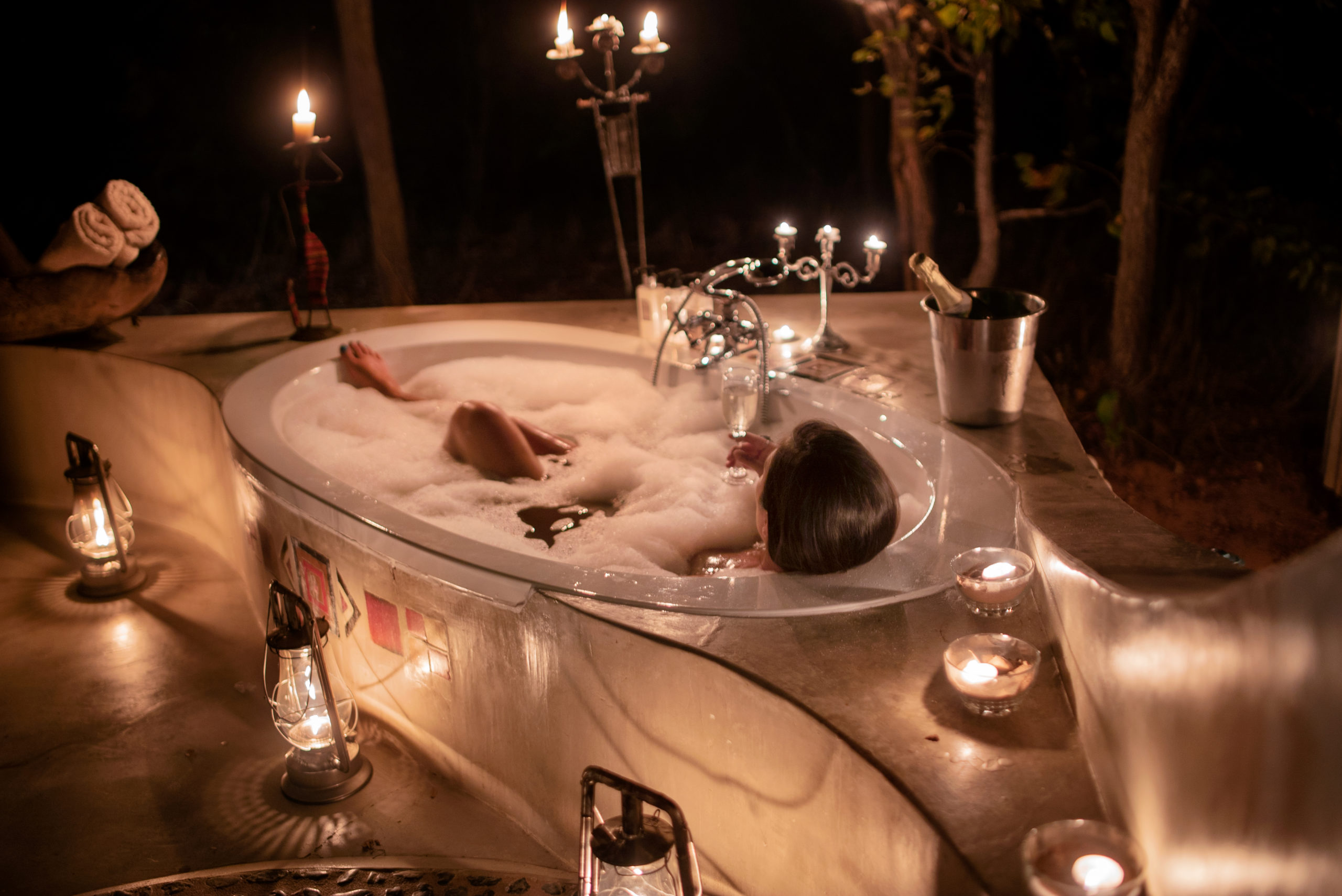
Strip and take a dip in a romantic bush bubble bath, Image Credit: Changa Safari Camp
Multi-Generational Lake Kariba Safari
Could your plane be journeying to this destination for a multi-generational trip? Imagine parents, older kids, and grandparents embarking on an adventure reminiscent of a scene straight out of “The Lion King”.
Picture the pride gathering, with generations coming together on a private houseboat. It’s the perfect way for a little family bonding.
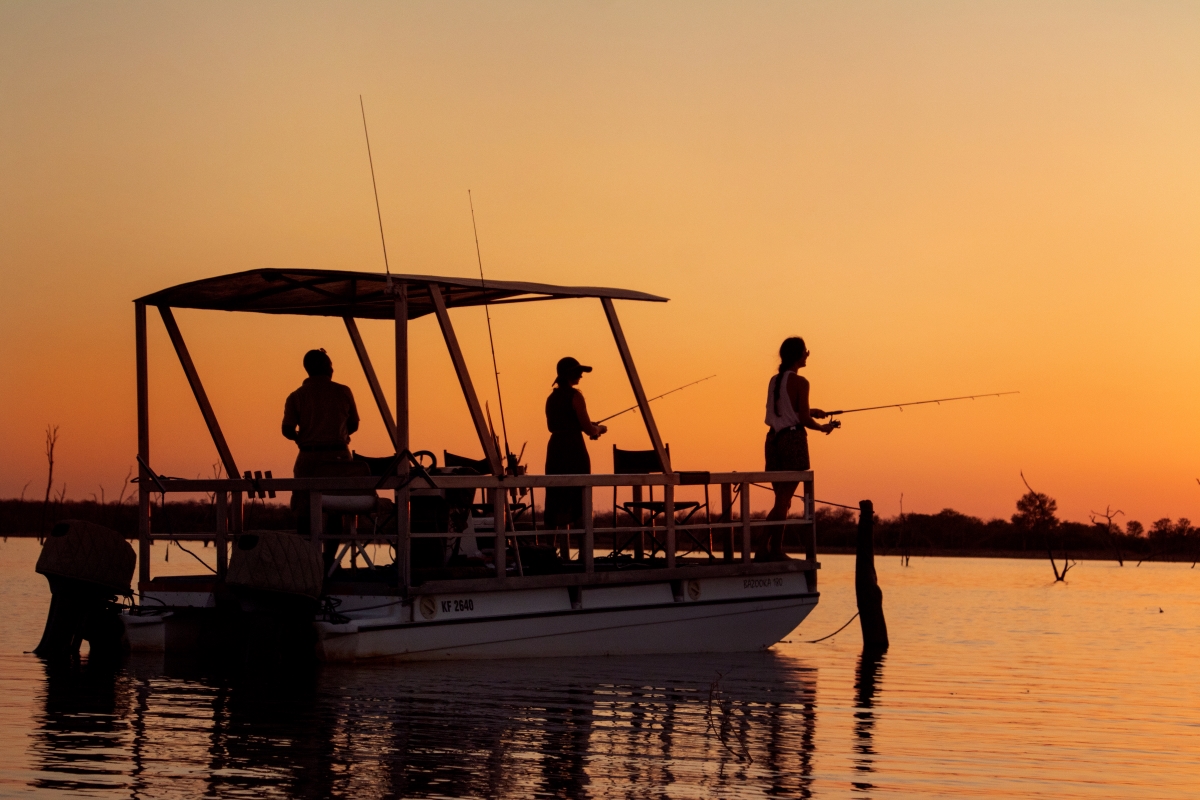
Boating safari guarantees a close and personal encounter with nature, Image Credit: Changa Safari Camp
1. Fishing and Water Sports
Battle it out with tigerfish, or take it slow in the petrified forest, where you can try your luck at catching some bream while sipping on a G&T.
If adventure is more your speed, there are plenty of watersports available on the lake! From parasailing to motor boating, there’s no shortage of options for adrenaline junkies to indulge in.
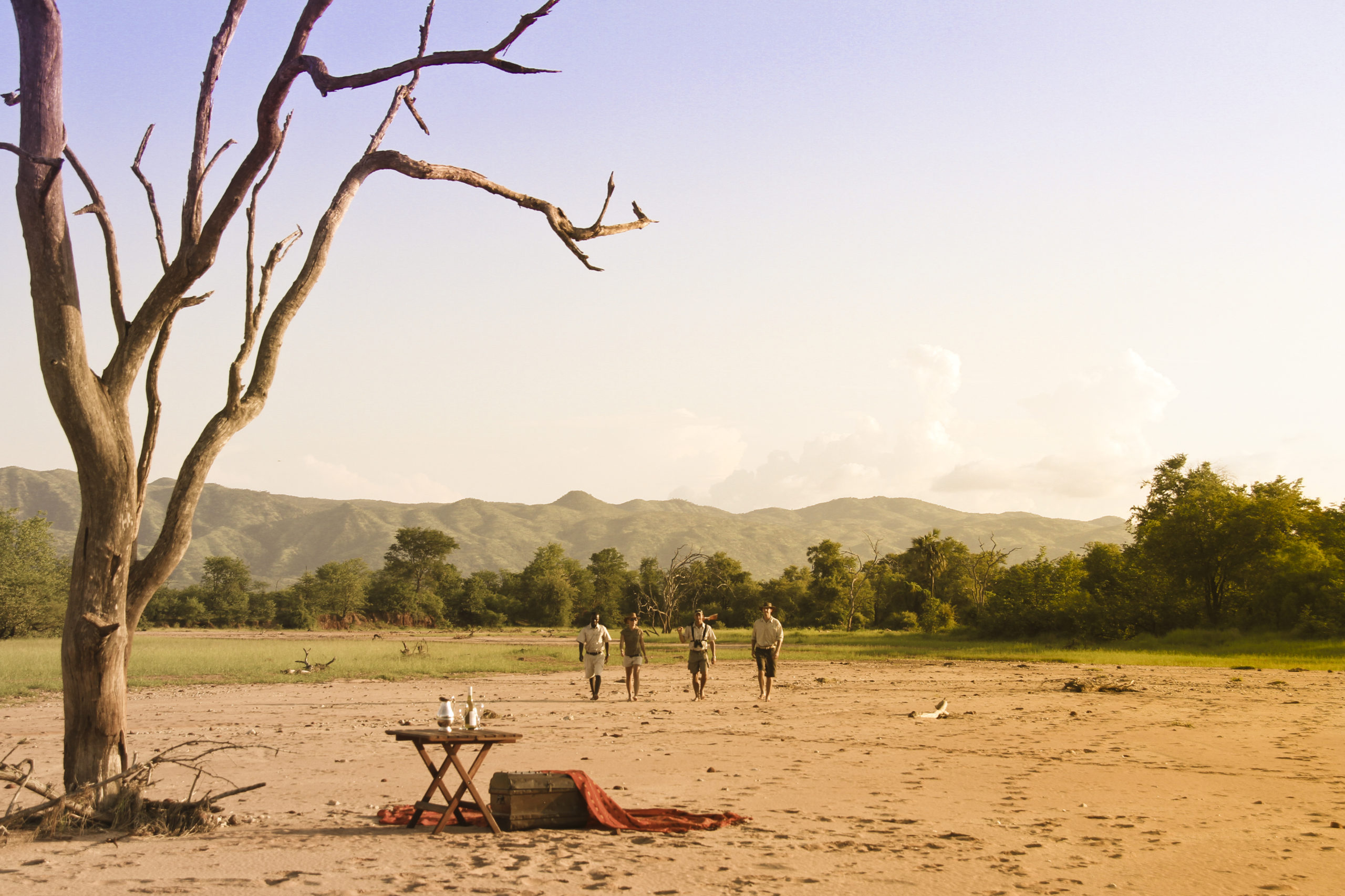
A walking safari is one of the best ways to connect with nature, Image Credit: Changa Safari Camp
2. Walking Safari
If you haven’t found your sea, or in this case, lake legs, go on a guided walking safari. This is a great way to learn more about the little details that make Lake Kariba such a sensational destination. However, please note that children have to be 16 years or older to partake in this activity.

A beautiful sunset in Africa is something everyone should experience, Image Credit: Bumi Hills Safari Lodge
3. Epic Sundowners
Arguably one of the best activities in Kariba is the sundowners. They are simply, for lack of a better word, epic. As the sun dips below the horizon, the sky is painted in hues of lilac, pink, and orange, creating a stunning vista. Relaxing with a drink in hand while soaking in this natural beauty is an experience you and your family won’t soon forget.
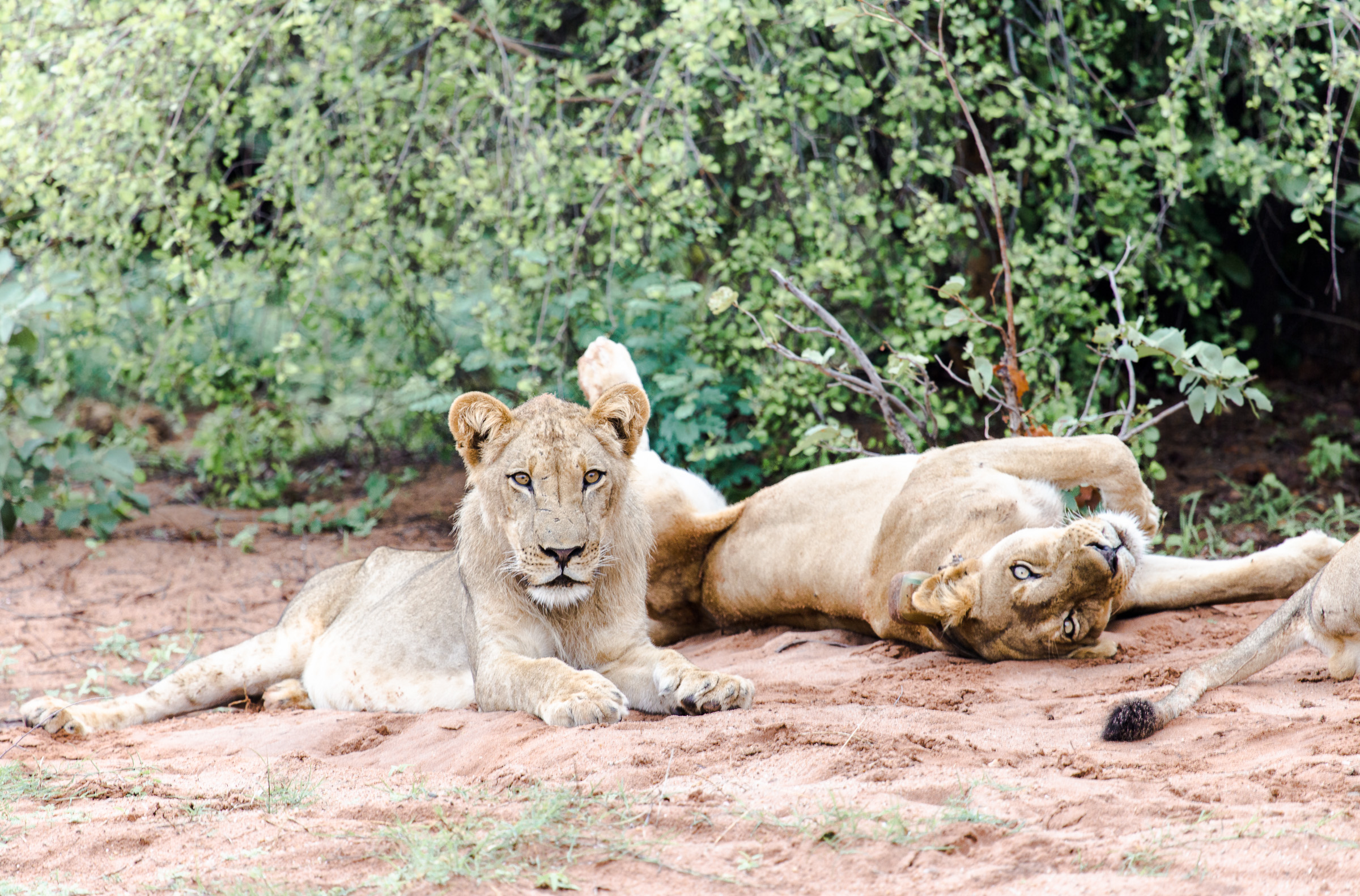
Your Lake Kariba safari awaits, Image Credit: Changa Safari Camp
What Are You Waiting For?
Don’t let this opportunity slip away! Your next holiday should include a Lake Kariba Safari, where adventure, relaxation, and family or romantic bonding await.
From thrilling game drives to tranquil bush breakfasts and epic sundowners to private dinners overlooking the lake, every moment promises unforgettable memories. With so much to offer, there’s no time to waste – book your trip now and embark on an incredible journey that will leave you longing for more.
Our Travel Experts are ready to help you to start planning your luxury African safari today!


Experiencing the Big 5 from Land, Water and Sky
Africa’s so incredible and vast that you have to see it multiple times – and from different perspectives! Experiencing a Big 5 safari in real life stirs you deeply, and seeing these world-renowned creatures in their natural habitat is a true treat. I still remember […]
TanzaniaAfrica’s so incredible and vast that you have to see it multiple times – and from different perspectives! Experiencing a Big 5 safari in real life stirs you deeply, and seeing these world-renowned creatures in their natural habitat is a true treat. I still remember my first time, gazing up in awe at the wrinkles of an elephant towering over me, blinking slowly with those long lashes as we drifted past on a boat. And, of course, getting full-body goosebumps when a lion stared right into my soul as it walked right past our game drive vehicle. Seeing these creatures will change your life, and even more so when experiencing the Big 5 from land, water and sky. Here’s how and where…
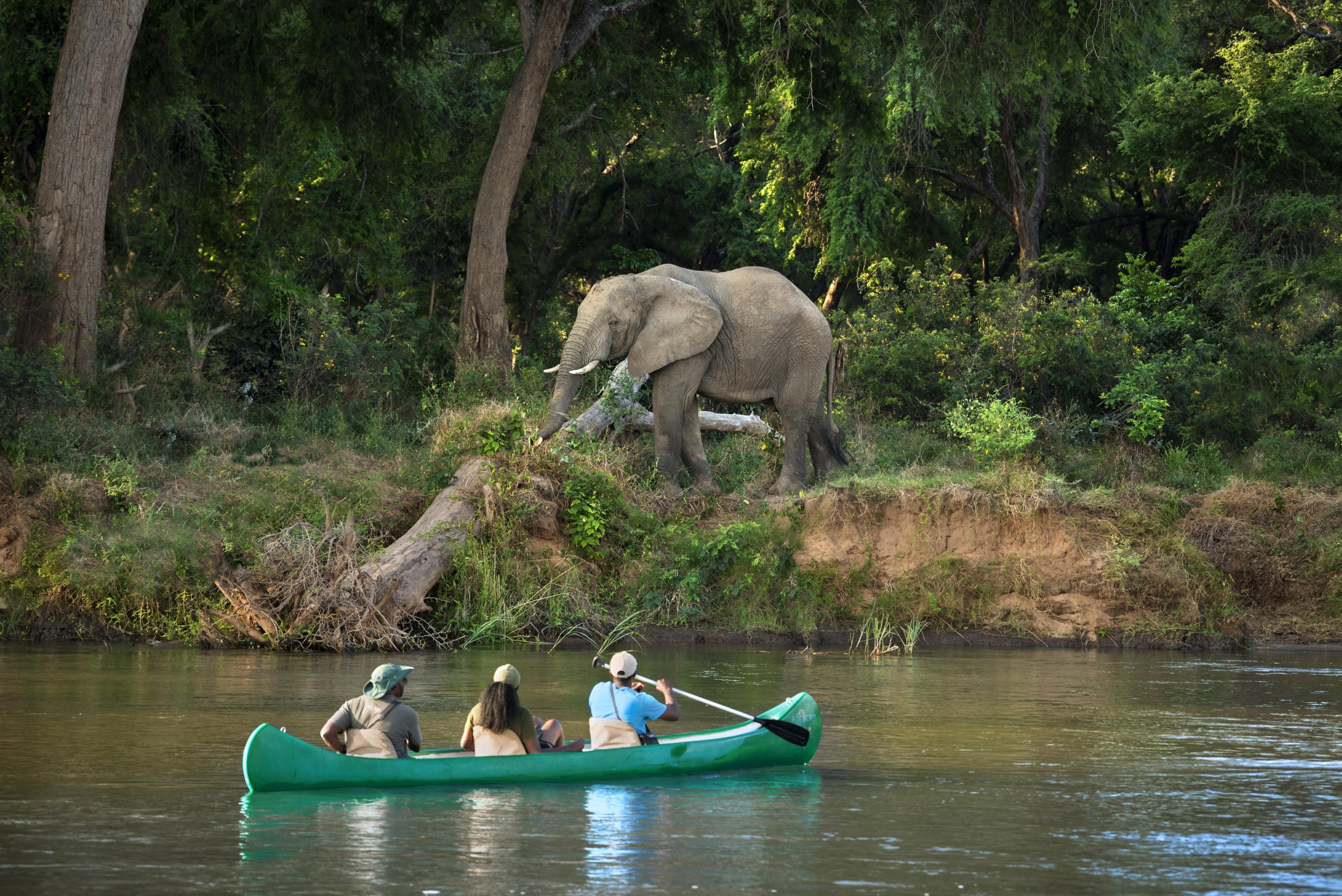
Experiencing the Big 5 from water will float your boat, Image Credit: Lolebei Safari Camp
We Like The Big 5, And We Cannot Lie
The Big 5 consists of the lion, leopard, rhino, elephant, and African buffalo, which are Africa’s most famous large animals. There are many reasons why they made this short list, and experiencing the Big 5’s sheer size and strength is something you’ll always remember.
Each of these wildlife species have their own charms, which makes ticking all five off your list is such a treat! In Africa, there are certain locations that are best for viewing the Big 5, whether from land, water, or even sky! And as the World’s Most Awarded Safari Company, we know these places better than, well, an elephant knows its trunk!
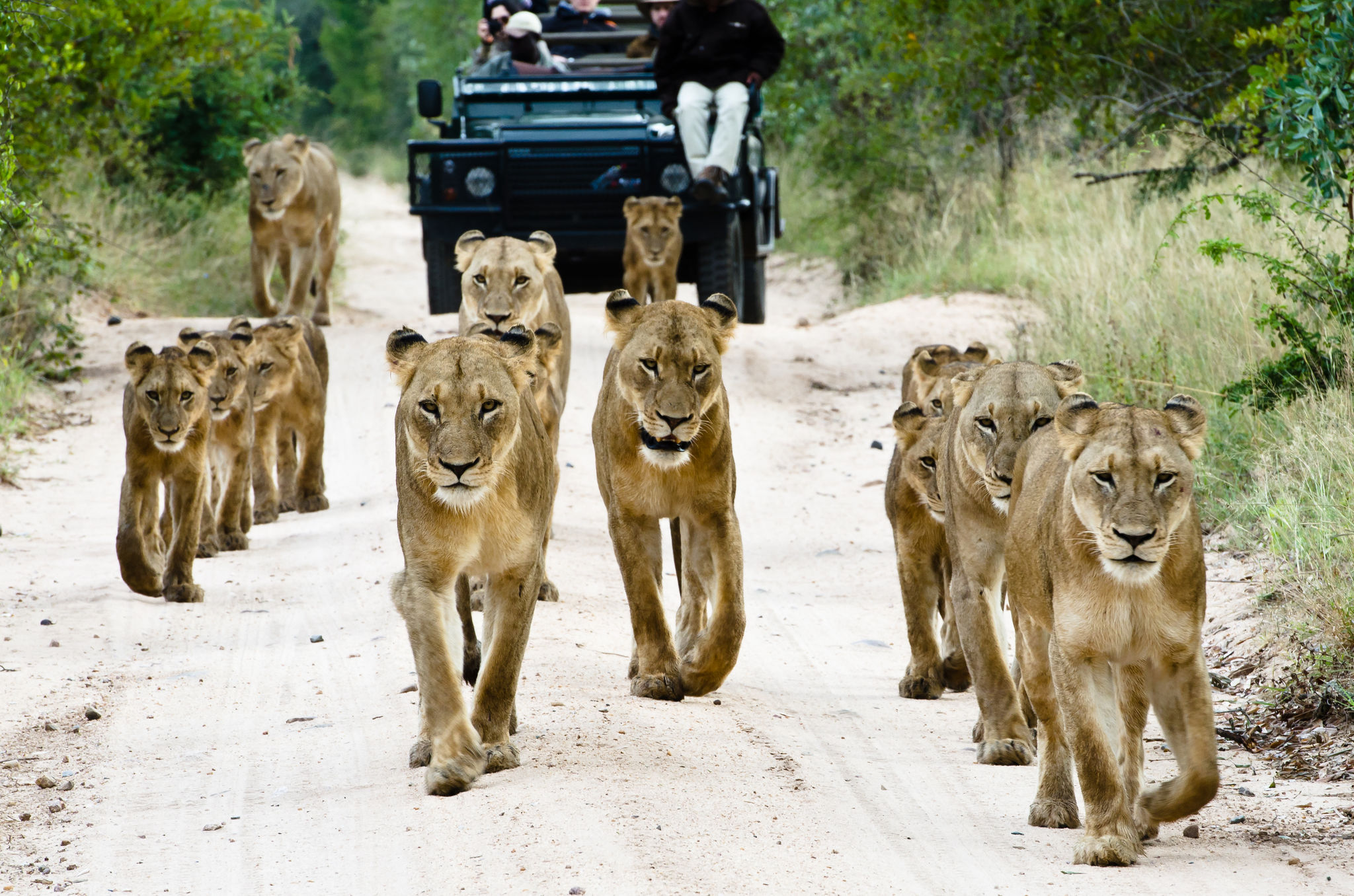
I always shiver in wonder and respect when I meet a lion
Where to See The Big 5 from Land
The classic safari entails heading out in an open 4×4 game drive vehicle to look for wildlife. Most lodges offer twice-daily game drives, one in the early morning and another in the late afternoon, when wildlife is most active. You’ll stop for a coffee or sundowner break, which is a highlight on its own!
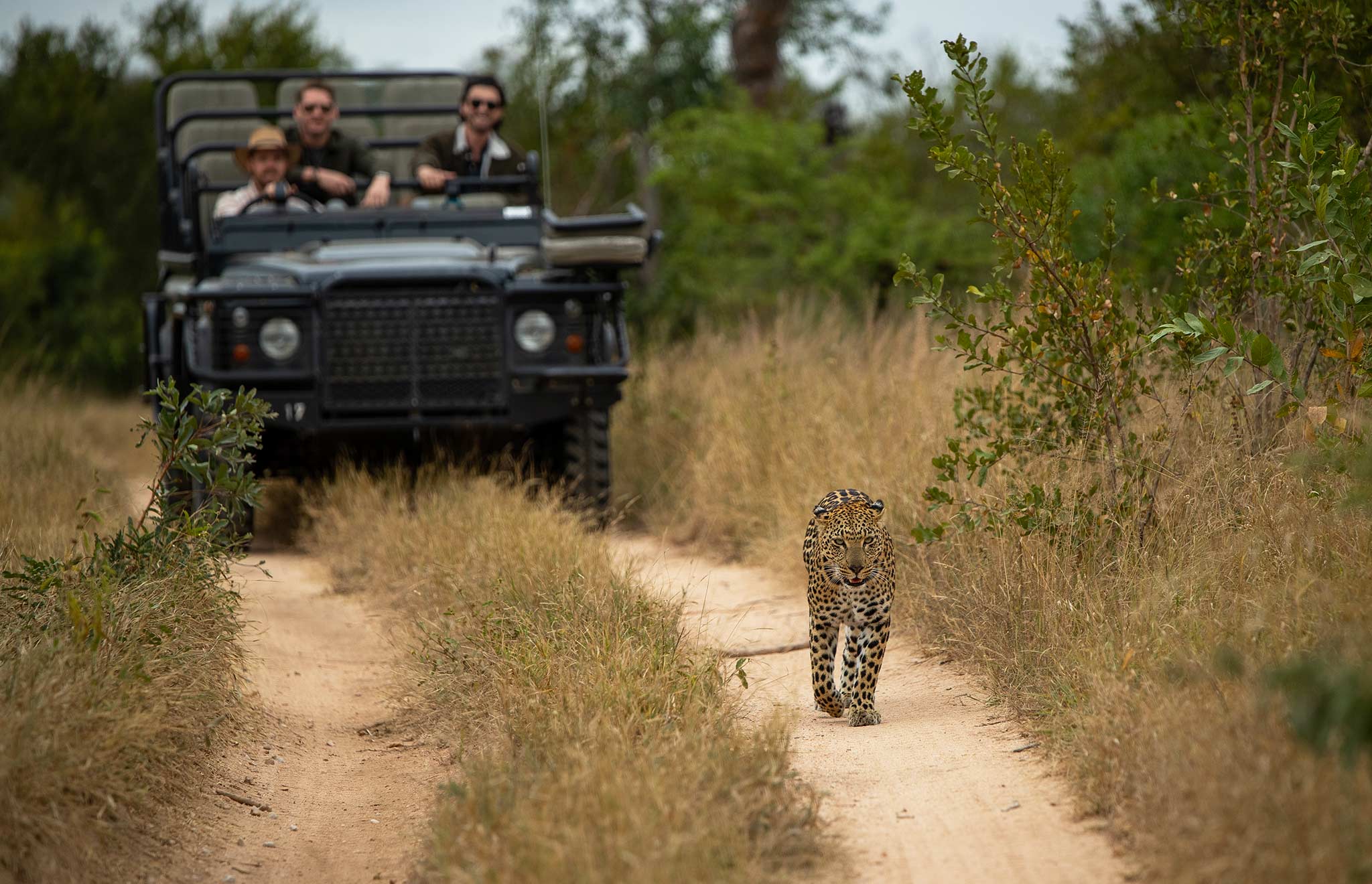
Just imagine following in the footsteps of leopards
If you stay at certain luxury lodges, like those in private game reserves, you can also enjoy night game drives. This means you stay out after dark to see the nocturnal animals. This is a personal favourite of mine, as it feels like you’re looking through the peephole of another world since few people see them as they hide under the cloak of night.
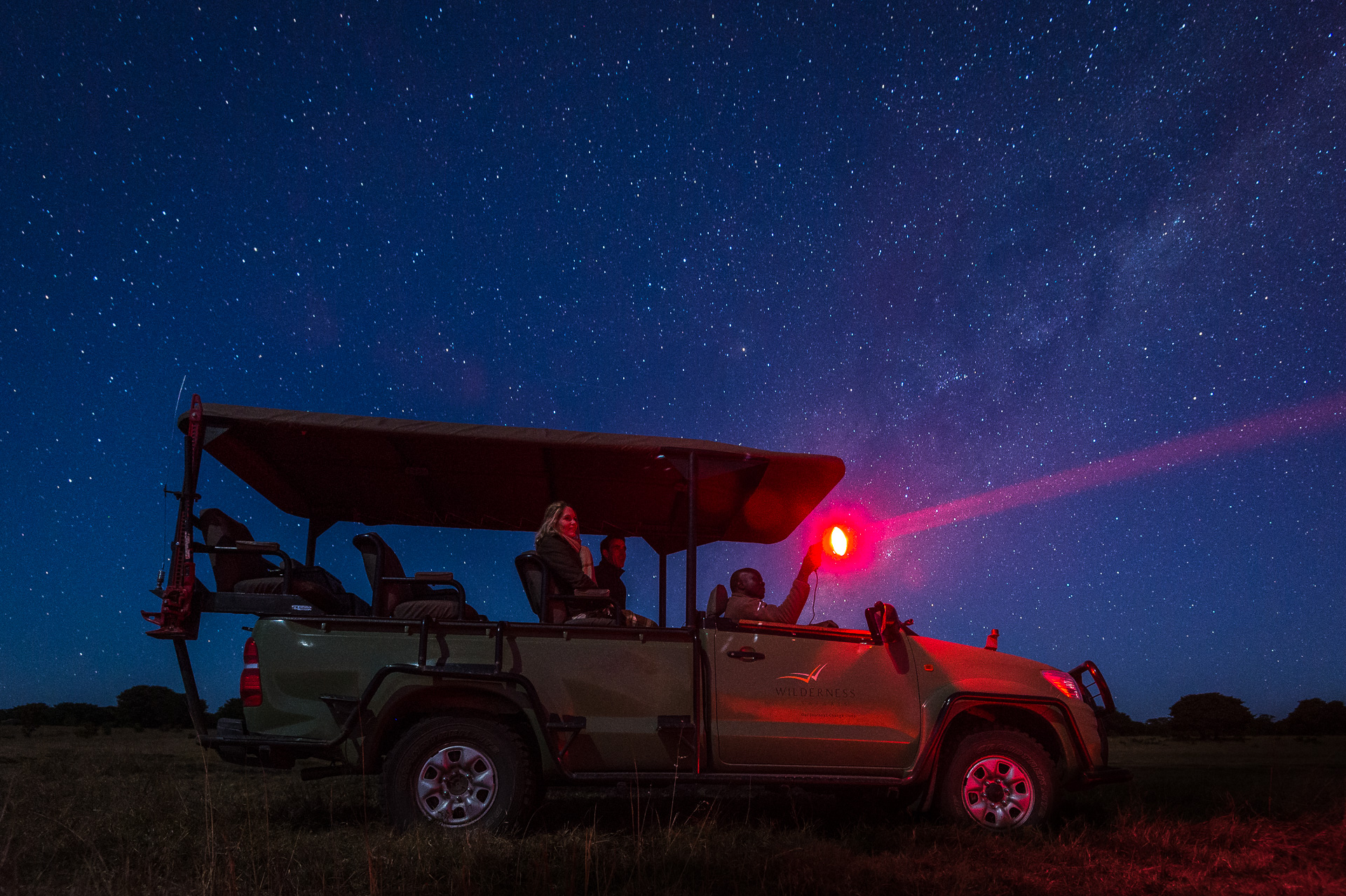
Night game drives are always an exciting experience, Image Credit: Wilderness
One of the most widely known Big 5 safari destinations in Africa and one of our most requested destinations is the Kruger National Park in South Africa.
But amidst these wild landscapes teeming with wondrous wildlife , you also get some of the best luxury lodges in the world. The Greater Kruger is home to many private concessions, where you can opt for a more private or even exclusive-use option.
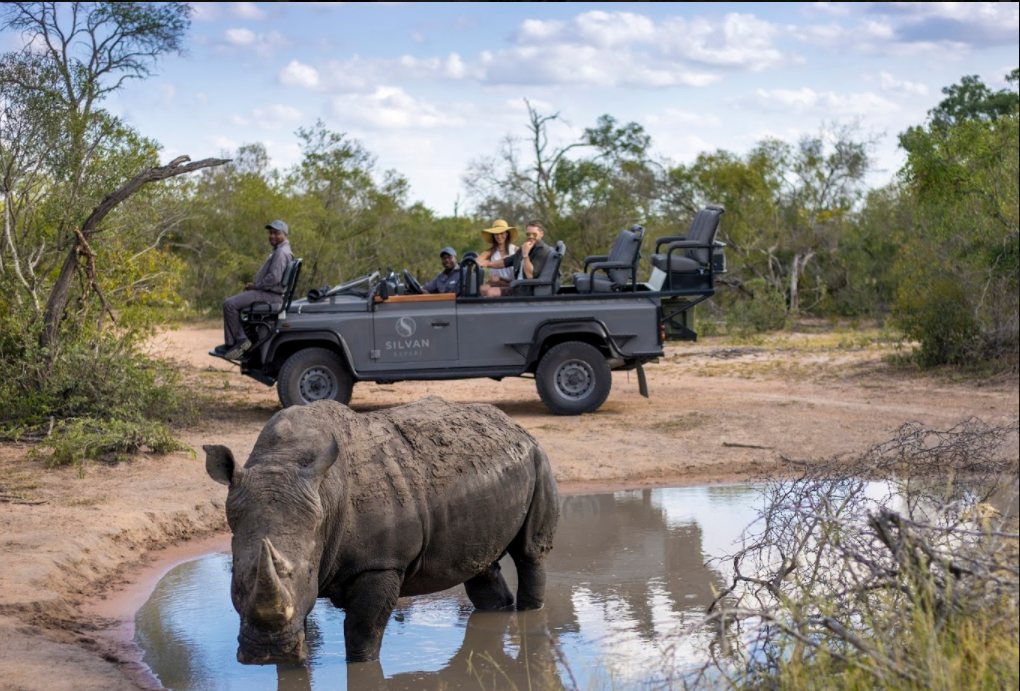
Our real-life unicorn, the rhino
Get Even Closer to The Ground on a Walking Safari
When staying in a private reserve, you also get to take part in special activities like walking safaris, where you take on the African bush on foot! Yes, just you and your hiking boots, following your guide in a single file as a whole new world opens up. These are my favourite safari memories, and I’ve done quite a few! It just never gets old as you notice all the tiny details and connections you might’ve missed otherwise.
Furthermore, walking free through the bush makes you feel immensely powerful yet extremely vulnerable at the same time, a delightful juxtaposition of emotions.
If you want the very best Big 5 walking safari, we also highly recommend the birthplace of this activity, South Luangwa National Park in Zambia.
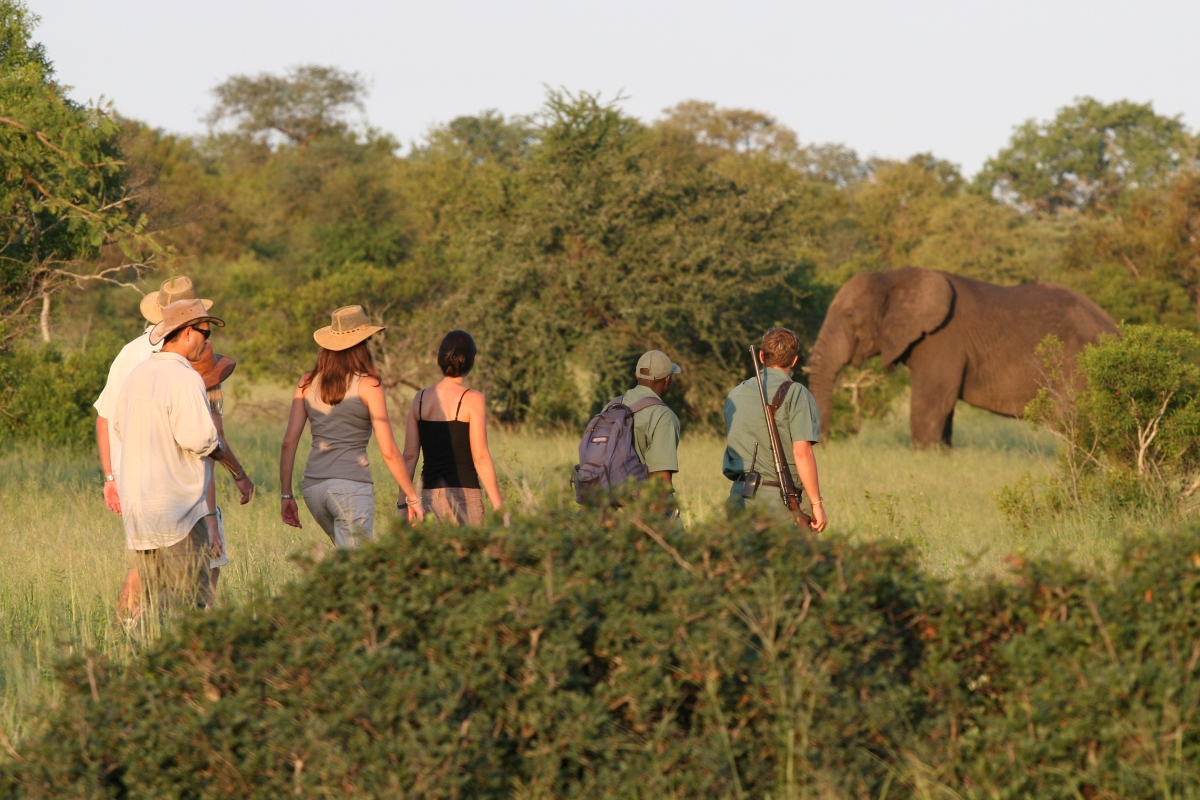
Walking safaris in Africa provide the perfect way to view nature at eye level, Image Credit: Rhino Walking Safaris
Seeing The Big 5 from Water
There’s something magical about silently gliding along water and meeting the eyes of wildlife lapping up the water from the riverbank. It moves you, just like the water does.
Botswana is by far our most popular water-based safari destination, home to both the Okavango Delta and Chobe River. I especially love going on a mokoro safari, a traditional canoe reminiscent of the gondolas in Venice. Because you’re sitting lower than on a boat, you feel closer to the animals and can take truly spectacular photos!
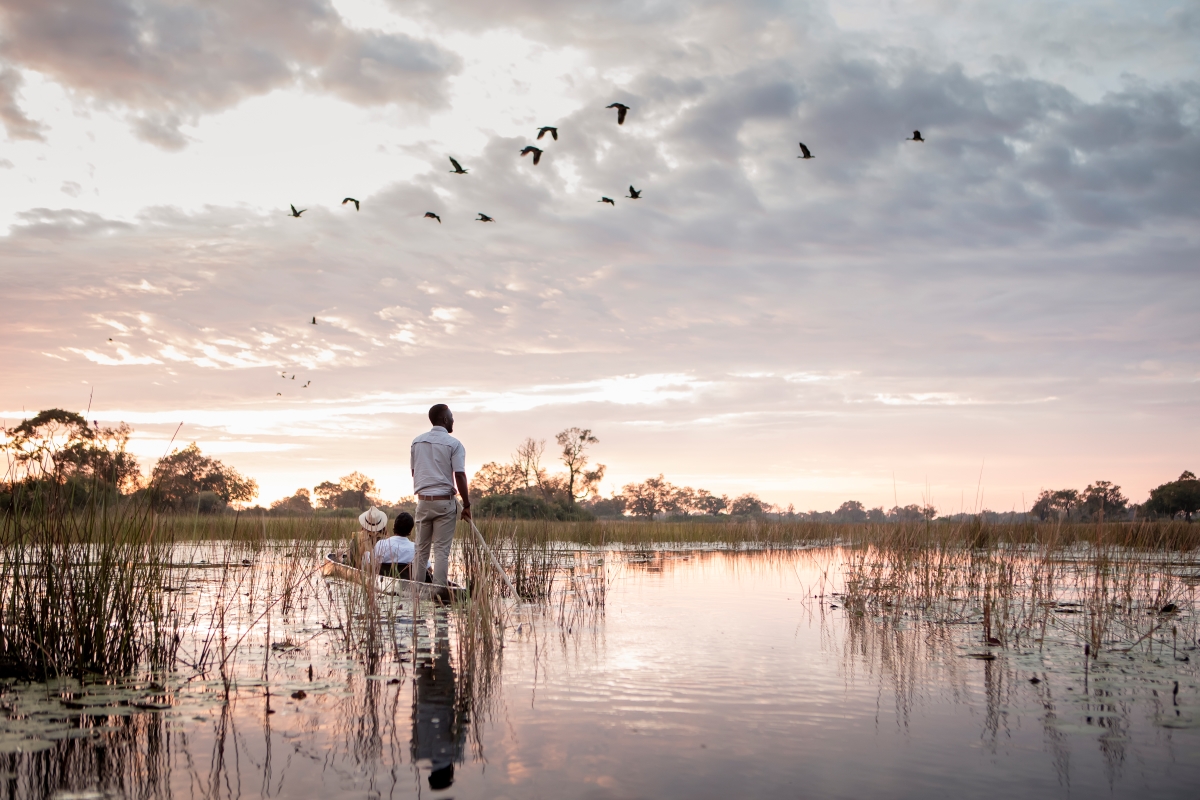
A whole new world, a a dazzling place I never knew, Image Credit: Wilderness Vumbura Plains
That being said, if you’re a true wildlife photography enthusiast, amateur or pro, there are some lodges that offer cruises on specially-adapted boats to help you get the perfect, stabilised and crystal-clear captures. The Chobe River region is renowned for its photo safaris, as well as for being the “Land of the Gentle Giants”, so expect fantastic elephant sightings!
Other recommended destinations for water safaris are Zimbabwe and Zambia, both sharing access to the Zambezi River. Feeding the renowned Victoria Falls, it’s the fourth-longest river in Africa and largest flowing river in Africa that flows into the Indian Ocean. It’s big, it’s beautiful and it’s got views of the Big 5! There are many excellent lodges located right on the riverbank.
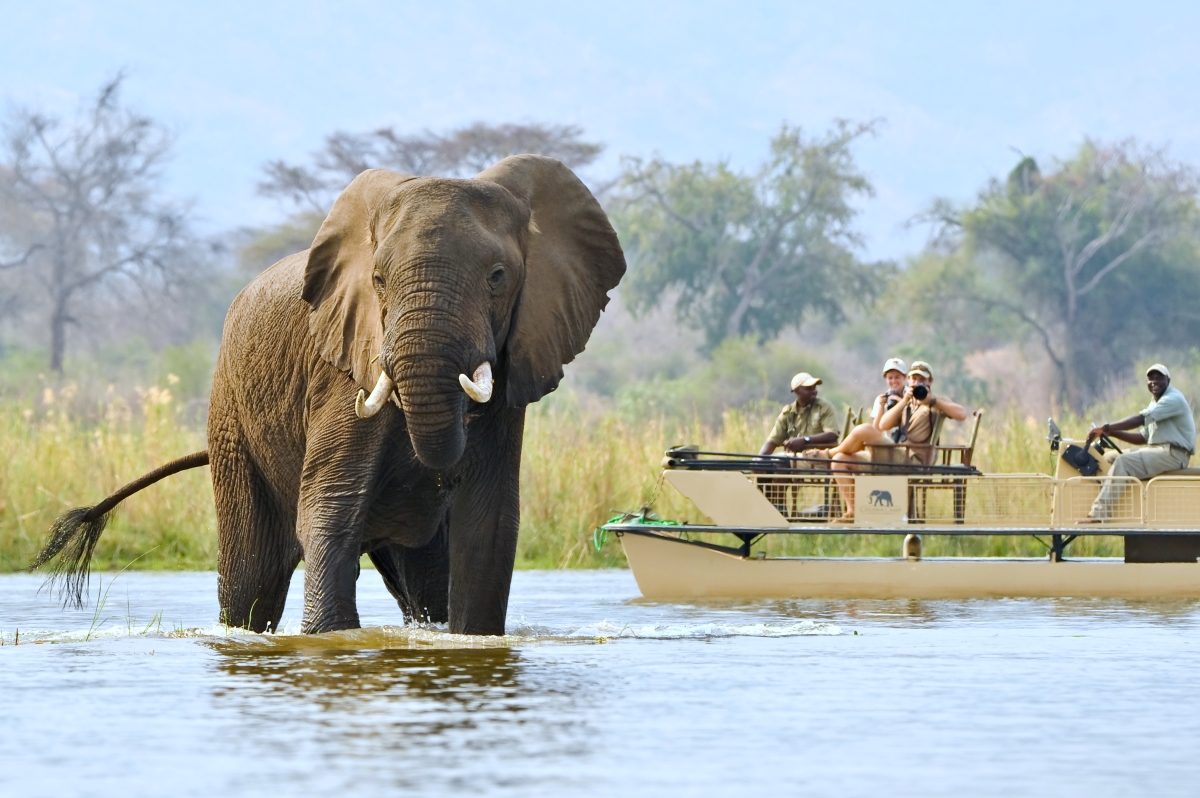
Explore the riverbanks, islands and channels on a comfortable river cruise, Image Credit: Chiawa Camp
And Now: Experiencing The Big 5 From The Sky
Take your safari to new heights (literally!) by going on a hot air balloon ride. This is exactly as dreamy as it sounds, and often ends with a bubbly breakfast under a tree in the middle of the savannah. Now this is the kind of life you were meant to live, right?
The best places to see the Big 5 from a hot air balloon are in East Africa‘s Serengeti National Park in Tanzania and the Maasai Mara National Reserve in Kenya.
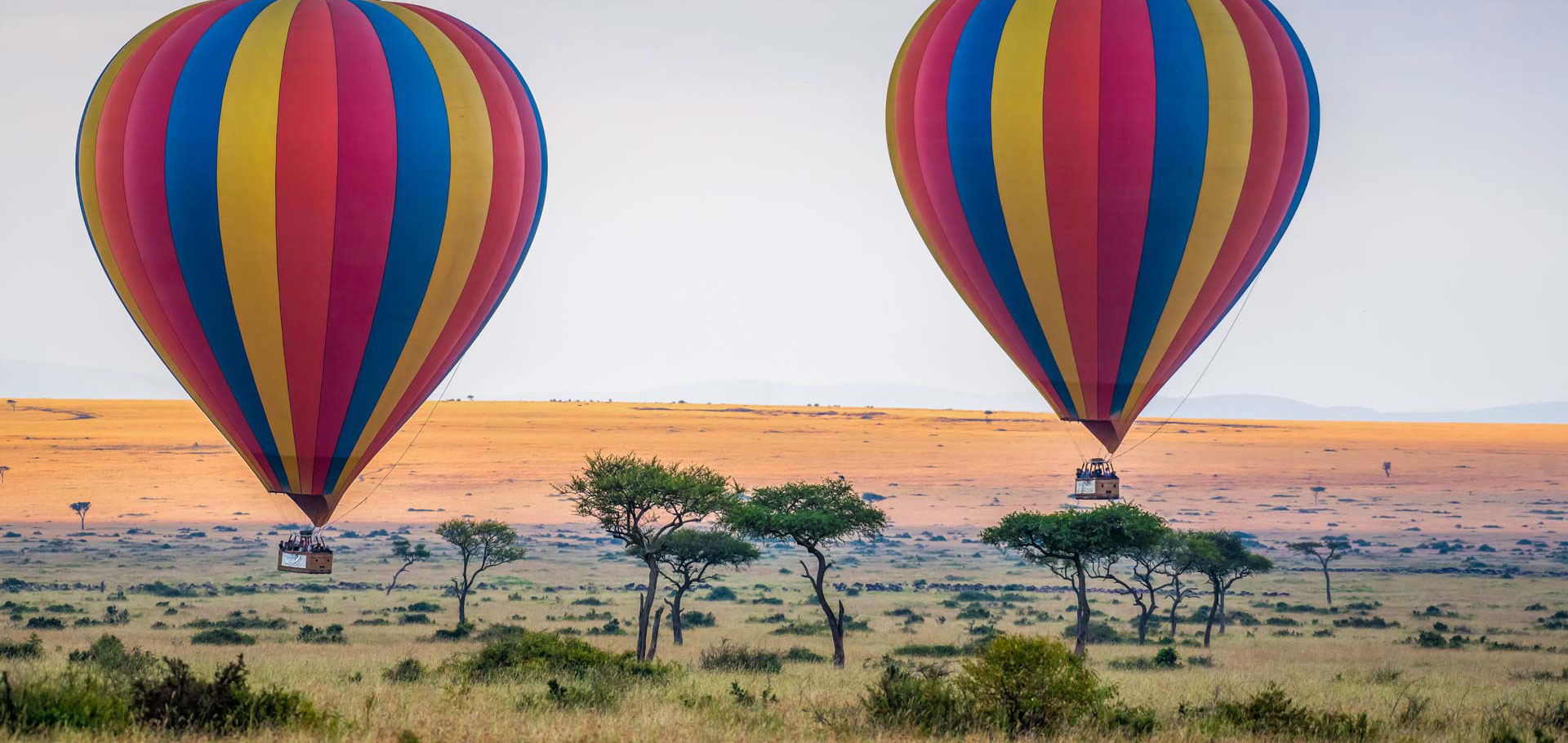
A hot air balloon safari in East Africa is one of the most romantic experiences
But it’s not only the Big 5 that steal the show… These countries are also where the Great Wildebeest Migration puts on its annual show! However, please note that you need to plan far in advance and get expert advice as they don’t stay in the same place for long. But don’t worry, our Travel Experts have the right people on speed dial to help you get a front-row seat.
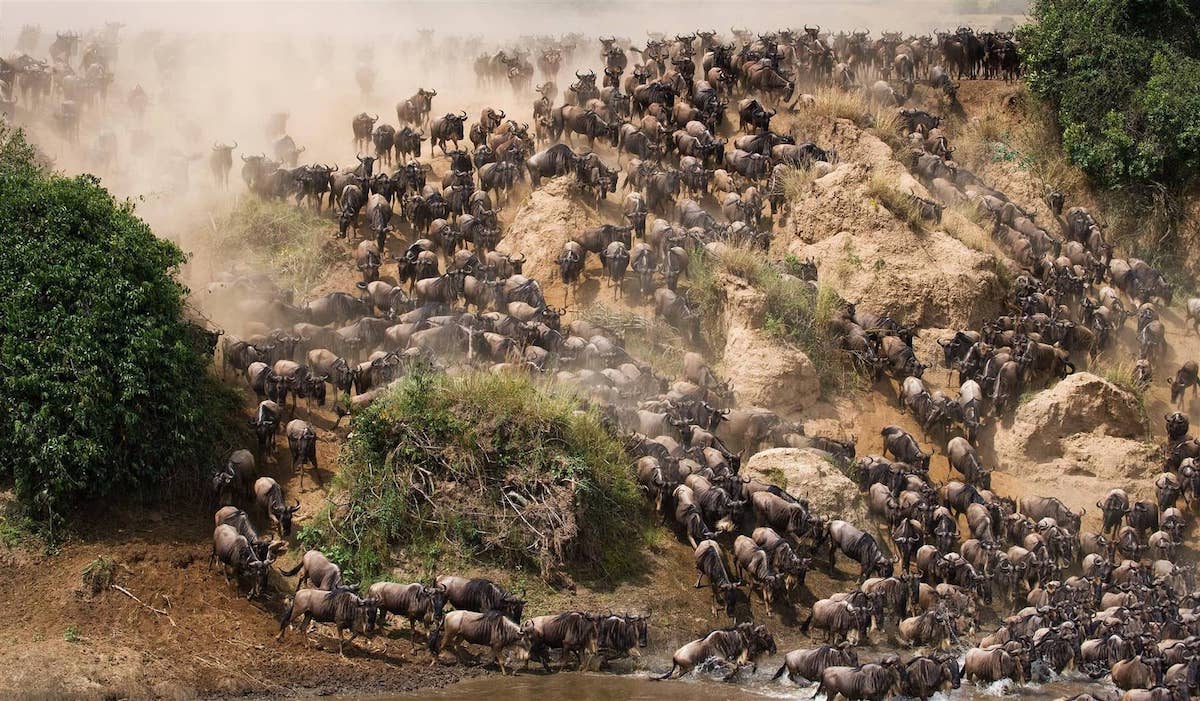
Seeing the Great Migration from the sky will give you a full picture of the masses of wildlife
Experiencing The Big 5 is a Few Clicks Away
So now you know your Big 5 better than your ABCs, and you also have an idea of where to go! However, Africa has more to offer than just the Big 5. Yes, there are many, many more fascinating animals and experiences we can recommend to you.
Just a word of warning: you might never want to go anywhere but Africa for your holidays after experiencing it once. But the good news is that we know our continent better than anyone else and will tailor-make a highly personalised adventure that will blow your safari socks off!
The first step? Reach out to our Travel Experts, who’ll get to know you a bit better before recommending the safari you could not even have conjured in your wildest dreams. Go on, try it. See you in Africa!

A buffalo is known for its temper and impressive horns, Image Credit: Tania de Kock
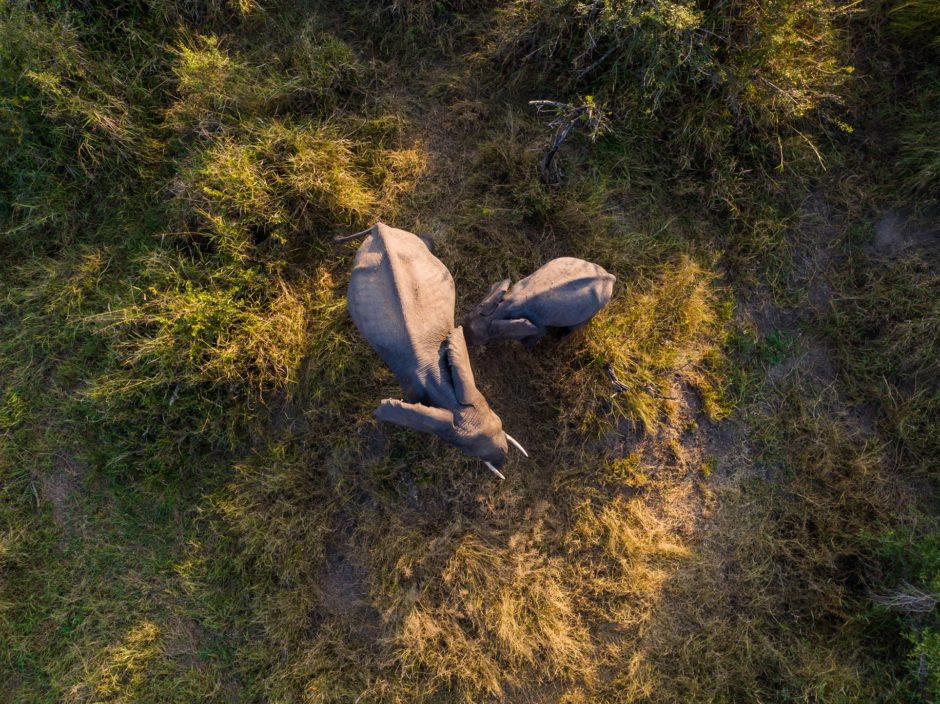

A Hidden Wilderness: Exploring Hwange National Park
As though led by an invisible conductor, the dawn chorus gains strength as the birds of Hwange National Park welcome the sunrise with a song. Spanning an impressive 14,600 km² of untamed wilderness, Hwange (pronounced “wh-ungee”) is Zimbabwe‘s largest (and oldest) national park and home to over 400 […]
ZimbabweAs though led by an invisible conductor, the dawn chorus gains strength as the birds of Hwange National Park welcome the sunrise with a song. Spanning an impressive 14,600 km² of untamed wilderness, Hwange (pronounced “wh-ungee”) is Zimbabwe‘s largest (and oldest) national park and home to over 400 bird species. But it offers more than feathery creatures, with some unbelievable wildlife sightings, making this an underrated safari destination in Africa. Join me on a journey of all the reasons Hwange remains one of my favourite safari destinations…
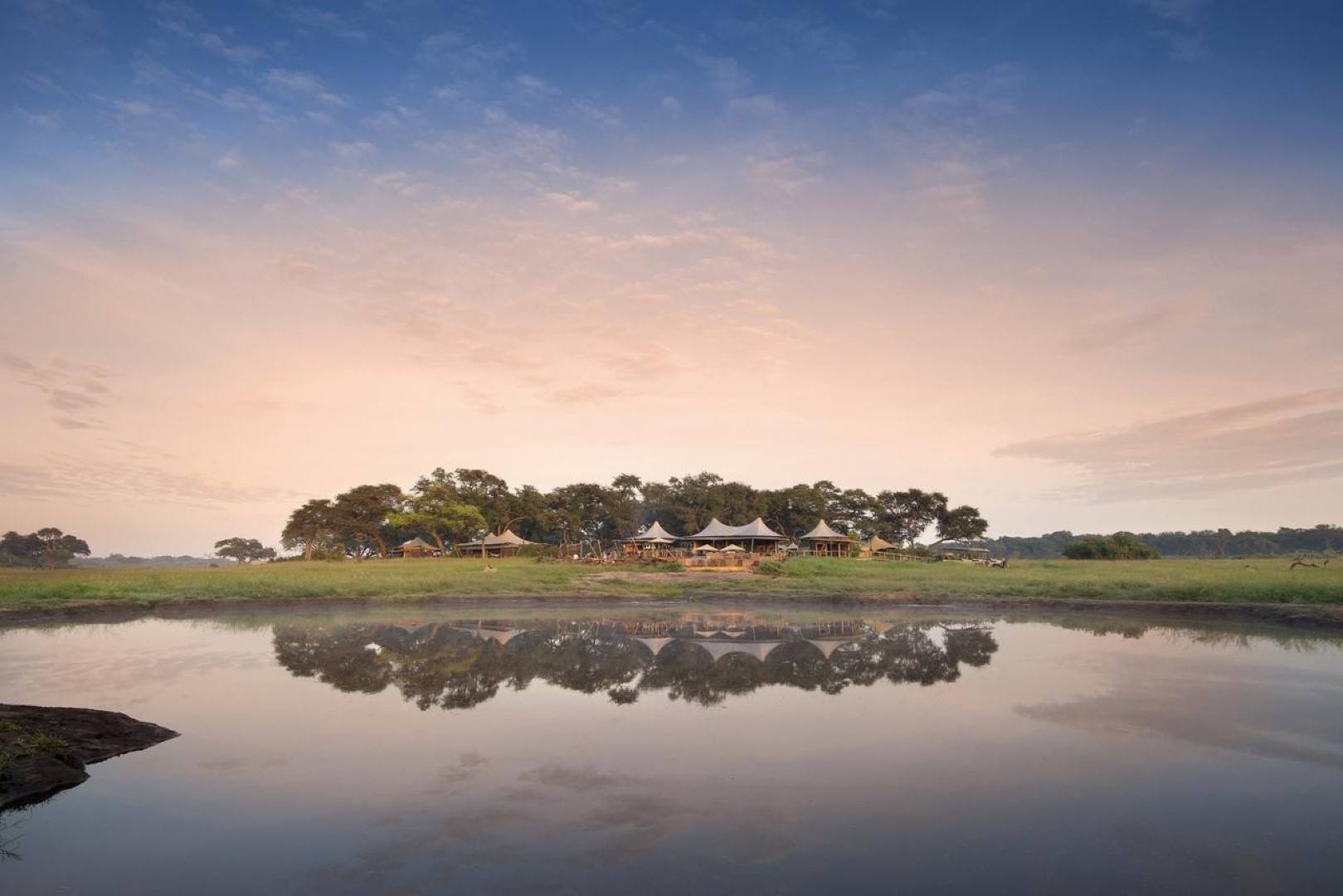
Hwange National Park is a birder’s paradise, Image Credit: Somalisa Camp
How Hwange National Park Stuns
Hwange is a Big 5 safari destination and one of the largest elephant sanctuaries in the world, so you’ll have plenty of opportunities to observe these magnificent creatures in the wild. But beyond the Big 5, the resident predators include cheetahs, hyenas, and a large African wild dog population.
However, from my personal experience, it’s not always the wildlife species you see on safari that stand out. Sometimes, it’s the dew glistening on the bush, the sip of Amarula liqueur coffee as the sun takes its first peek over the horizon, and the way you’re welcomed warmly back to the lodge after a game drive. Hwange National Park delivers this and then some. It’s a place you feel in your bones rather than just visiting.
It’s why our Travel Experts continually recommend it as a Zimbabwe safari destination for those guests who want to connect intimately with the wilderness.

Night game drives give you insight into nocturnal species, Image Credit: Wilderness
Hwange Highlights
As much as we love simply soaking in the natural surroundings, you want to ensure the safari destination you visit has enough to keep you entertained. And, boy, will Hwange bring its A-game.
With plenty of interesting and unique activities available in and around Hwange National Park, here are my top activities to get the most out of your African wildlife safari.
Game Drives
Each game drive offers a unique experience as your expert guide and tracker venture into the various landscapes that make up the national park, including the Kalahari desert, acacia woodlands, teak forests, and grasslands. It’s incredible to discover how the different habitats attract particular types of wildlife, which depend on them for food and shelter.
Plus, did you know that you can take the whole family along, even the little ones? Some game lodges offer child-friendly programs to ensure everyone has a blast.
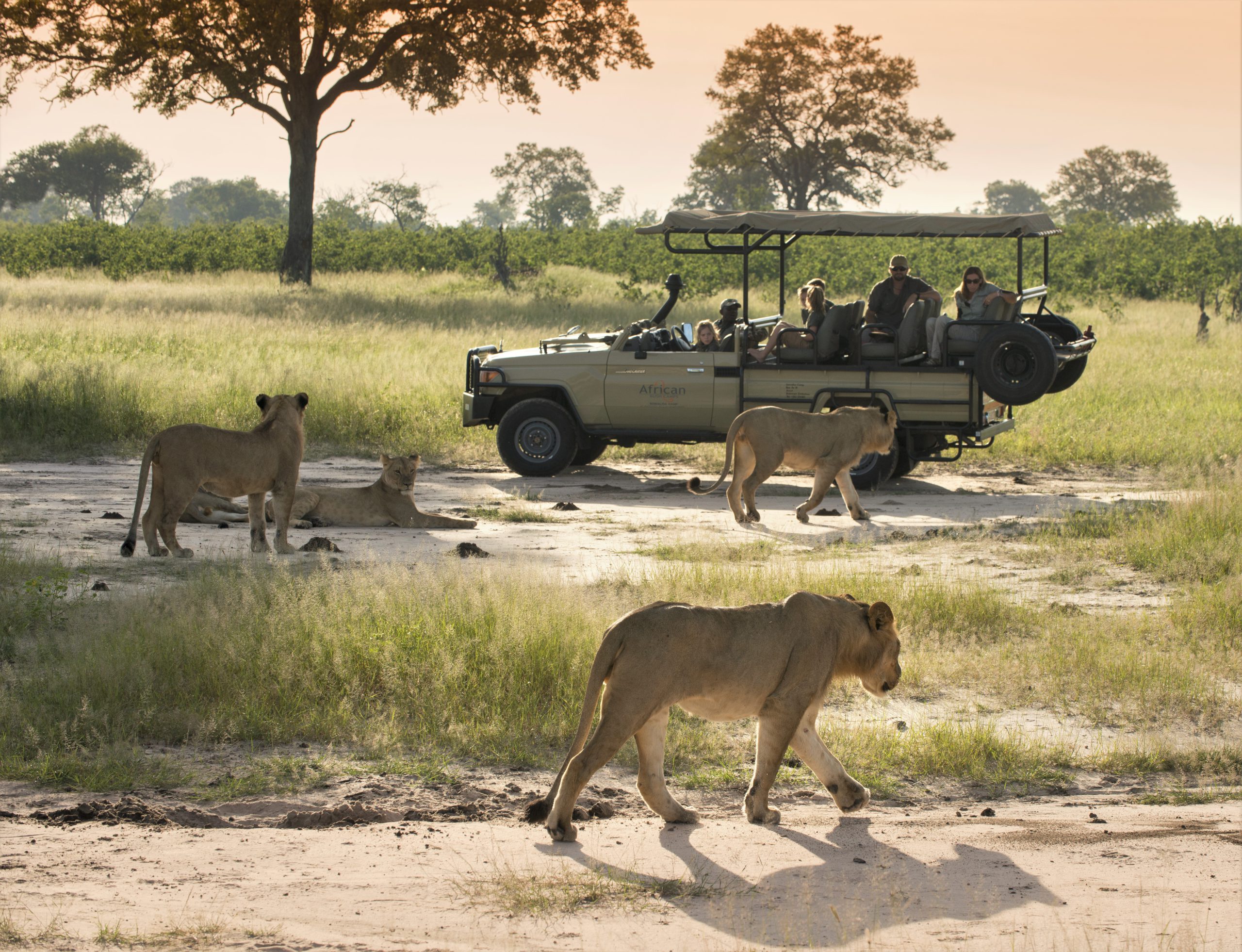
Game drives are always a treat at Hwange National Park, Image Credit: African Bush Camps
Walking Safari and Horseback Safari
Beyond the standard twice-daily game drives, Hwange National Park offers intimate walking and horseback safaris. Once again, you’ll be led by experienced guides, but this time without the hum of the vehicle. Whether you choose your own two feet or the gentle gallop of a horse, you’ll get a different look into what makes Hwange special.
This is by far my favourite way to experience the African bush. Stop to watch the tiny ant lion catch its prey, learn about the meaning of the animal spoor before stepping over it and breathe in the natural perfumes of various plants.

Walk among wildlife for a life-changing safari
Bird-Watching
Hwange is a twitcher’s paradise, with numerous bird species to identify and observe. Even as a novice, I loved spending moments in the quiet, learning about the unique characteristics while trying to spot them through the binoculars. I enjoyed marvelling at the interplay between the birds as they worked together to build a nest or competed for the same prey.
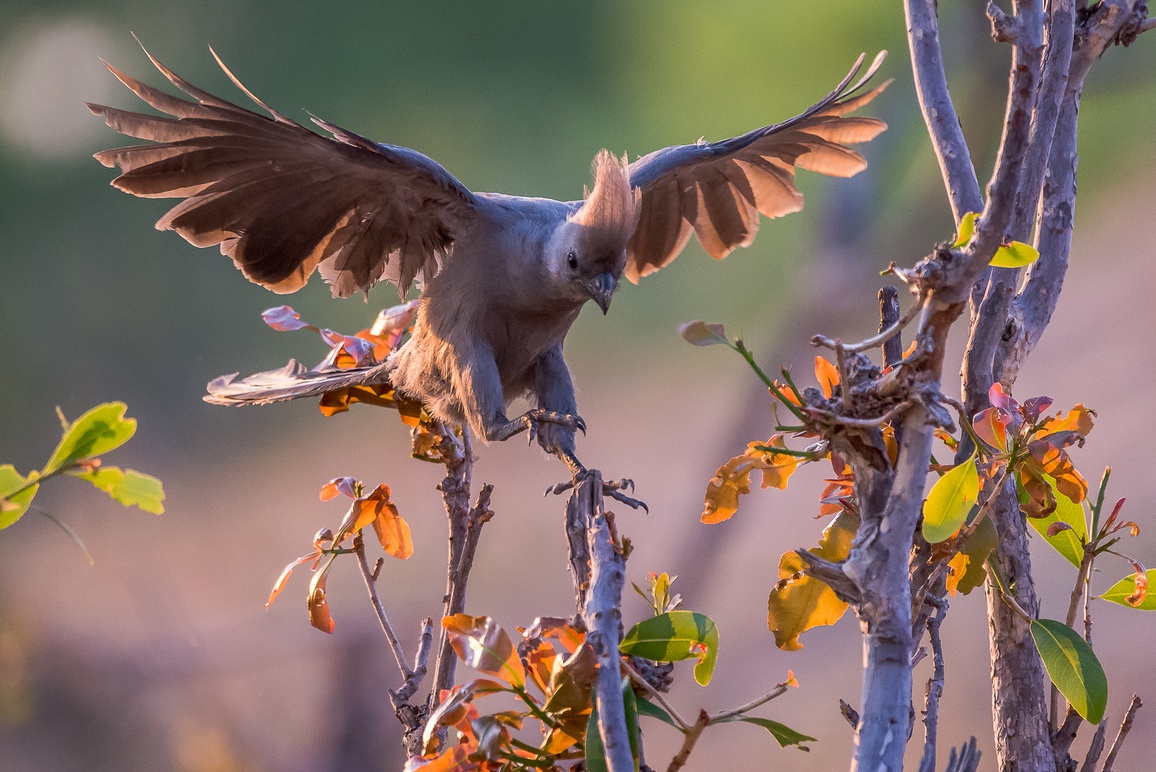
Capture all the feathery action on camera, Image Credit: Dave Gale
Victoria Falls Day Trip
You simply cannot visit Zimbabwe without seeing Victoria Falls in person! With about an hour’s drive between Hwange and Victoria Falls, you can easily combine your safari with a visit to the famous “Smoke that Thunders”. Speak to our Travel Experts to arrange this outing with your lodge.

Visiting Victoria Falls is a must, seeing it from the sky is even better
Bumbusi National Monument
Take a step back into history by visiting the Bumbusi National Monument in Hwange National Park, where you can see the remains of colossal sandstone buildings from the eighteenth and nineteenth centuries.

Learn more about the area’s history, Image Credit: Bumbusi Wilderness Camp
My Favourite Places to Stay in Hwange National Park
There are many accommodations in Hwange National Park; however, these are a few of my tried-and-tested favourites.
1. Somalisa Camp
Beyond the beautifully furnished tents, I fell in love with Somalisa Camp’s expansive deck, where I spent lazy afternoons reading, only to be interrupted by an inquisitive elephant or two.
Due to its prime position on the Kennedy Vlei floodplain, there’s plenty to sit and stare at and many other wildlife vistors greeting you. It really feels immersive, with the surroundings being the hero instead of the camp itself. Although it’s pretty spectacular in itself and eco-friendly too, with a fully solar power farm and water purity system that allows the camp to recycle 80% of its water used. These efforts have not gone unnoticed, as it has been awarded the first GOLD Green Tourism Certification in Zimbabwe.
Another favourite of mine is the copper bathtub and outdoor shower, as well as the star tent, where you can arrange for a sleepout under the stars.
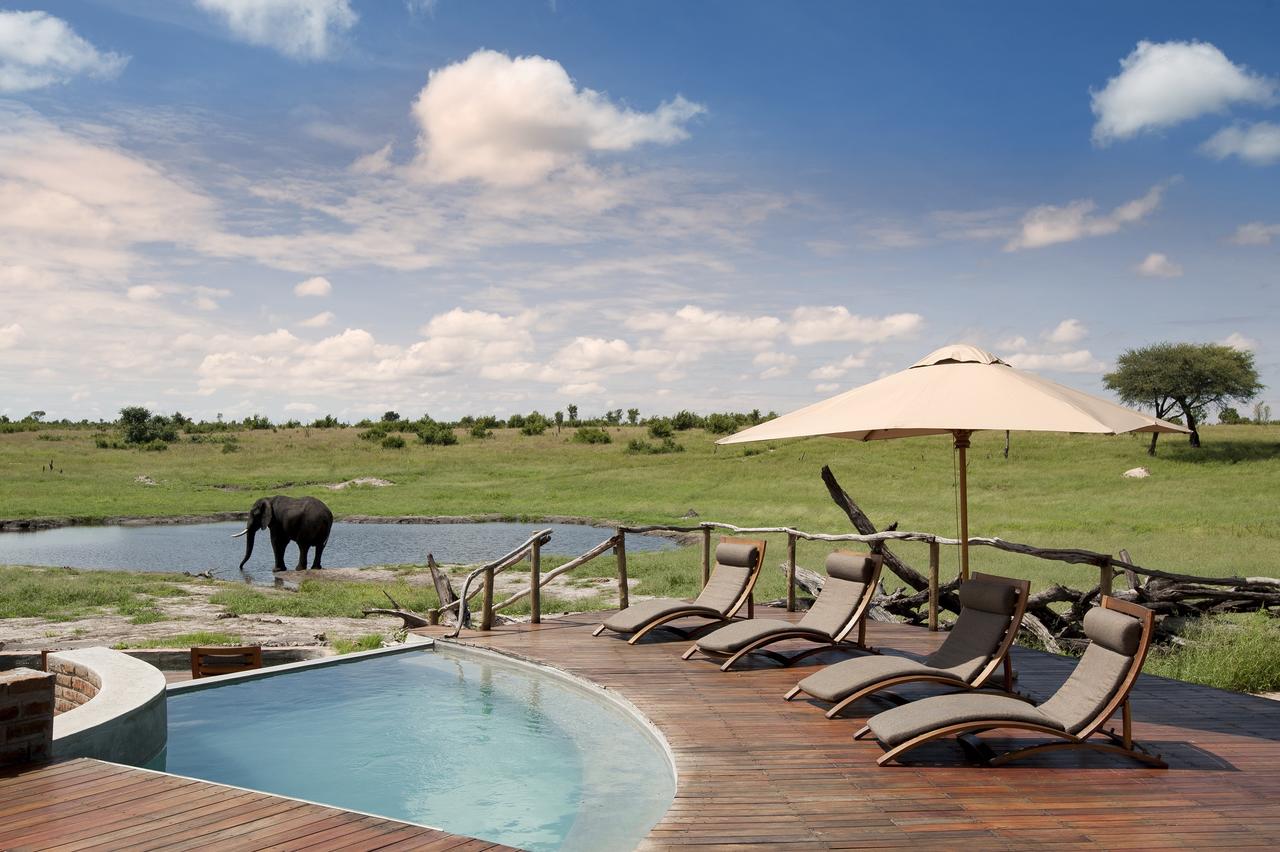
Watch herds of elephant drink from a nearby waterhole while cooling off, Image Credit: Somalisa Camp
Highlights
- Their Elephant Pool was named after its gentle giants frequent visitors
- Intimate, accommodating a maximum of 14 guests at a time
- Sleepout experience can be arranged for an additional cost
Who’s it for?
Eco-warriors and travellers are looking for a hideout to bond with their nearest family and friends. Please note that children over the age of 12 years old are welcome but walking safaris are only for those older than 16 years old.
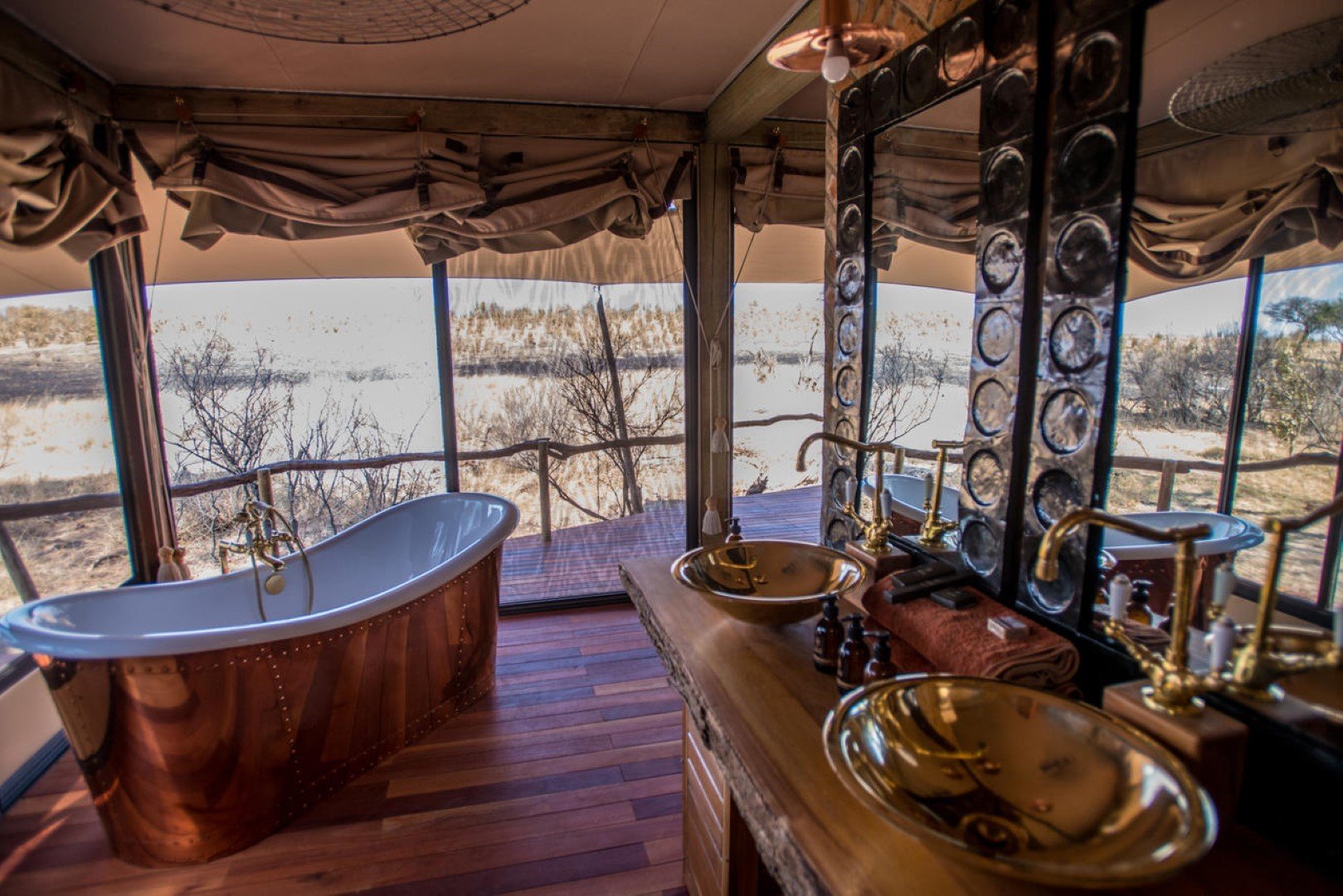
Bath with a view, Image Credit: Somalisa Camp
2. The Hide Safari Camp
The Hide Safari Camp is located in a private concession in Hwange National Park. It has everything you could need or want on your African safari, including an underground tunnel leading to a hide overlooking a popular waterhole! Its reputation as the “Best Tented Safari Camp in Zimbabwe” means you can rest assured you’re in good (no, the best) hands.
From sunrise to sunset, the little moments stand out at The Hide Safari Camp, with a team magically making everything happen behind the scenes. This setting is especially great for wildlife photographers as you’ll get unique angles from its namesake hide.
But you don’t even have to leave your tent to admire the wildlife, as elephants and other species are known to gather at the water hole the camp overlooks.
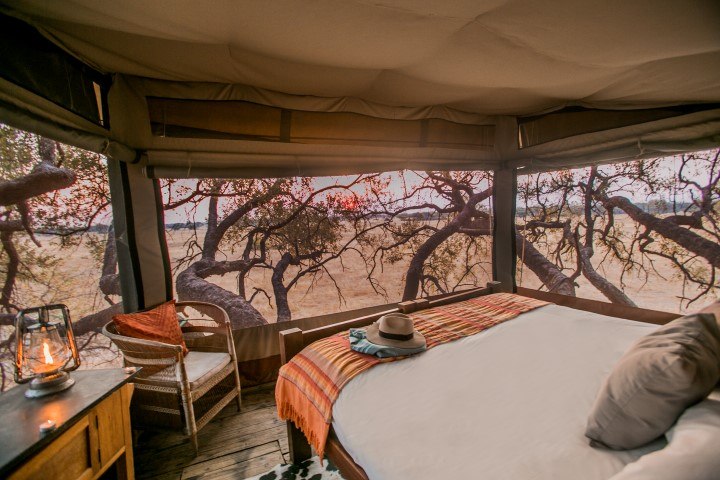
Spend a night at the Dove’s Nest for a sleepout experience, Image Credit: The Hide
Highlights
- Underground deck-to-waterhole tunnel for excellent close-up game viewing
- Located on a private concession for a more exclusive experience
- Consistently awarded for its high standard in luxury safari accommodation and experiences
Who’s it for?
It’s perfect for budding or pro wildlife photographers, safari enthusiasts, and romantic getaways like a honeymoon (in particular, their Dove’s Nest sleepout experience).
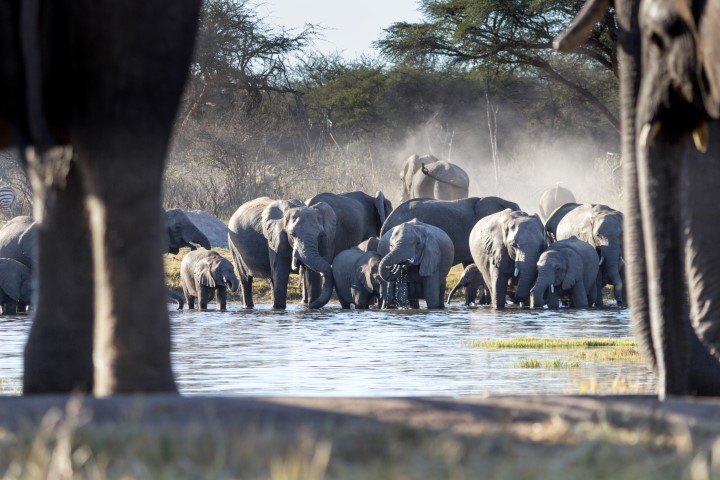
Get the best views of the wildlife from the camp’s famous hide
3. Verney’s Camp
I enjoyed the simplicity of this lodge, offering a very authentic safari experience without sacrificing quality and comfort. As it’s located in a private concession, I loved being able to go out on night game drives to witness the nocturnal species.
The area is incredibly rich in wildlife, with migratory elephant, buffalo and antelope herds frequenting Verney’s Pan, which in turn attracts predators, in particular a pack of African wild dogs and hers of lions. You can just imagine the action that ensues!
For families looking for an eco-friendly, immersive safari experience in a private concession, you can’t go wrong with Verney’s Camp.
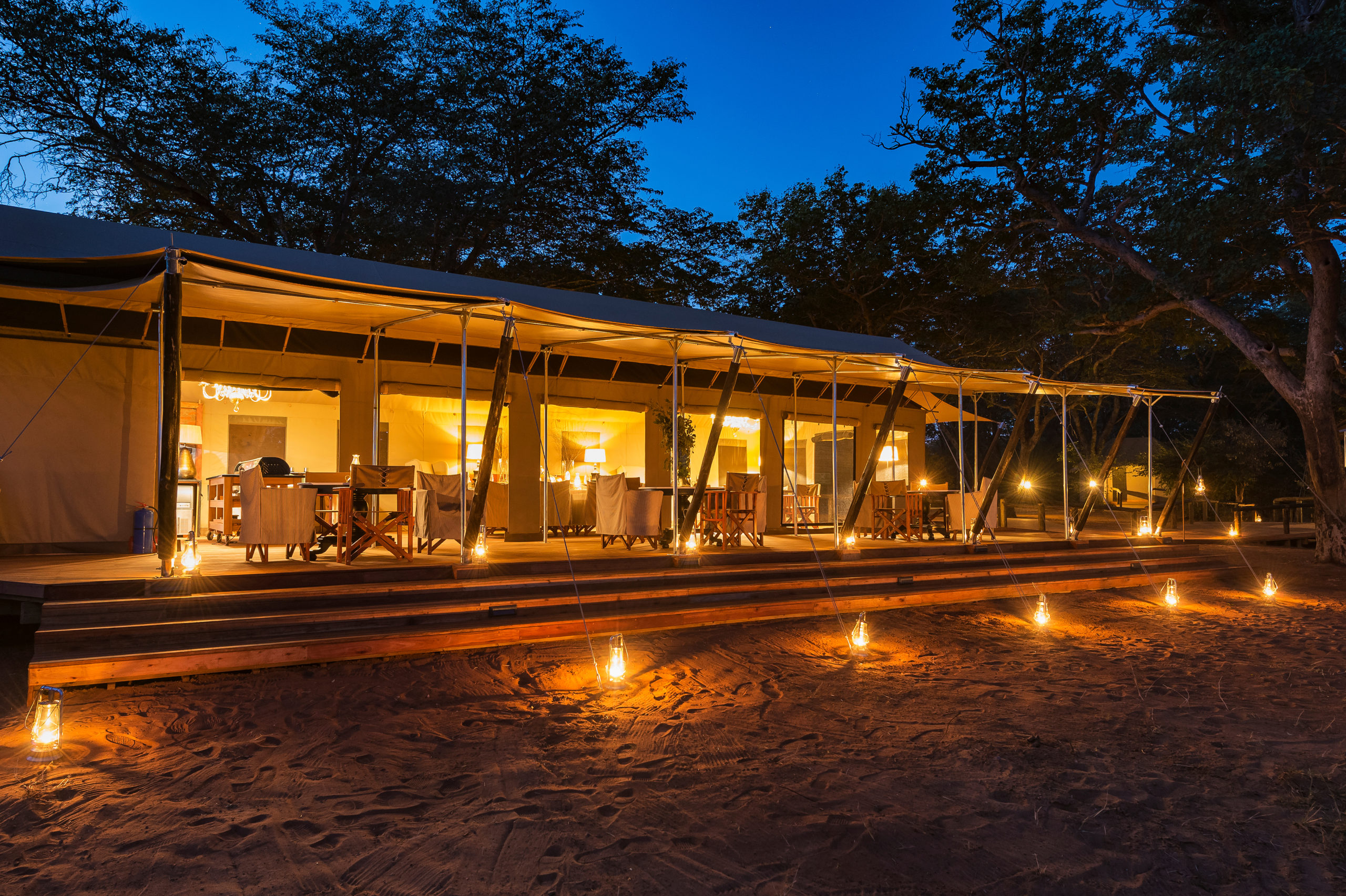
Verney’s Camp welcomes children of all ages, Image Credit: Machaba Safaris
Highlights
Who’s it for?
Welcoming children of all ages, Verney’s Camp is perfect for your next family holiday.
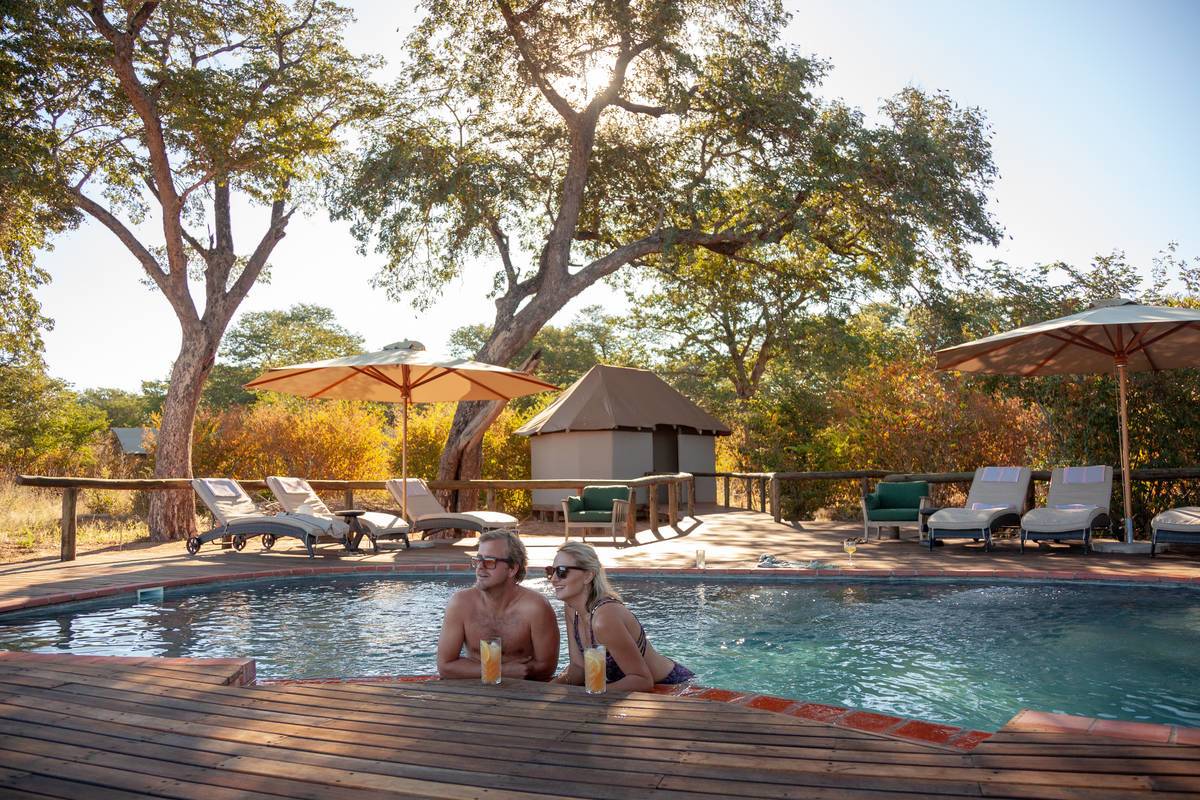
Soak up the sun and the views at Verney’s Camp, Image Credit: Machaba Safaris
Ready to Experience Hwange National Park Yourself?
I cannot recommend a safari in Hwange National Park enough! Are you ready to embark on an adventure of your own? Whether it’s a milestone celebration, family vacation, or you’re just looking for an excuse to escape, Hwange is an excellent choice. And why stop there? Our Travel Experts will recommend other destinations you can add on to your dream African safari!
Contact our Travel Experts, and let’s start planning your tailor-made African holiday!

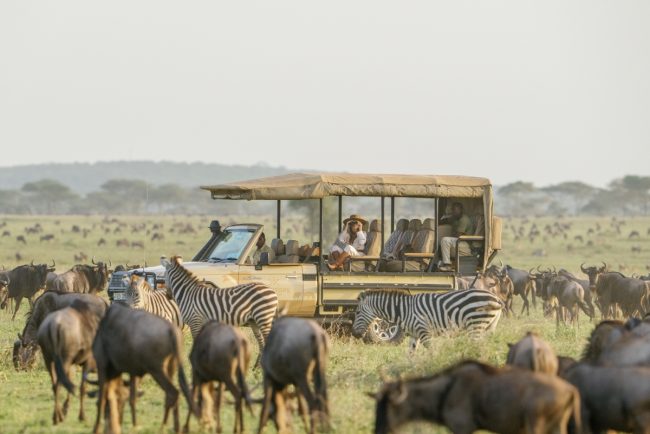
5 Things You Never “Gnu” About The Great Wildebeest Migration
It’s the dreaded moment for all introverts: the awkward lull in conversation begging to be filled at a party. But fear not, for the Great Wildebeest Migration is coming to your rescue! Let these lesser-known facts be the saviour of your dinner conversations and impress your friends […]
TanzaniaIt’s the dreaded moment for all introverts: the awkward lull in conversation begging to be filled at a party. But fear not, for the Great Wildebeest Migration is coming to your rescue! Let these lesser-known facts be the saviour of your dinner conversations and impress your friends with fascinating insights about this magnificent phenomenon.

Millions of wildebeest, followed by gazelle and zebra make their way through the Serengeti, Image Credit: Serengeti Bushtops Camp
The Great Wildebeest Migration’s Entourage
This annual spectacle involves a united circular movement of approximately 1.5 million hoofed animals. The primary participants are blue wildebeests, numbering around one million, accompanied by vast herds of zebras, elands, impalas, and gazelles.
The Great Wildebeest Migration also attracts a host of predators like lions, cheetahs, and hyenas, drawn by the opportunity to hunt prey amid the moving masses. And let’s not forget the eager Nile crocodiles awaiting the herds’ river crossings, anticipating a chance for a meal.
Here are five other baffling facts you probably did not know about the Great Wildebeest Migration, including some first-hand insights into what it’s like to see this spectacle in real life
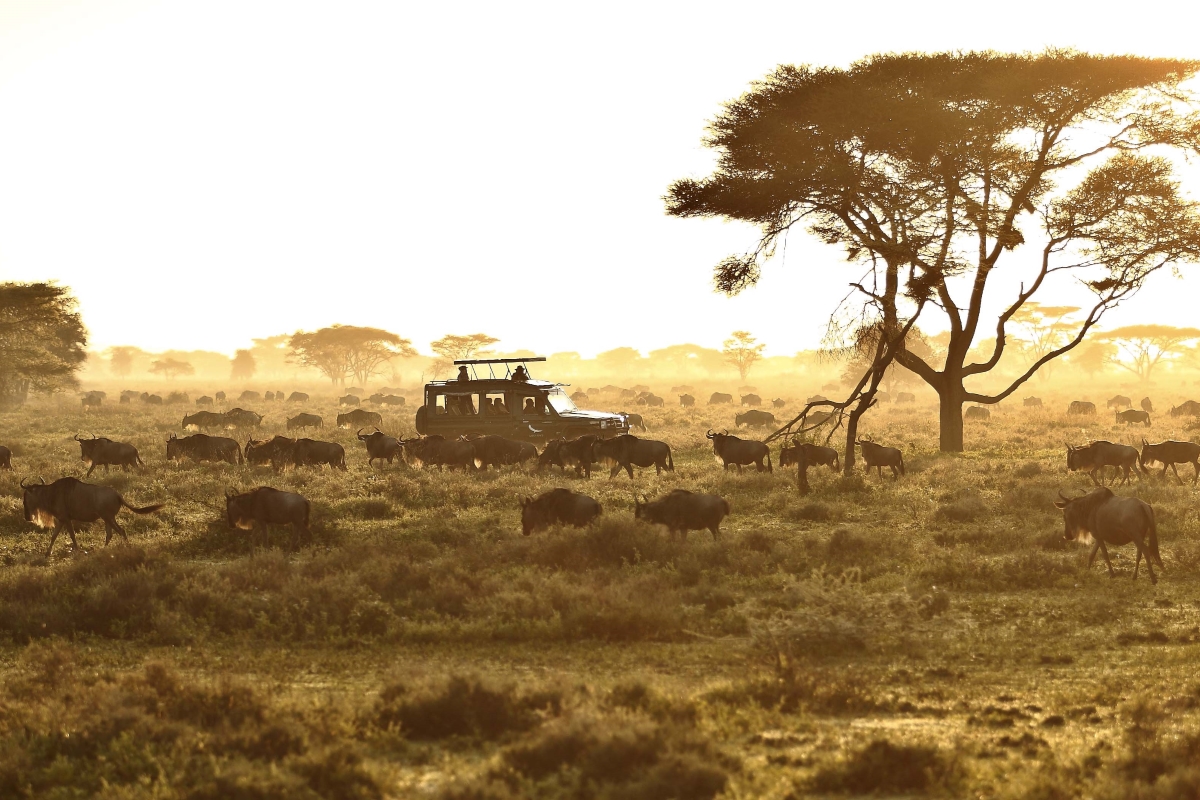
Fulfill your dream of a safari in Tanzania, Image Credit: Serengeti Under Canvas
1. Scent-sational Soles Leading The Way
The Great Migration isn’t just one large herd. Instead, it’s a main herd accompanied by several satellite herds that splinter and reform over time. But did you know that these wildebeests have glands in their hooves that release pheromones and faeces onto the ground, leaving a trail for them to follow each other’s scent?
This simple yet remarkable mechanism helps the splintered herds of the Great Migration find each other again, ensuring cohesion despite their temporary separation.
And echoing the marvels of the Great Wildebeest Migration, our Travel Expert Dee Dlamini’s first-hand encounter during a game drive in Maasai Mara, Kenya vividly illustrates its breath-taking scale and sensory immersion.
“What struck me was just how sensory an experience this was, the proximity to this natural spectacle was nothing short of phenomenal. To this day, it remains the most remarkable experience of my life.” – Dee Dlamini.
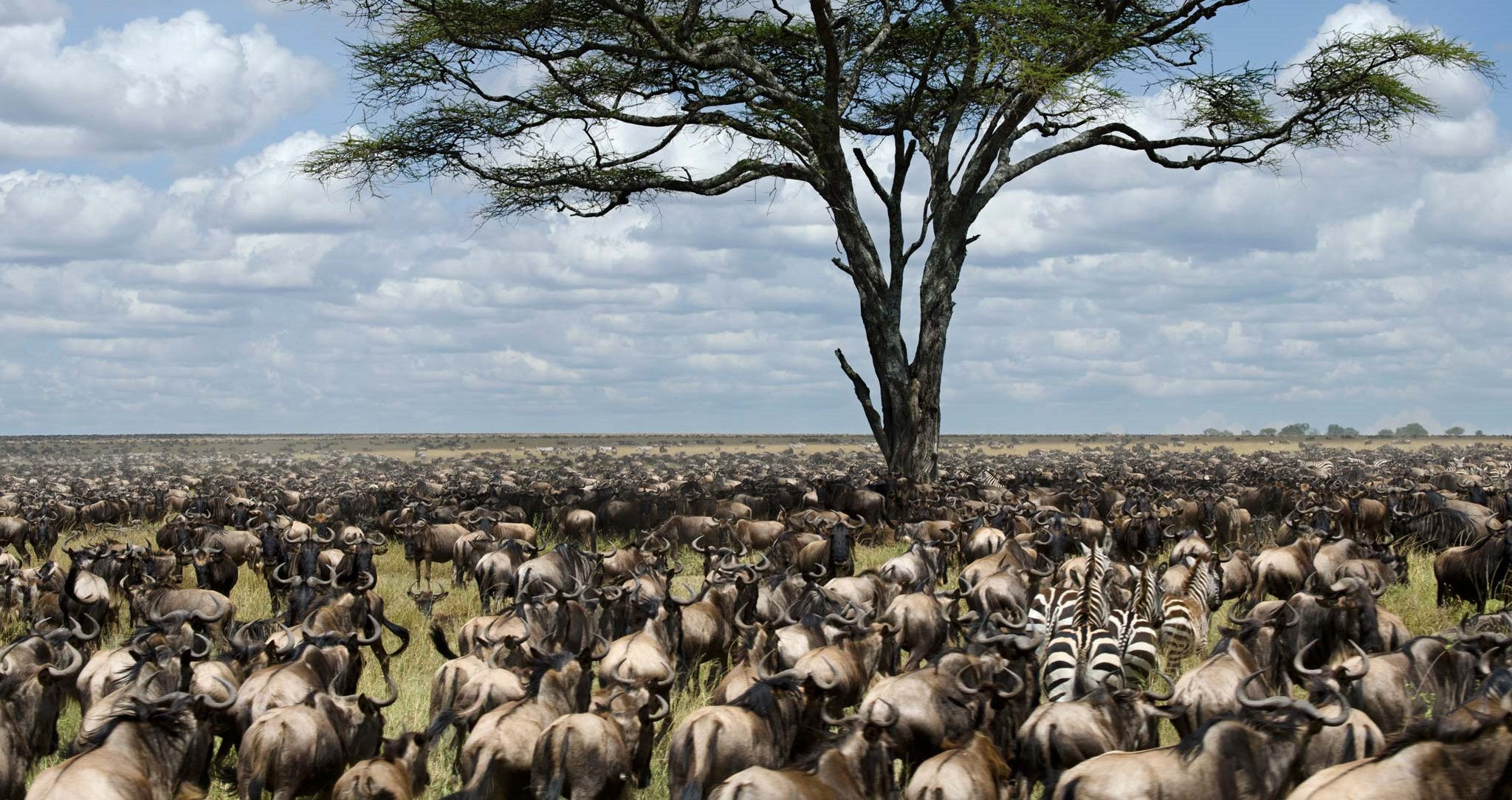
Imagine being in the thick of this astounding spectacle!
2. Wildebeests Are Born to Run
Wildebeest and zebra calves are astounding from birth, quickly standing and even running around within hours. Wildebeest calves can walk within minutes and keep pace with the herd, even outpacing predators like lions. Zebra foals also exhibit remarkable mobility shortly after birth.
These species are precocial, born in an advanced state to survive the predators lurking around. Gestation periods range from nine to 13 months, with approximately half a million calves born in a two-month period, mostly between January and March in the south-eastern Serengeti plains.
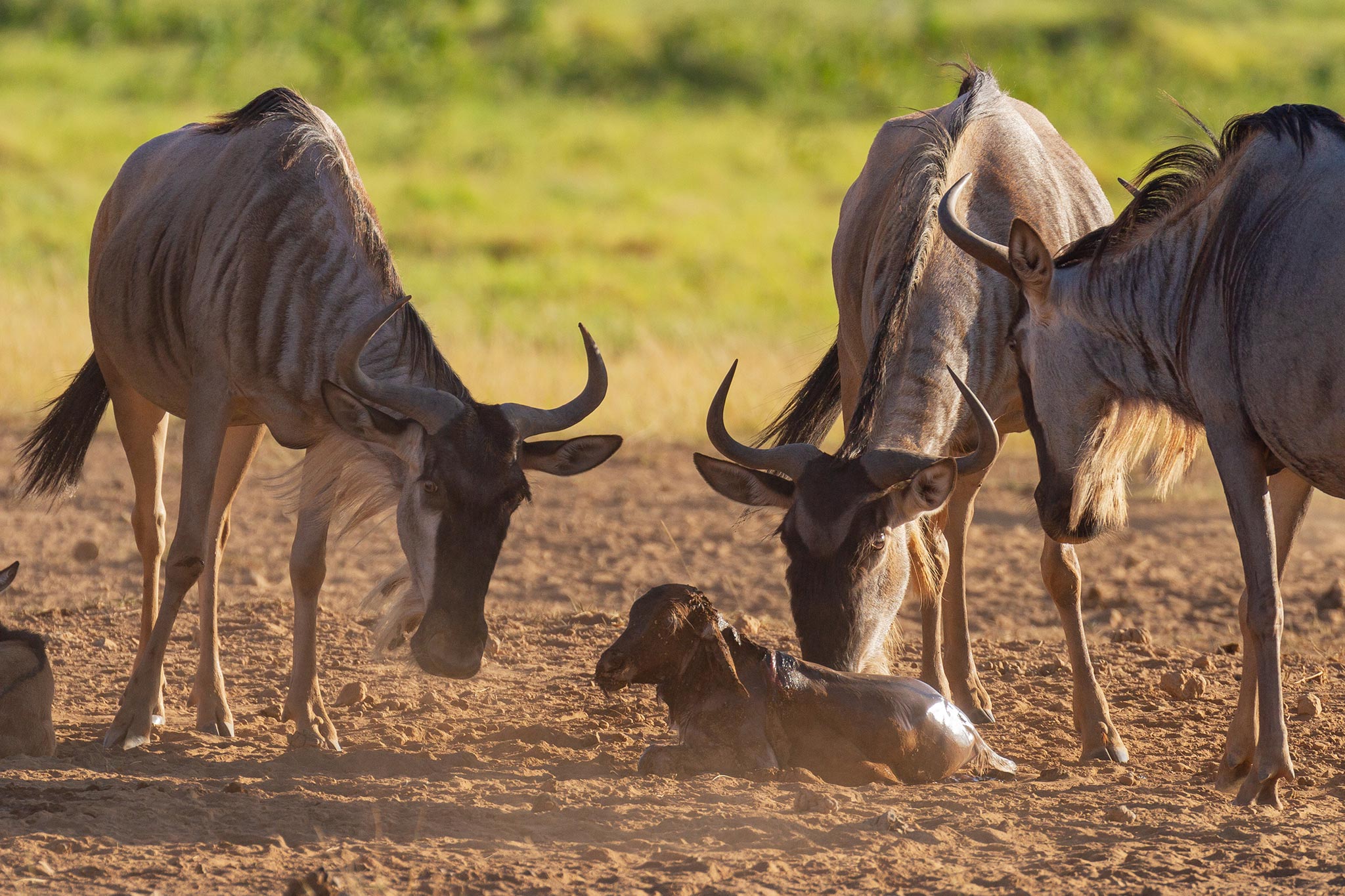
This little calf can stand minutes after birth!
3. Check The Loos For More Than Just Gnus
Amidst the breathtaking landscapes of the Great Migration, an unexpected encounter with Africa’s apex predators is always possible. With their formidable appetite, lions can devour up to 40kg (88 lb) of wildebeest in one sitting, showcasing their impressive dining habits.
If you’re eager to witness lions in the wild, look no further than the Great Migration national parks located in the Serengeti, Maasai Mara, and Ngorongoro Crater, all renowned for their impressive lion sightings.
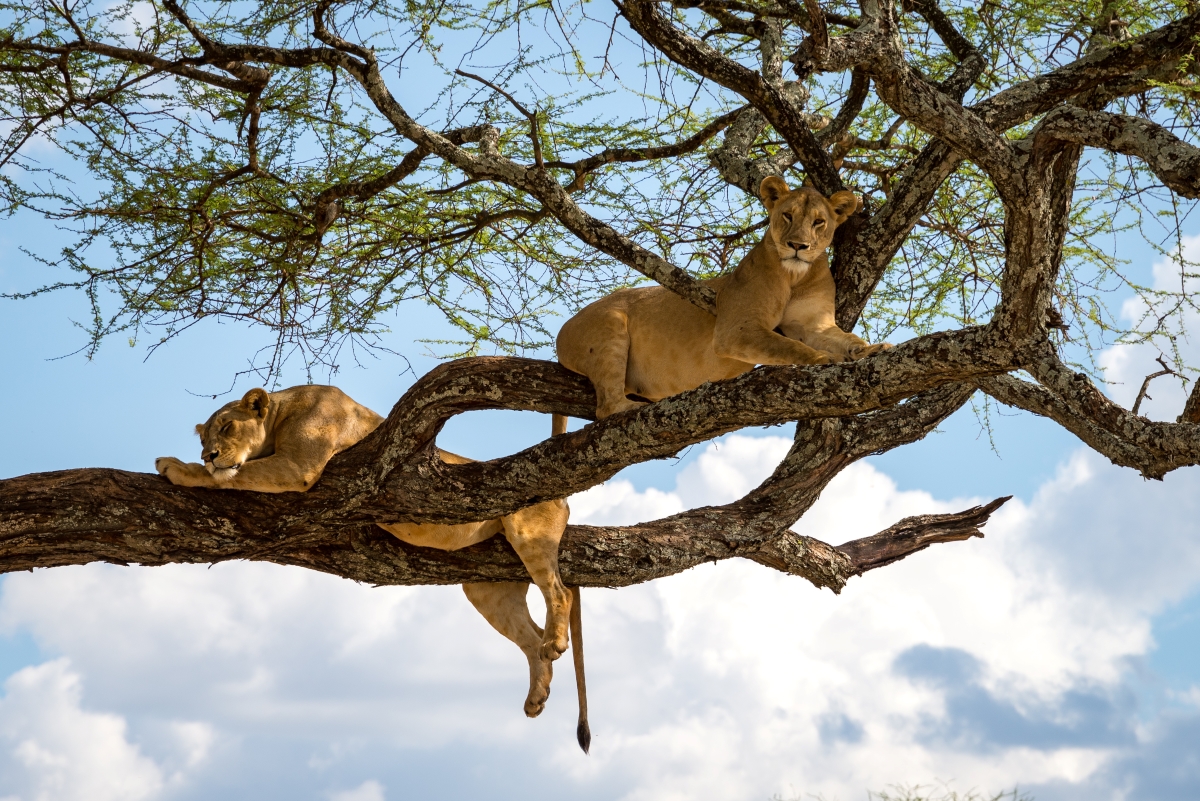
Tanzania is also home to unusual tree-climbing lions!
4. Did You Know That Gnu Grunts Are Unique?
Wildebeest each have their own unique grunts, from which they get their other name, gnu. The word is onomatopoeic since it mimics the grunting sound wildebeests make. These grunts play a crucial role in helping the animals locate each other. In darkness or amidst a large herd, a mother and her foal, for example, can reunite by listening for their distinct “gnu” calls.

Gnus and their grunts share an intriguing similarity with snowflakes
5. Lean Cuisine
Did you know that Nile crocodiles, some of the largest in Africa, can weigh up to 750kg? Despite their size, these formidable predators have a remarkable ability to survive on minimal feedings. During the long dry season, when the Great Migration herds must cross rivers like the Grumeti and Mara Rivers, Nile crocs pose a significant threat.
Despite their immense size, some of the larger crocs can sustain themselves on just one or two feeds per year! They gorge themselves during these feeding events and then enter a semi-hibernation state, slowing their heart rate and metabolism until the next opportunity arises. It’s truly astonishing!
One of our Travel Experts, Janine, was lucky enough to witness the spectacle of a river crossing in person!
“One thing I did not realise, which I do not think many prepare themselves for, is how emotional such a spectacle can be! You’re watching nature in its rawest form.” – Janine Gous.
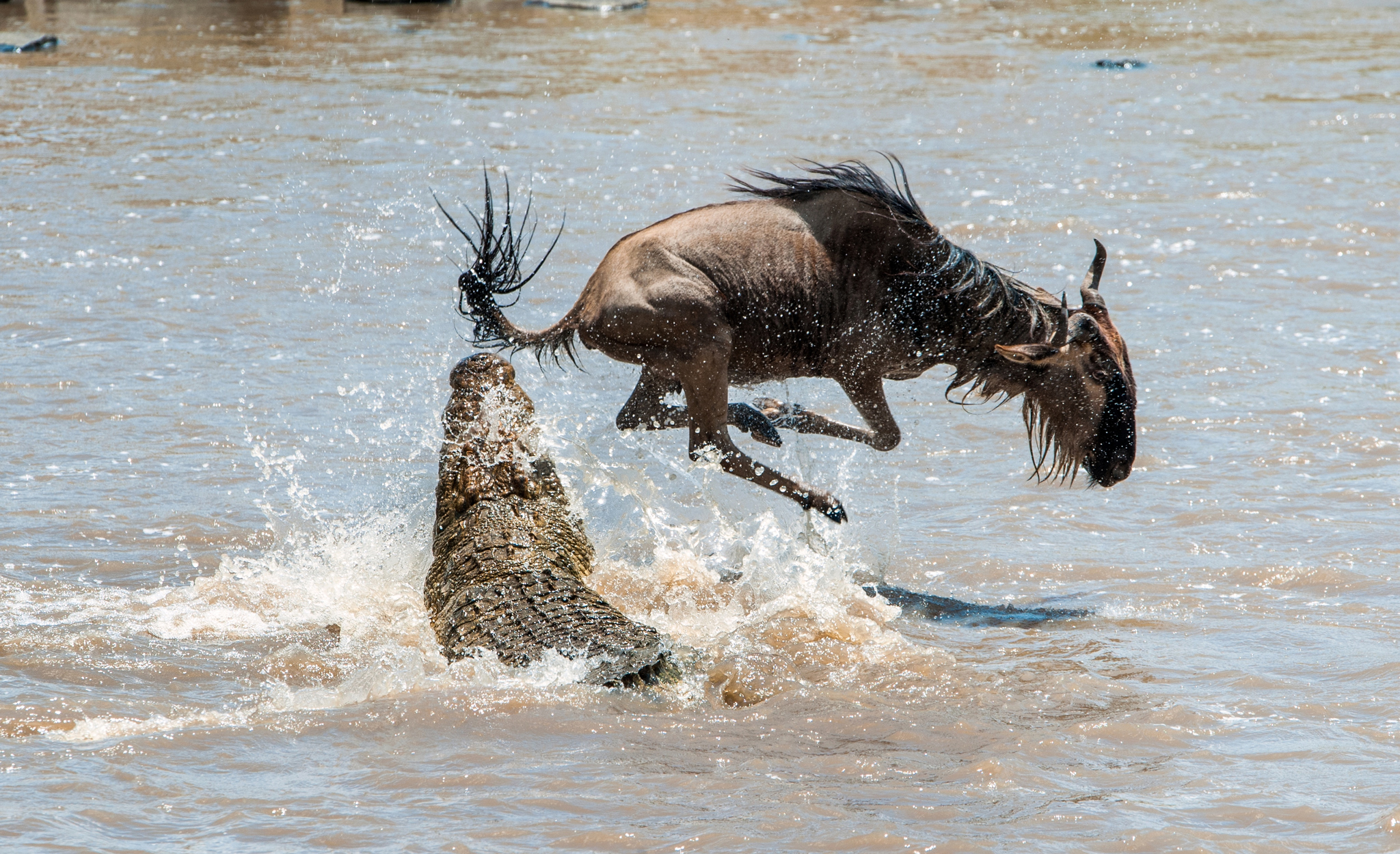
Nile crocodiles can live for 70-100 years!
“One minute, you’re watching the herd along the banks of the river, and it only takes one brave leader to take the plunge into the water, and the rest follow within seconds…” – Janine Gous.
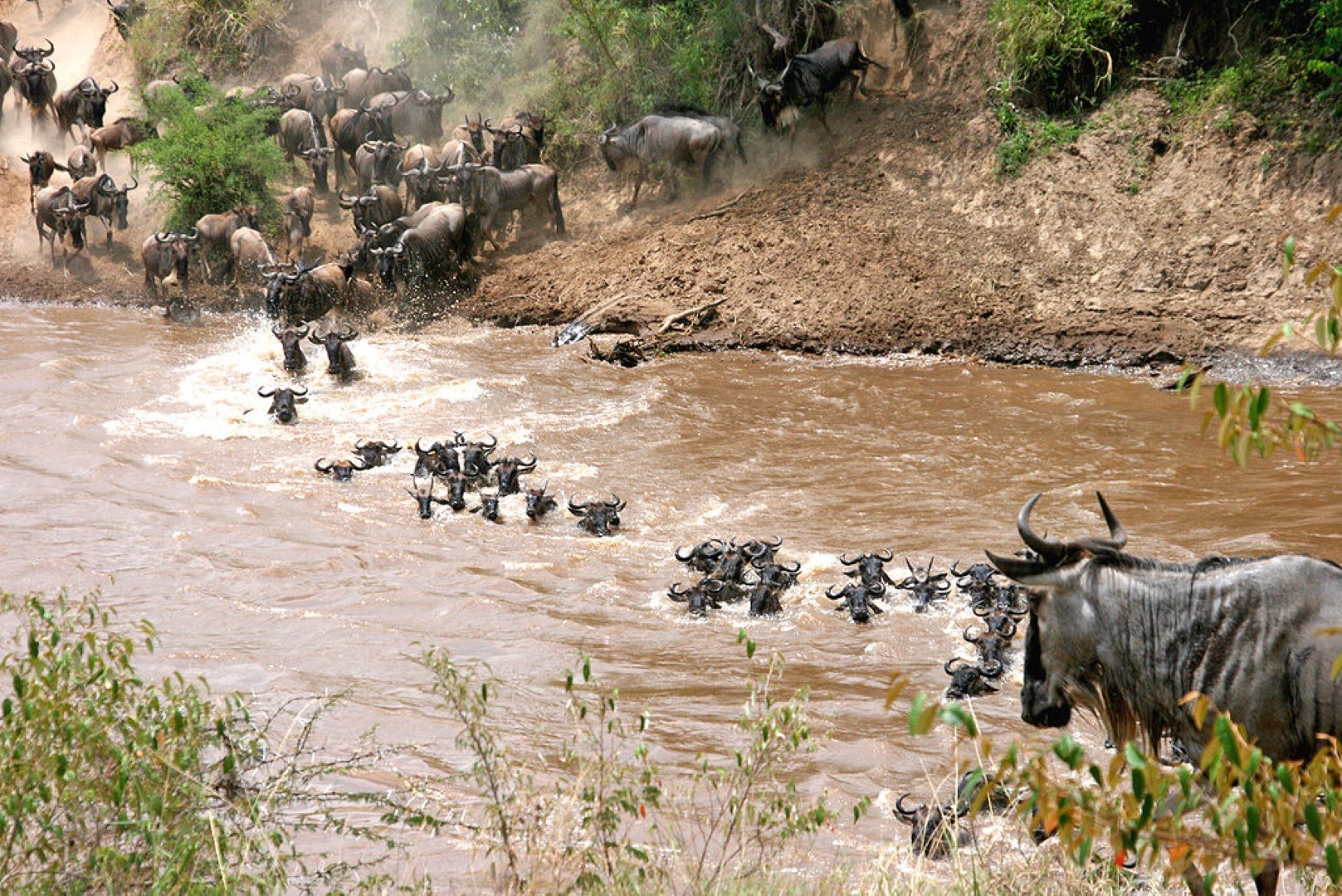
Witnessing a river crossing is a dramatic experience
Ready, Set, Safari
Now that you’re armed with all the fascinating facts about the Great Migration, what’s stopping you from experiencing it first-hand? It is a thrilling sight and an opportunity to create memories that will fuel your dinner party anecdotes for years to come.
So don’t hesitate to get in touch with our Travel Experts to plan the trip of a lifetime.


Why a Zimbabwe Safari Will Take You By Surprise
A Zimbabwean safari is akin to a hidden treasure – known to those who seek it yet concealed to the casual observer. It stands as the underdog of African safaris, much like the underestimated character in a bestselling novel. While many flock to world-famous (and rightly so!) […]
ZimbabweA Zimbabwean safari is akin to a hidden treasure – known to those who seek it yet concealed to the casual observer. It stands as the underdog of African safaris, much like the underestimated character in a bestselling novel. While many flock to world-famous (and rightly so!) destinations like Kruger National Park, Zimbabwe patiently awaits its moment, poised to amaze those who uncover its secrets. With the expert guidance of our Travel Expert, Sam, we unpack why Zimbabwe is a safari gem…
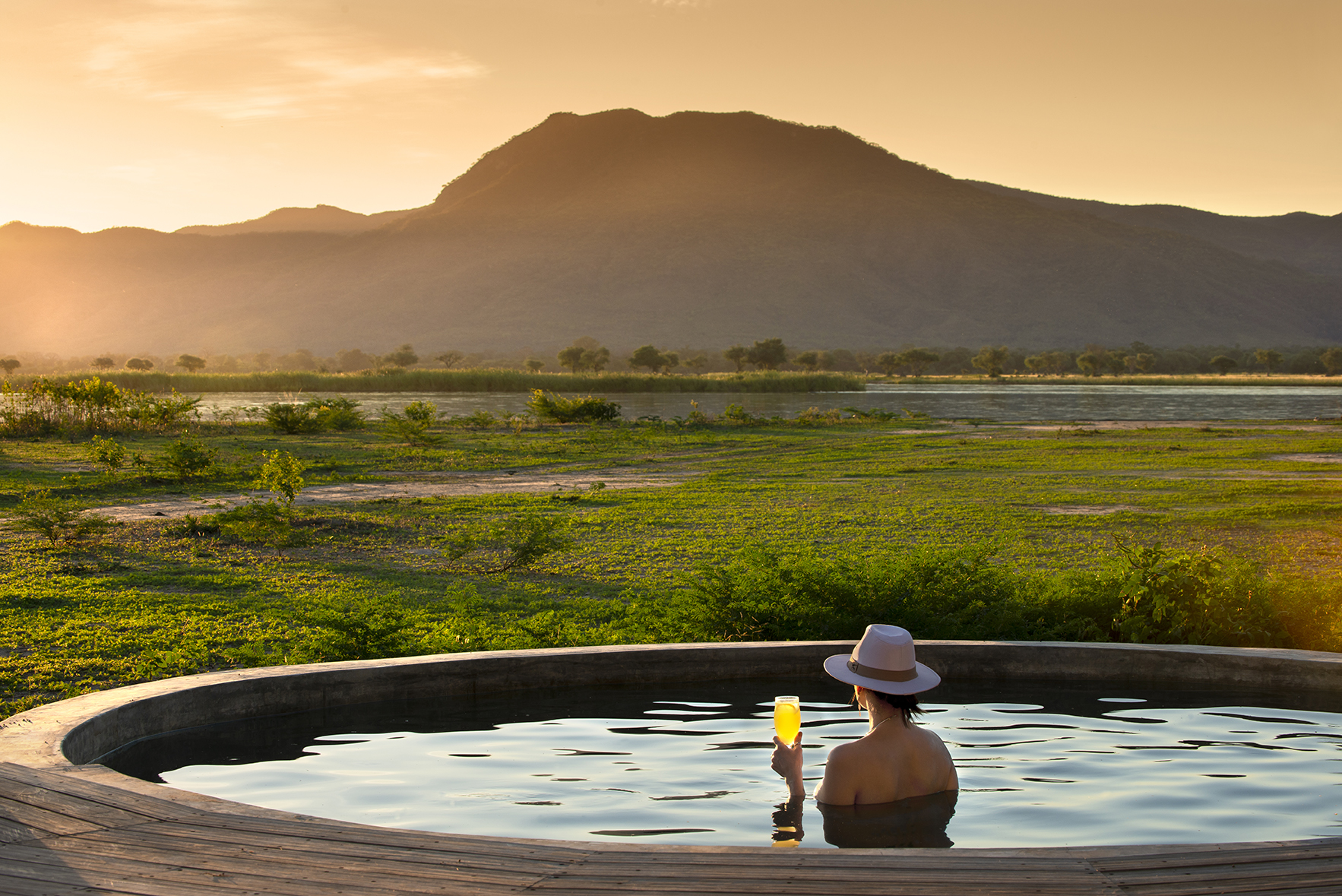
Zimbabwe’s exclusivity makes for an unforgettable safari, Image Credit: Nyamatusi Camp
Why Zimbabwe is a Safari Gem
So, what exactly is it about Zimbabwe that has left such a lasting impression on Sam, someone who’s been all over Africa for countless exciting safari adventures?
“The fact that it’s so remote makes Zimbabwe stand out. If you do a safari in Hwange and Mana Pools, or even the Kariba area, it’s very quiet, and there are generally far fewer vehicles. You also often get the opportunity to get out of the vehicle, do some proper walking, and get up close to animals. You don’t tend to fight for sightings with other guests. You can go a whole game drive without seeing another vehicle.” – Sam
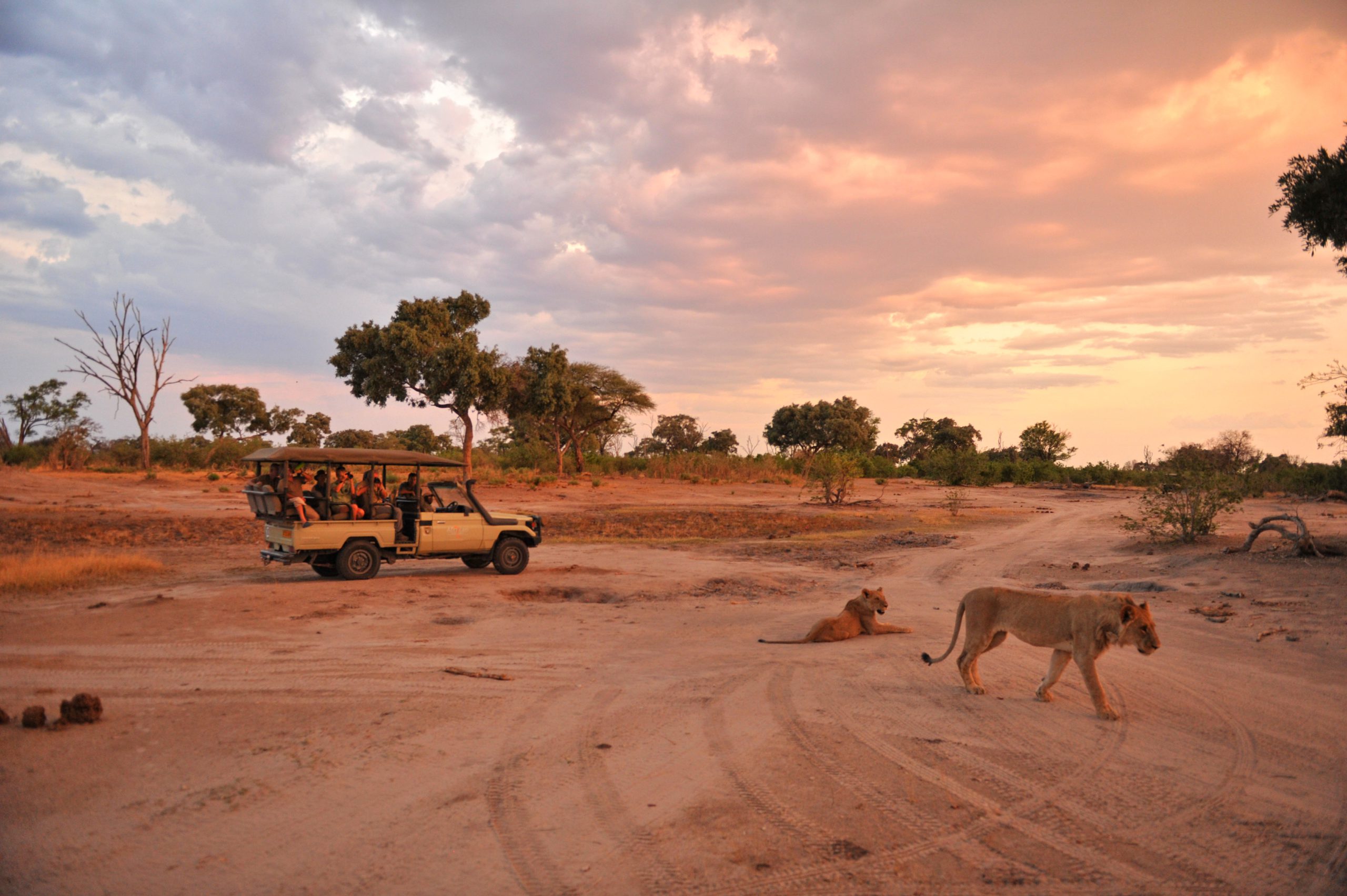
You’ll feel as if you are the only people in the park, Image Credit: Somalisa Camp
“I love Zimbabwe. I absolutely absolutely love it! It’s very close to my heart because every time I’ve been to Zimbabwe, regardless of the hotel, camp, or destination I stayed at, it has always delivered something amazing. The people are very friendly. It’s not inauthentic, it’s not overhyped, it’s real. It’s calming, it speaks to you, it’s real Africa.” – Sam
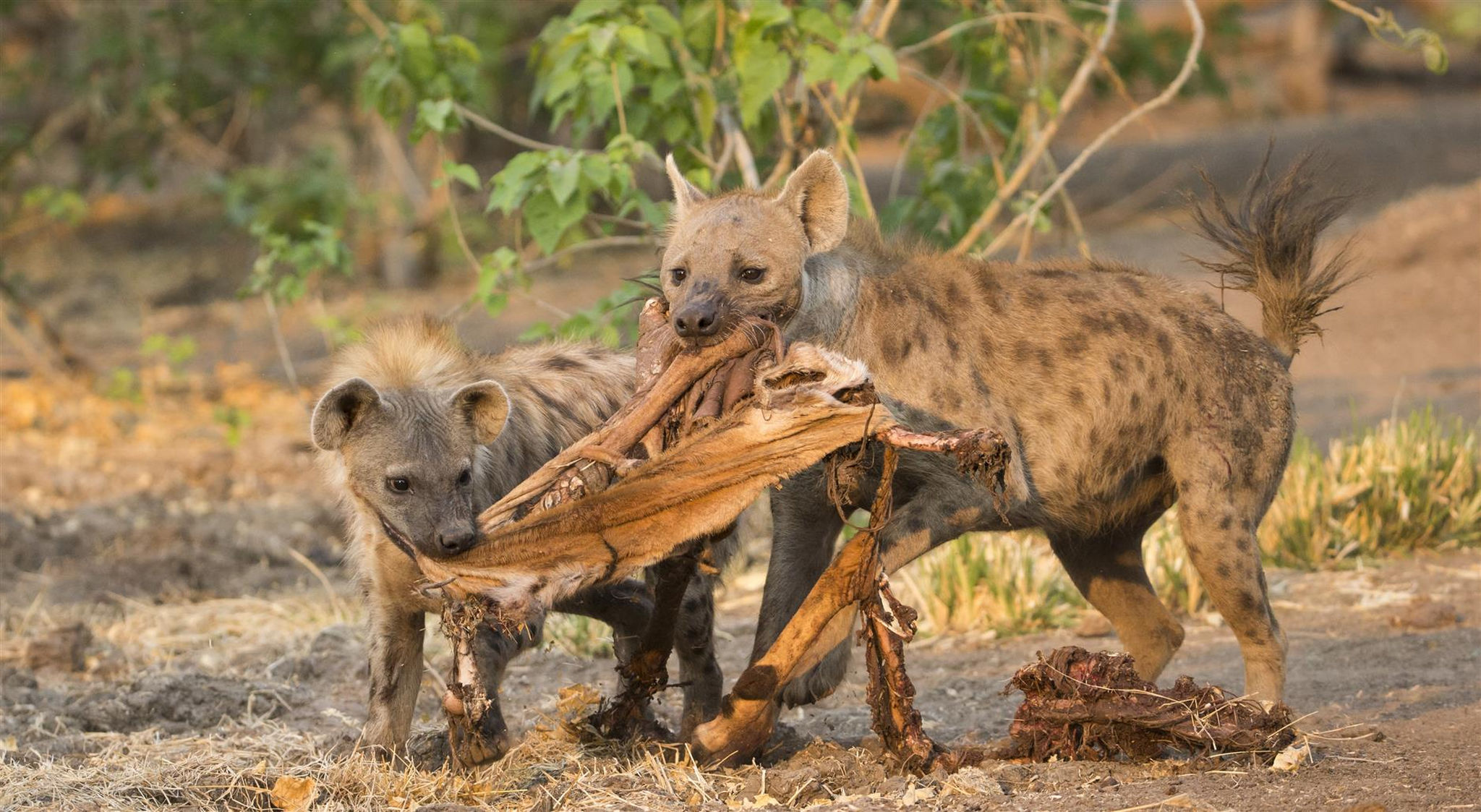
Expect the unexpected when on a Zimbabwean safari
Addressing The Elephant in The Pool
One of the incredible things Zimbabwe always delivers on is elephants! You’ll have your fair share of elephant sightings when visiting the country.
“For me, elephants come to mind when I think of Zimbabwe, only because I’ve had the most insane elephant sightings and interactions. Every time, it has been elephant central. I know they say Botswana is the land of elephants, but I think Zimbabwe is the land of elephants, as I’ve seen the most incredible huge tuskers in Hwange.” – Sam
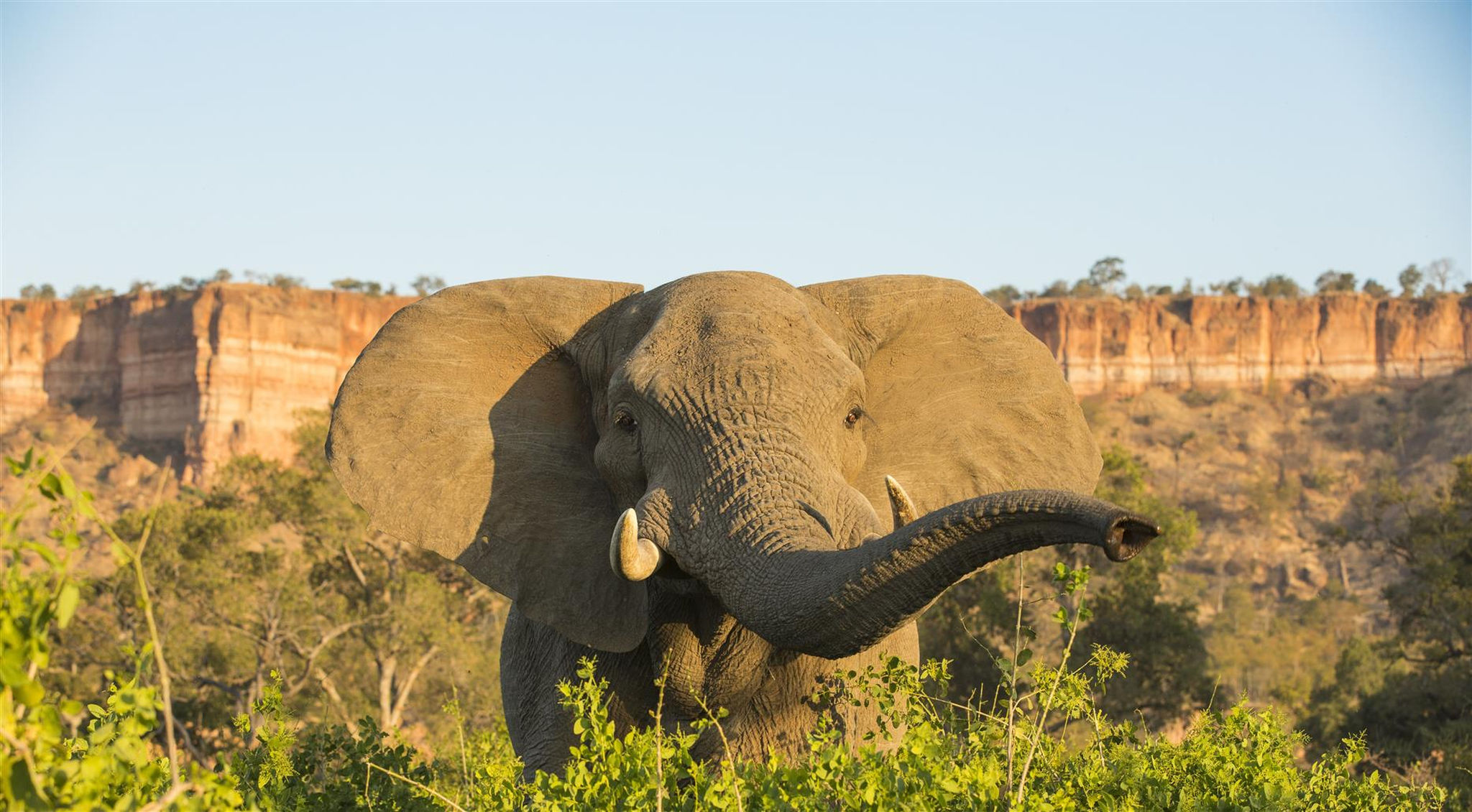
A bull elephant making his presence known in Hwange National Park
One such memorable Hwange National Park elephant sighting happened while Sam was enjoying a dip in the pool at Somalisa Camp.
“It’s not just something you see on Instagram – this happened to me, on the night I stayed there. They had a swimming pool, and the elephants would come every day, and they would all just drink out of the pool. Young, old, big, small, all the ellies would just drink out of this pool. We literally saw they were drinking out of the one side, and I was sitting on the other side of the pool, and there were like six of us just sitting there watching, taking photos, hearing the slurping. It was insane, absolutely insane.” – Sam
In fact, thirsty elephants have become such regular visitors to the outdoor pool at Somalisa that a second pool had to be built – reserved solely for humans to enjoy!
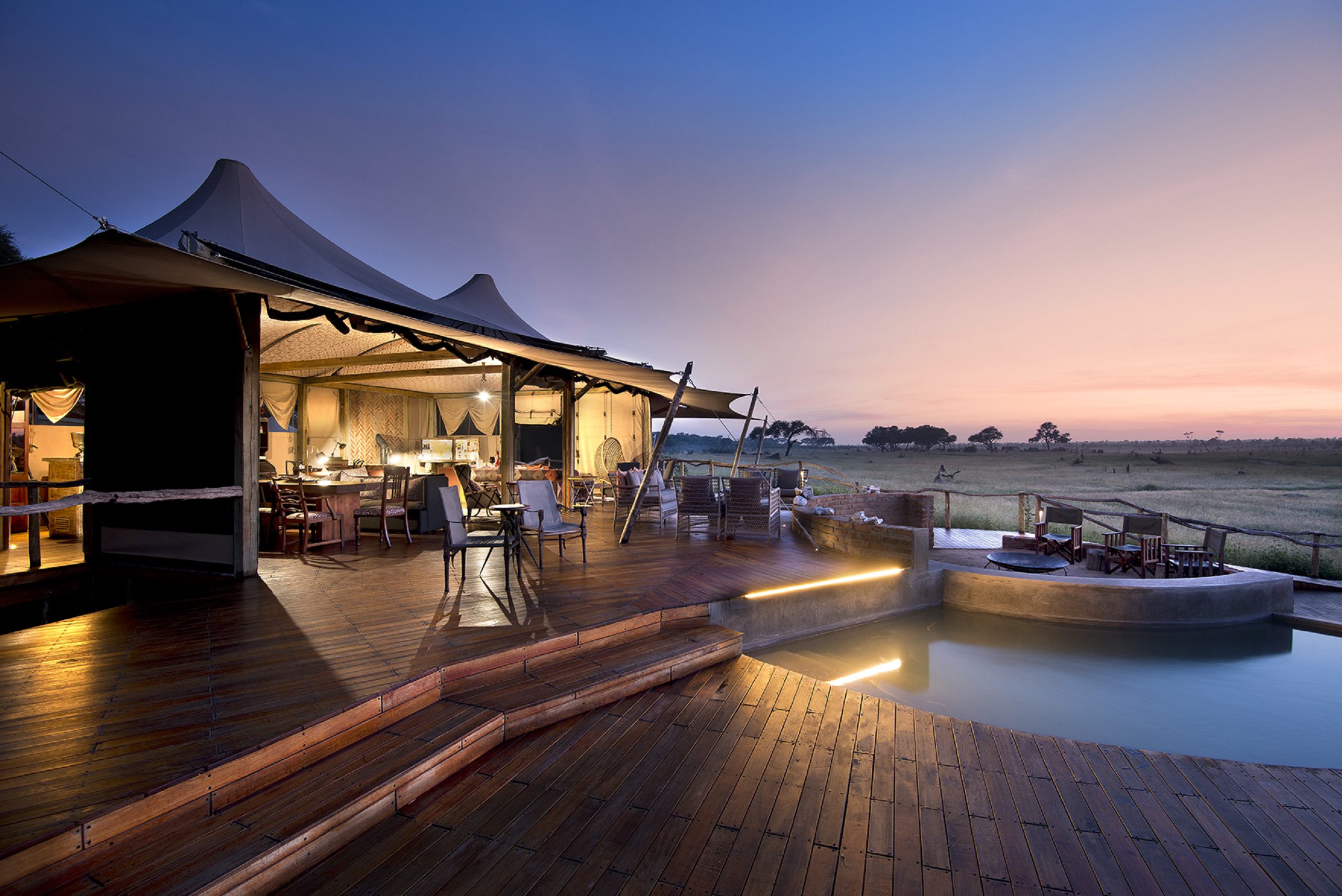
Take a dip and watch as herds of elephants pass by!
They Let The Dogs Out
Sam’s contagious enthusiasm for Zimbabwe is truly captivating. As I listened to her speak, I found my own excitement and curiosity beginning to flourish. Being naturally inquisitive, I couldn’t resist asking about one of her most unforgettable experiences, which turned out to be encountering African wild dogs, one of the most elusive animals to try and spot on safari, in Mana Pools National Park.
“We were doing a safari walk, and we happened to see some. We crouched down and sat there and watched them for almost an hour just interacting. And because they were so close, they were literally on the other side of a dry riverbed; we didn’t bother them, and they didn’t bother us. There was no one around us. No vehicles, no noise, no anything, just us on foot and these animals, and it was the most incredible sighting.” – Sam

Get up close to one of Africa’s most elusive species
Book Your Zimbabwean Safari Now!
So, there you have it! Straight from someone who’s been to Zimbabwe (multipe times!), and loved it. Zimbabwe is calling your name and has so much to offer.
Take a page out of Sam’s safari book and add Zimbabwe to the top of your travel itinerary to experience the magic of an authentic and exclusive safari.
Reach out to our Travel Experts today, and let’s craft your perfect itinerary!
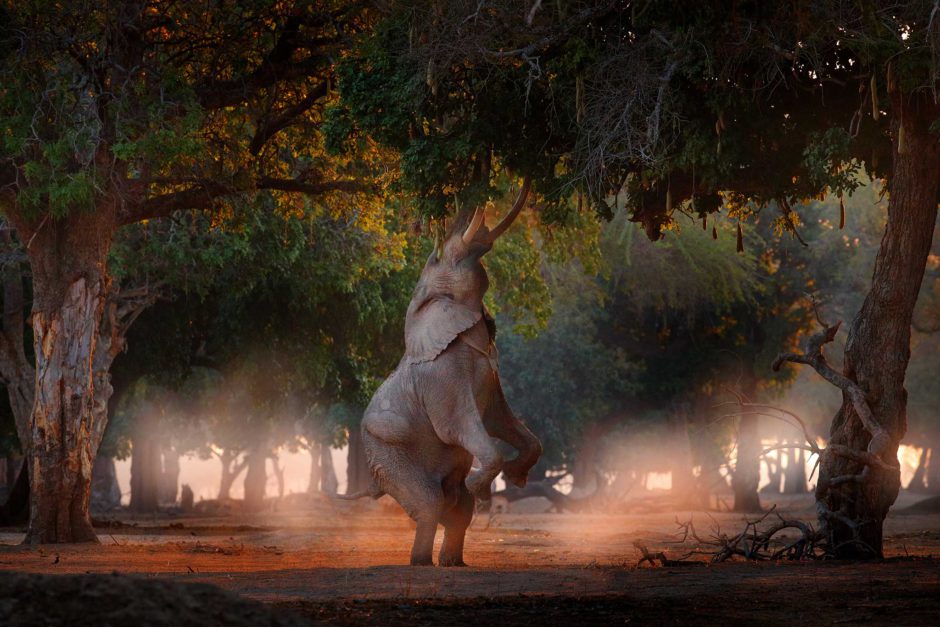
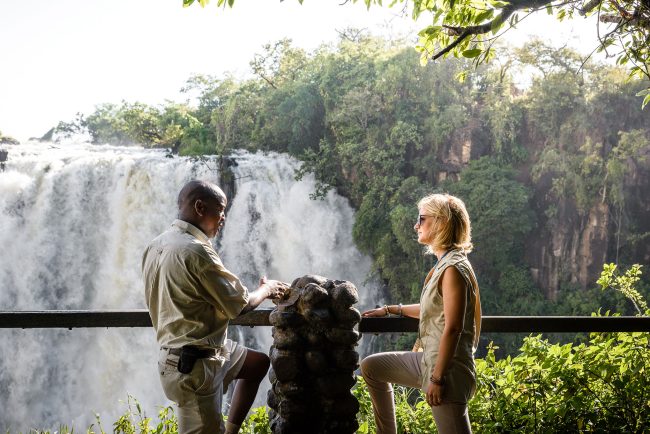
When is The Best Time to Visit Victoria Falls?
Africa’s landscapes look different throughout the year, and the world’s largest waterfall is no exception. Therefore, knowing when is the best time to visit Victoria Falls in Zimbabwe or Zambia is important to ensure you make the most of your visit to this UNESCO World Heritage Site. We break down each […]
ZimbabweAfrica’s landscapes look different throughout the year, and the world’s largest waterfall is no exception. Therefore, knowing when is the best time to visit Victoria Falls in Zimbabwe or Zambia is important to ensure you make the most of your visit to this UNESCO World Heritage Site. We break down each season with their many highlights to guide you.

The best time to visit Victoria Falls depends on what you want to do, Image Credit: Sanctuary Sussi & Chuma
The Best Time to Visit Victoria Falls per Season
Also known locally as “Mosi-oa-Tunya”, meaning “The Smoke That Thunders”, Victoria Falls is a year-round destination, with each season bringing its own unique flavour. The main seasons are broken up into high water season, low water season, summer, winter, and peak safari season, with some seasons overlapping.
The best time to visit Victoria Falls if you want to see it at its most impressive is between February and May, as the summer rains have turned it into a cascading spectacle, visible and audible from far away.
When deciding when to visit Victoria Falls, you have to keep in mind that some activities, like swimming in Devil’s Pool, visiting Livingstone Island, and white water rafting, are seasonal as they’re only possible when the water levels are lower. And although there’s the best time for most activities, you should not discount those in-between seasons that are not as popular as they can offer a “sweet spot” of great benefits like better availability, lower rates, and a less crowded experience.
To help guide you, here’s an overview of each season and what to expect. However, if you book your tailored luxury Victoria Falls safari with us, our Travel Experts will recommend the best time to visit Victoria Falls for what you want to do and see.
February to July: High Water Season
At this time of year, “The Smoke That Thunders” really comes to life as Victoria Falls is at its fullest. Therefore, it’s considered the best time to visit Victoria Falls if you want to see it in all its grandeur. When you visit Victoria Falls National Park (Zimbabwean side), you can admire it from 16 different viewpoints. Just know that you could get soaked by the mist (your guide will give you a rain jacket), but that just adds another layer of fun to the experience!
The Zambezi River feeding this grand waterfall is also in full flood, so boat safaris will be a highlight of your trip, as well as game viewing at some of the best game reserves in Zimbabwe and Zambia. We highly recommend you go on both a sunrise and sunset river cruise on the Zambezi River, as each offers unique experiences.
You can expect fairly temperate weather, with cool mornings that warm up as the day progresses and cooling down again in the evenings. Please note that from around February, water rafting, as well as access to Devil’s Pool and Livingstone Island, are closed for the high water season. You can read more about what it’s like to visit during the high water season in my blog about my recent stay at Old Drift Lodge here.
Highlights
- Victoria Falls is at its fullest, giving you the full experience of its grandeur – you will get soaked!
- It’s the best time for helicopter flights to enjoy a bird’s-eye view
- Sunrise and sunset boat safaris are fantastic during this time
Ideal for
Seeing Victoria Falls and the Zambezi River in full flood.
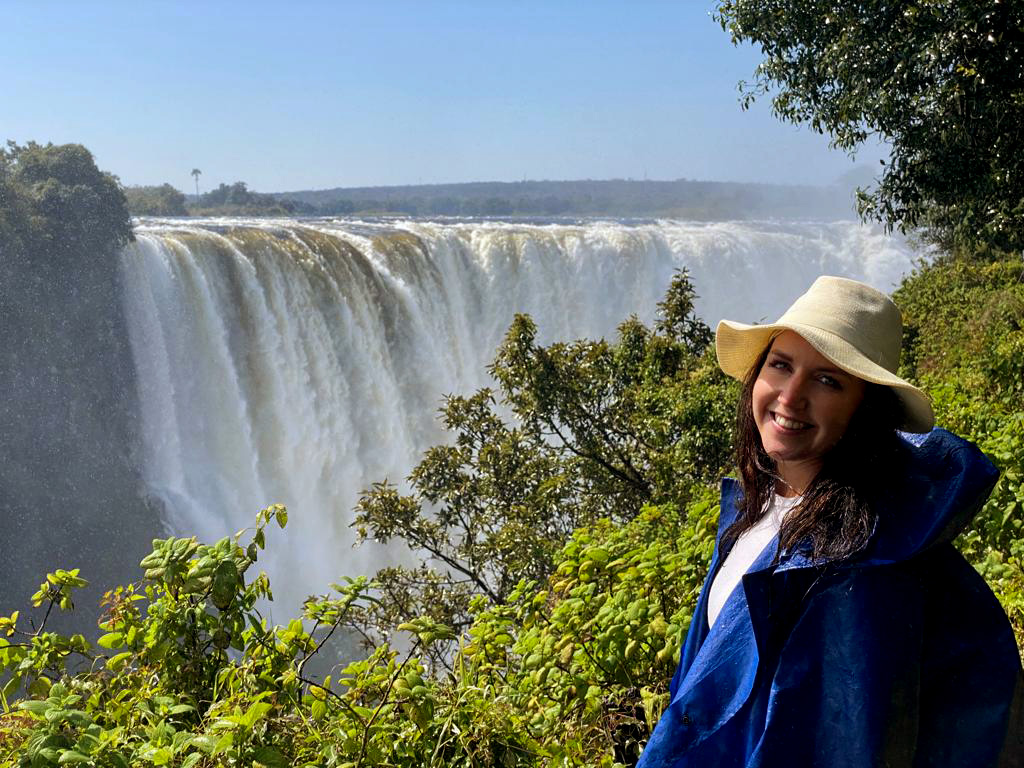
When I visited Victoria Falls in the high water season, Image Credit: Katharina Mandy
August to January: Low Water Season
This is the best time to admire Victoria Falls from up close, as the mist is lower, so you’ll still feel it but won’t get drenched. You can also see the geological formations usually hidden under the gushing water.
The low water season is also the perfect time to experience why Victoria Falls is nicknamed “Africa’s Adventure Capital”. This is the time to enjoy those seasonal activities – white water rafting, swimming in Devil’s Pool, and visiting Livingstone Island! White rafting is best from November to December as the Zambezi River is at its lowest.
This is also a great time to enjoy bungee jumping, zip-lining and gorge swinging (although they’re year-round activities) as the weather is not so hot. Migratory birds also start arriving in the area around November, making it a great time for birdwatching.
Highlights
- White water rafting, as this activity is only possible when the water levels are lower
- Swimming in Devil’s Pool on the Zambian’s side (if you’re staying in Zimbabwe, you can take a day trip across)
- Visiting Livingstone Island, as it opens again due to the lower water levels
Ideal for
Adrenaline seekers looking for the most exhilarating activities.
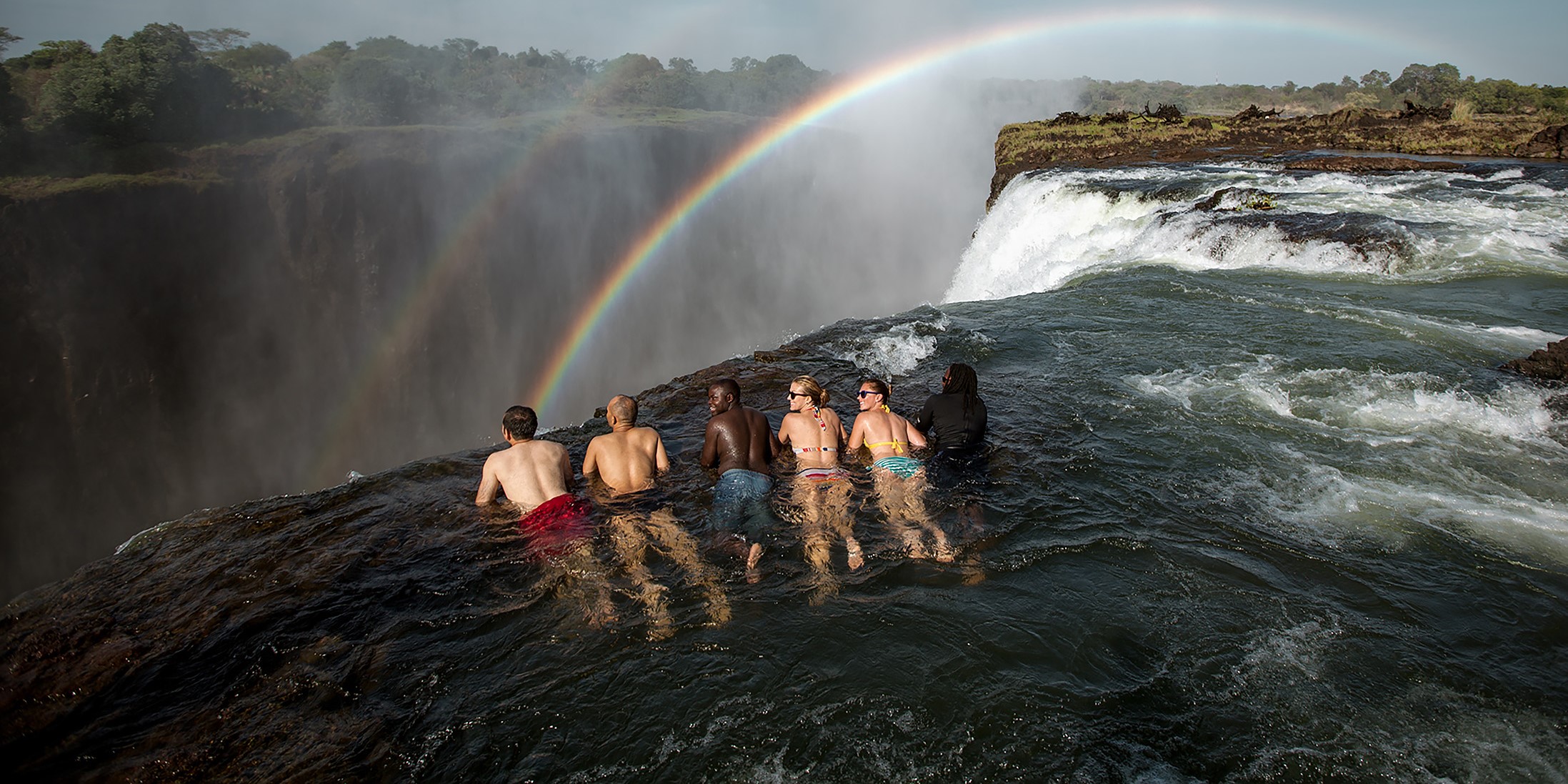
A group on the edge of Devil’s Pool, Image Credit: Livingstone Island
October to April: Wet Summer Season
Feeling hot, hot, hot! If you visit Victoria Falls during summer, you can expect warm, humid conditions (around 30°C during the day), as well as some afternoon thunderstorms. However, these storms help cool down the weather and result in stunning sunsets.
If you love lazing by the pool, the summer season is for you. Just be sure to pack extra sunblock! However, if you’re not a fan of heat and humidity, we don’t recommend visiting in October and November, as these are the hottest months in Victoria Falls. Some safari destinations like Mana Pools National Park in Zimbabwe also close during the wet summer season, with many camps being inaccessible during this time.
The Zambezi River is known for its freshwater sport fishing, in particular, the tigerfish and tilapia. Although it’s a year-round activity, tiger fishing is best during summer at the Lower Zambezi National Park. Also, bird lovers will enjoy spotting the many resident and migrant species all around.
Highlights
- Summer is considered the best season for birding, as resident and migrant species are prevalent
- You’ll love the sunrise and sunset boat cruises on the Zambezi River with colourful skies
- Tiger fishing on the Lower Zambezi River is at its best
Ideal for
Making use of your riverside plunge pool, bird-watching and tigerfishing.

It’s pool day every day when you visit Victoria Falls in summer, Image Credit: Victoria Falls River Lodge
May to October: Dry Winter Season
As the dry winter season creeps in and the temperatures drop a bit, this is considered to be the perfect time to experience Victoria Falls if you’re not a fan of the heat. But winter in Victoria Falls is not what you’re probably used to, with rather temperate, conditions and long, sunny days of around 20°C.
Winter is also considered the best time for safaris in Zimbabwe and Zambia because the bush is sparse, and wildlife gathers around scattered waterholes and riverbanks.
If you’re lucky, you can see a remarkable sight, namely Victoria Falls’ mysterious lunar rainbow, also called the moonbow. The best time to visit Victoria Falls to see this moonbow is from June to August. However, please note that it depends on various factors like clear skies, a full moon, not too much spray from Victoria Falls, and more.
Highlights
- Expect great game viewing at the many surrounding national parks and in neighbouring Botswana
- You could see the incredible lunar rainbow between June and August
- White water rafting and swimming in the famous Devil’s Pools – water levels dependent
Ideal for
Seeing the lunar rainbow and for the best wildlife viewing.

The lunar rainbow at Victoria Falls is a special treat to see
June to October: Peak Safari Season
The peak safari season coincides with winter and the low water season. Therefore, the best time to visit Victoria Falls if you want to combine the thrill of Victoria Falls with the excitement of a safari is from June to October.
As this is the drier season, the vegetation is more sparse, making it an excellent time for game viewing. You can often see large herds of elephants and buffalo coming to the riverbanks to drink, as well as plenty of wildlife gathering around scattered waterholes.
Zimbabwe and Zambia are both home to world-renowned game reserves. In Zimbabwe, Mana Pools National Park is a must, with four oxbow pools attracting a myriad of wildlife. We also recommend a Big 5 safari in Hwange National Park, one of our continent’s biggest conservation areas. On the other hand, Zambia’s South Luangwa National Park is best for a walking safari, whereas Kafue National Park is the second-biggest national park in the world. There are plenty of other safari destinations our Travel Experts can recommend to you, too.
Highlights
- Enjoy Big 5 game drives, boat safaris, canoe safaris, walking safaris, horseback safaris, and more
- As this is the low water season, white water rafting is at its best (usually between July and September)
- Follow in Dr David Livingstone’s footsteps as you tour Livingstone Island (Zambian side)
Ideal for
The best game viewing and white-water rafting opportunities.
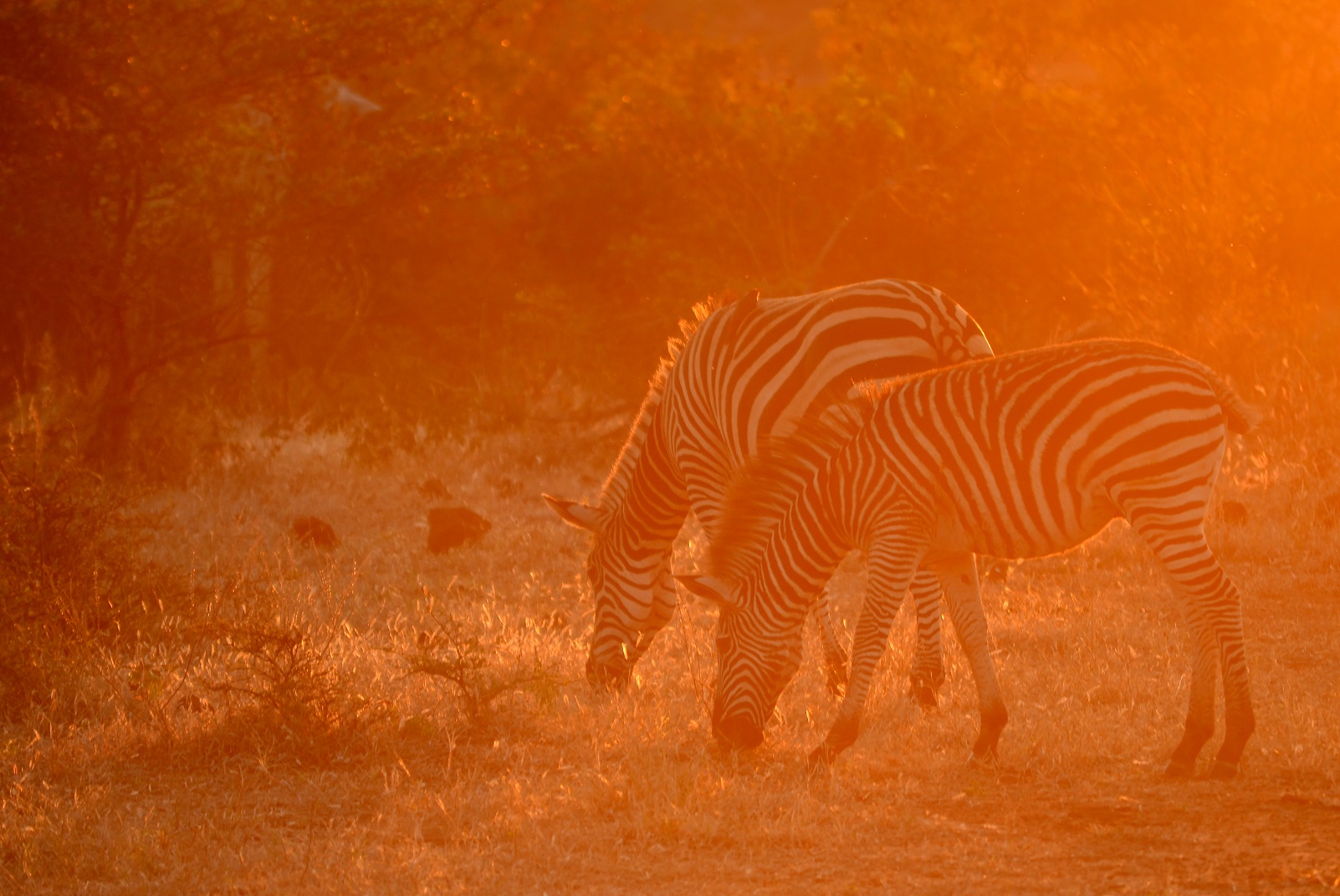
Golden hour on safari makes for great photographs, Image Credit: Tania de Kock
So, When is The Best Time to Visit Victoria Falls?
The best time to visit Victoria Falls is from May to October, but really depends on what you want to do, as it offers so many activities year-round.
We frequently visit Victoria Falls and have experienced it throughout all its seasons. And as the world’s most awarded safari company, we know our continent better than anyone else, using our first-hand experience to tailor personalised luxury safaris.
So, if you’re ready to see not only Victoria Falls but our continent’s many, many other wonders in person, reach out to our Travel Experts, and let’s start planning!
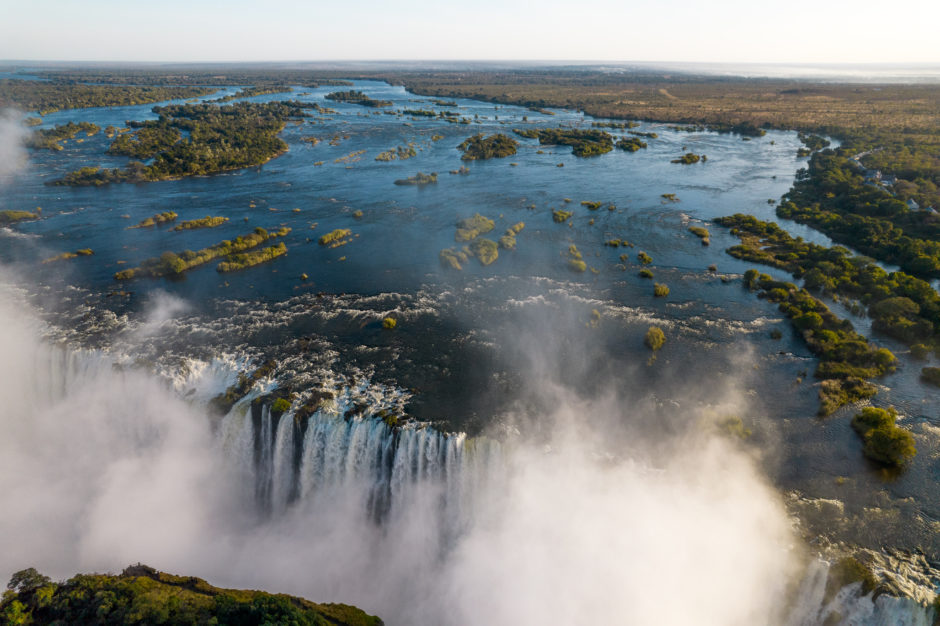
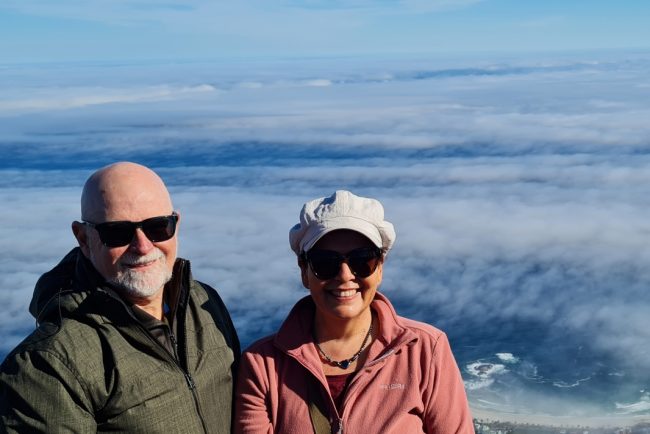
Brian and Maggie’s Escapade of Experiences Across Four African Countries
In a land where each sunrise heralds new adventures, and every sunset whispers a world of possibilities, Brian and Maggie set out on a journey through four African countries. This expedition, expertly curated by their Rhino Africa travel consultant, Janine Gous, was a series of carefully selected experiences, […]
ZimbabweIn a land where each sunrise heralds new adventures, and every sunset whispers a world of possibilities, Brian and Maggie set out on a journey through four African countries. This expedition, expertly curated by their Rhino Africa travel consultant, Janine Gous, was a series of carefully selected experiences, each one building on the last, culminating in an unforgettable climax.
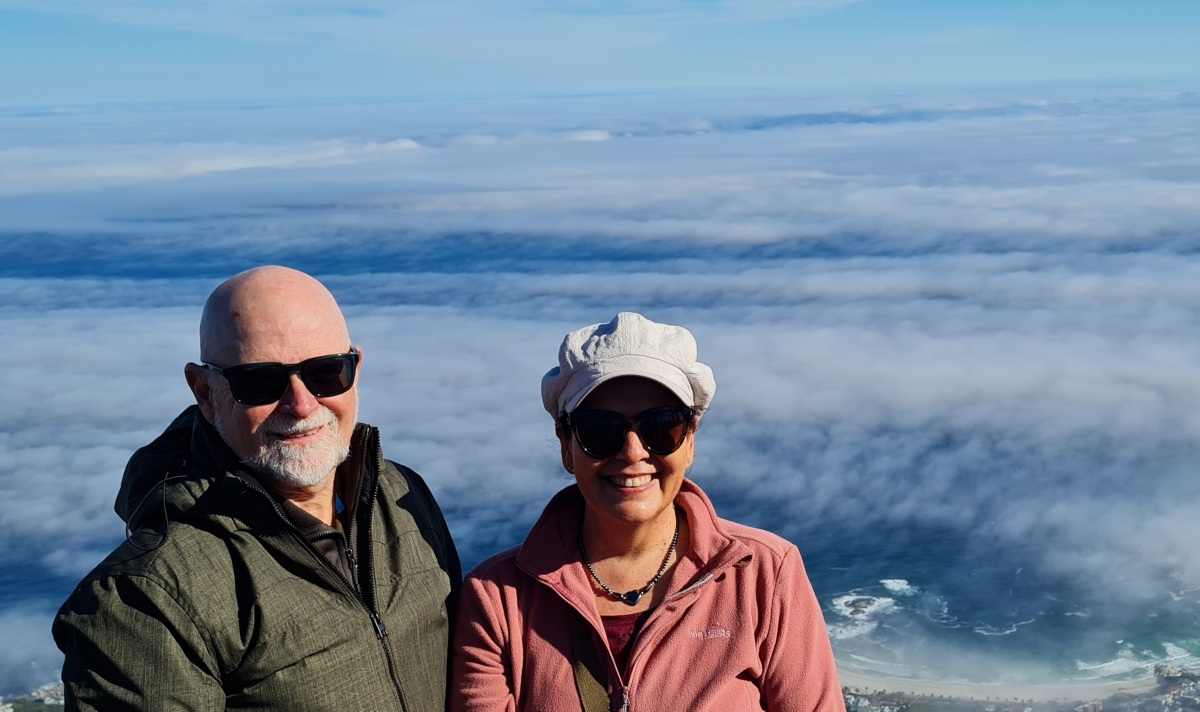
Brian and Maggie enjoying the summit of Table Mountain, Image Credit: Brian Jones
1. South Africa – Soweto Strolls and Time Travel
Their African saga began in Johannesburg, South Africa, where culture and history collided on a tour through the streets of Soweto Township and within the walls of the Apartheid Museum.
The intrigue of the past paved the way for the wonders ahead – provoking the question: “What other secrets did Africa have in store?” With every need seamlessly catered for, their anticipation for the unexpected grew.

Uncover South Africa’s history, culture and spirit by visiting the booming Soweto township, Image Credit: Nowart Rabier
2. Zimbabwe – Victoria Falls Batonka Bliss
As dawn broke, Brian and Maggie jetted off to Zimbabwe to get but a taste of the wild and wonderful world of natural splendours of Africa. Here, they would stay at Batonka Guest Lodge, a tranquil haven away from the bustle of town but just a stone’s throw away from the main attraction and UNESCO World Heritage Site, the mighty Victoria Falls.
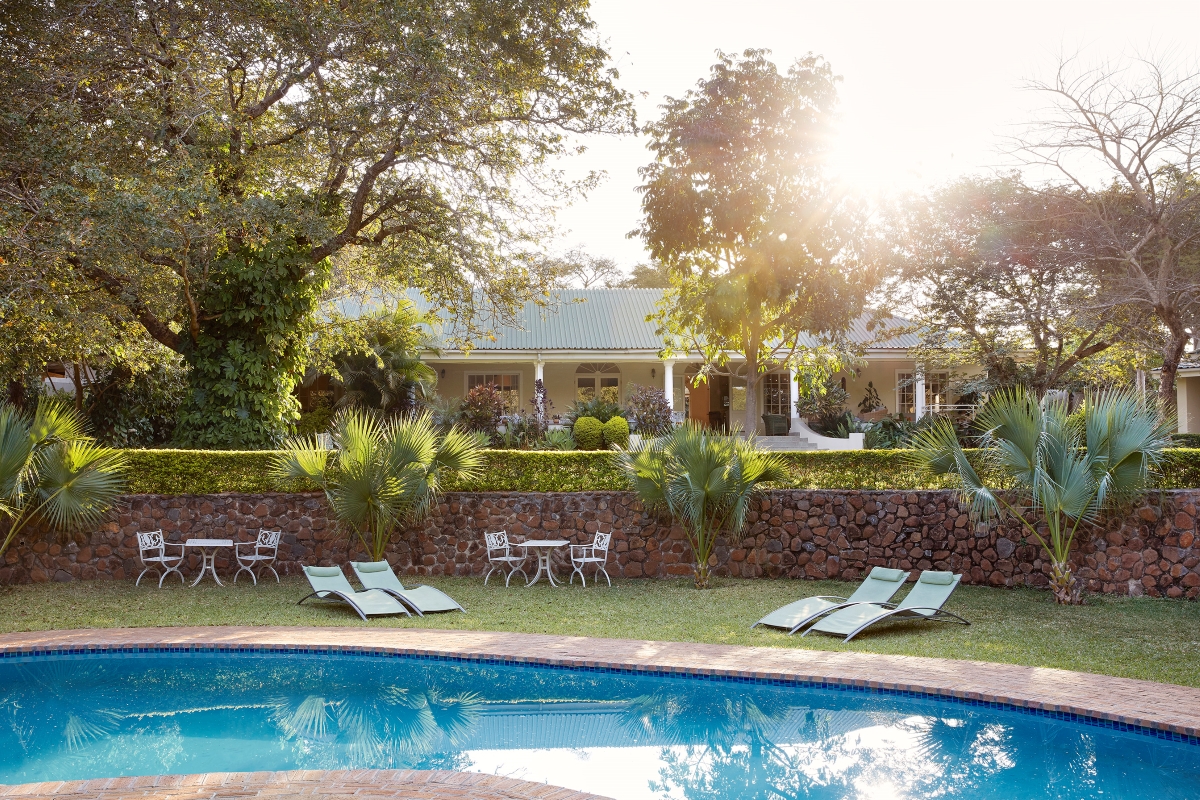
Batonka evokes the calm, laid-back lifestyle of a bygone era, Image Credit: Batonka Guest Lodge
The couple’s eyes sparkled with excitement as they soared above the breathtaking expanse of Victoria Falls. Their helicopter ride offered a remarkable perspective, unveiling the falls’ grandeur from the skies. But this thrilling aerial view was just the beginning…
“We started our stay in Vic Falls with a quick heli flight over the falls. What an incredible sight, a must for any trip to the falls.” – Brian.

Victoria Falls presents a powerful display of the raw majesty of the Zambezi River, Image Credit: Brian Jones
A Feast for the Eyes
The following morning, they embarked on a journey by foot, venturing into the heart of a lush rainforest. Here, they drew closer to the falls, feeling its mist gently kiss their faces. The path wound through vibrant greenery, each step bringing them nearer to the thundering cascade.

Feel the spray of the Falls on a guided walking tour through the beautiful rainforest
Lunchtime found them at the bustling Lookout Café, an eatery perched to overlook panoramic views. As they indulged in a sumptuous meal, their gaze was drawn to the brave souls leaping into the gorge, their figures silhouetted against the vast chasm as they took on bungee and canyon swings.
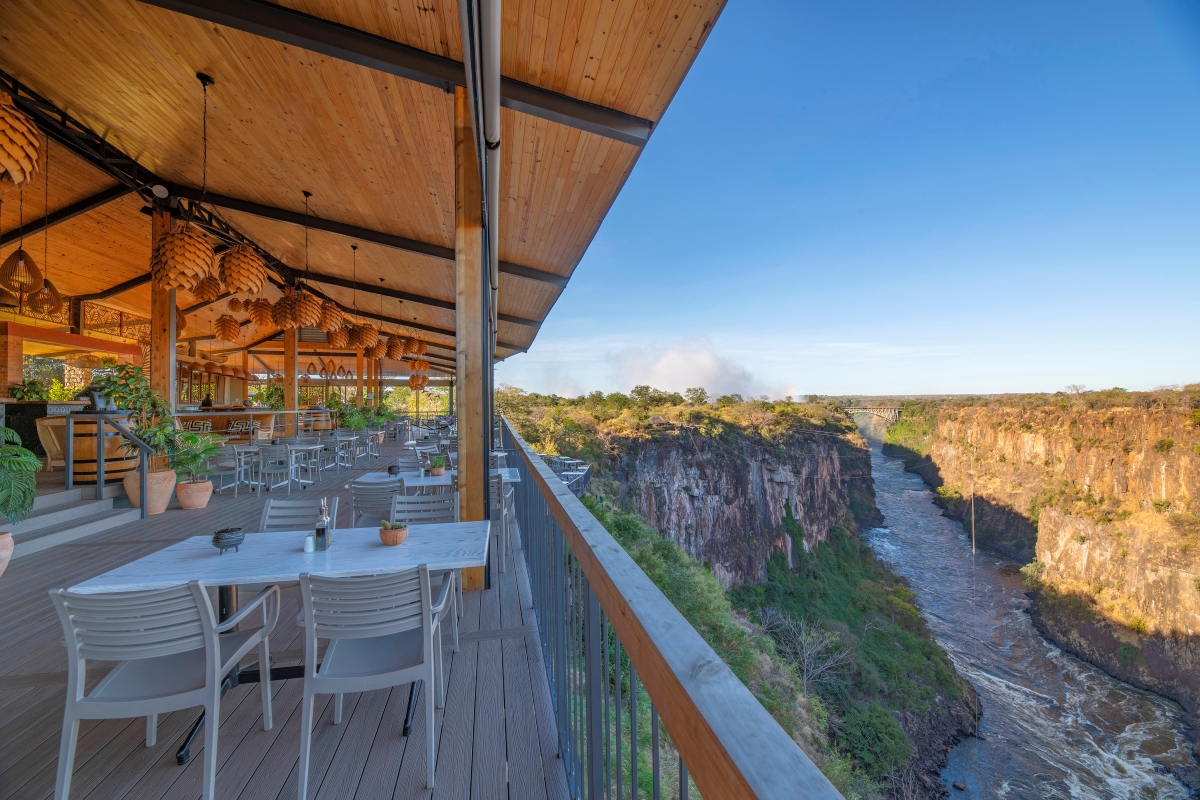
The best restaurant views in Victoria Falls, Image Credit: The Lookout Café
Gin, Tonics, and Twilight
Their day of wonders was far from over. As the sun began its descent, painting the sky in hues of orange and pink, they boarded a small, intimate boat for a sunset cruise. This vessel, reminiscent of the original river boats, offered a cosy and personal experience.
“Our sunset cruise on a smaller boat allowed us to get in closer to the hippos instead of the larger tour boats – a great way to see the Zambezi River!” – Maggie.
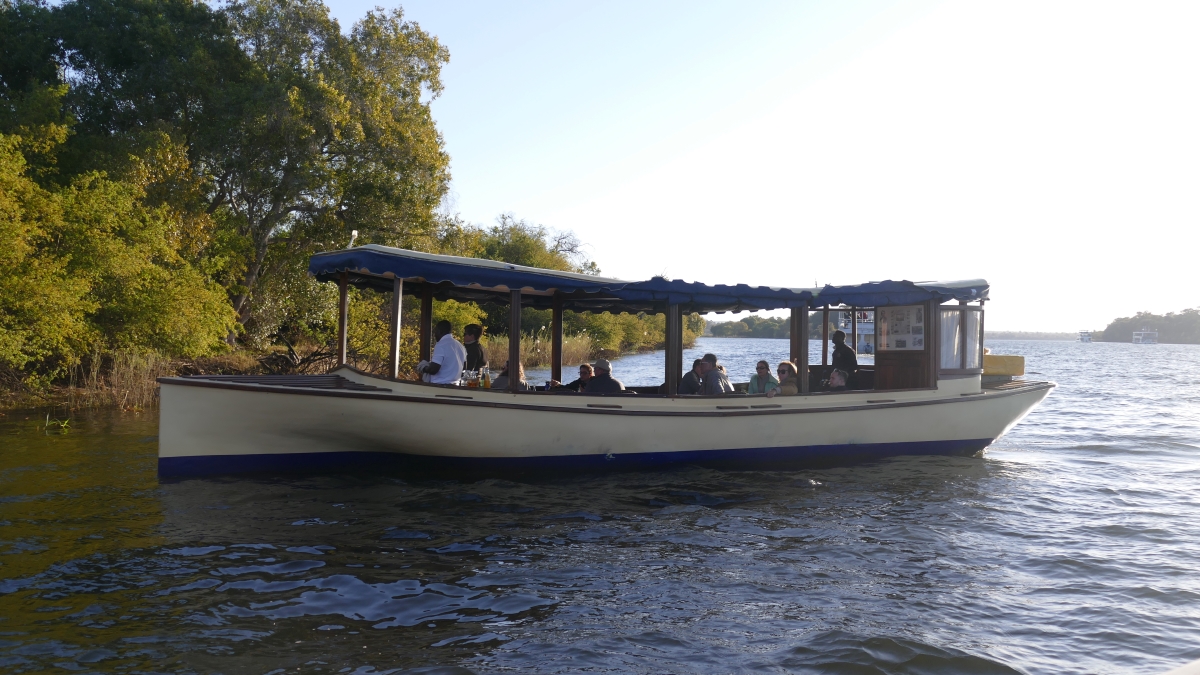
A Zambezi cruise is a superb way to relax and enjoy the spectacular beauty of the river, Image Credit: Brian Jones
While Brian and Maggie sipped on refreshing gin and tonics, their guide navigated the waters of the Zambezi River, drawing closer to the basking hippos than the larger tour boats could ever venture. This cruise along the river’s gentle currents was a serene counterpoint to the day’s earlier exhilarations. Could anything surpass the grandeur of Victoria Falls?
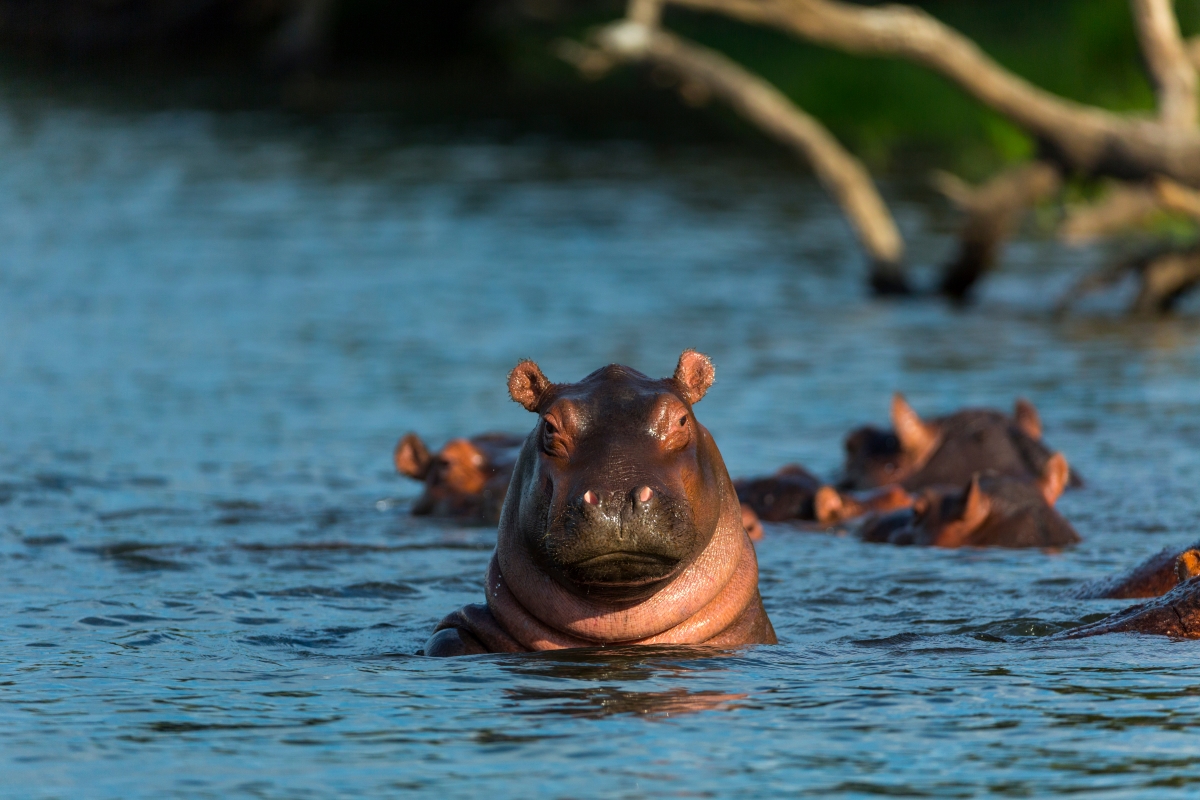
The Zambezi River’s peaceful shores attract a host of wildlife
3. Namibia – A Wild Welcome
The next chapter of their journey unfolded in Namibia’s Chobe Savanna Lodge. Departing Zimbabwe, their path wound through Botswana by road and river, leading them to an unexpected waterborne safari. The Chobe River was a corridor of wildlife where they marvelled at impalas, monkeys, hippos, and crocodiles.
“During our transfer from Botswana into Namibia, we were looked after all the way through the border crossings by our guides.” – Brian.
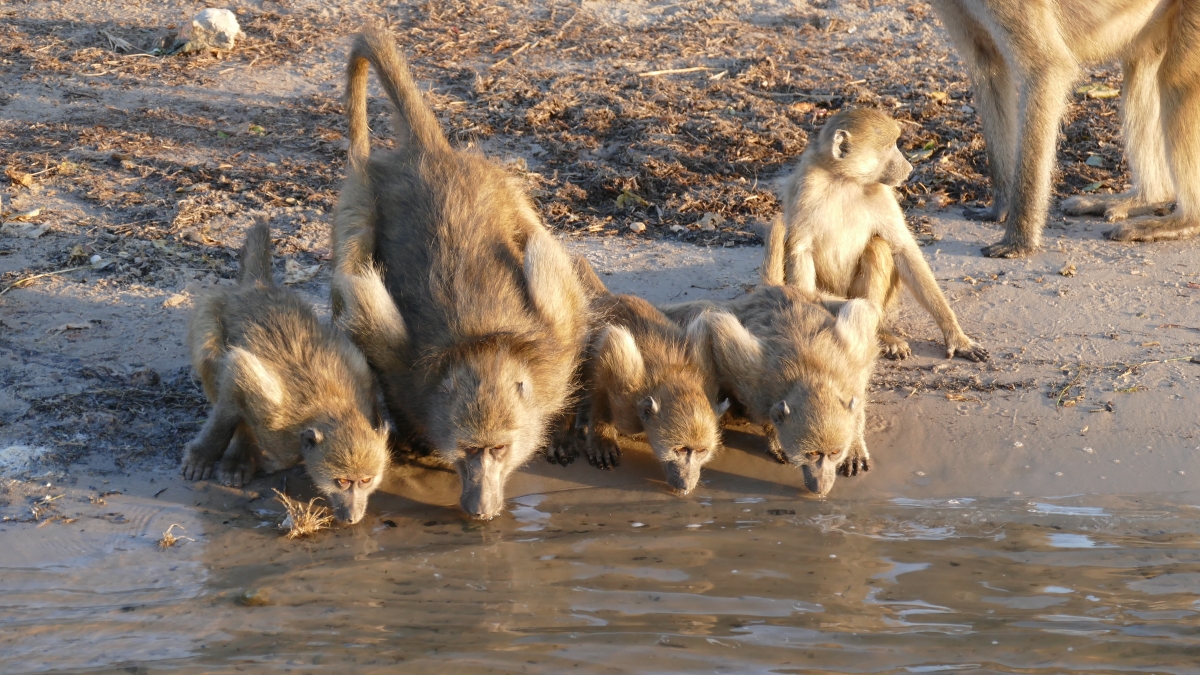
Close-up wildlife encounters along the river’s edge, Image Credit: Brian Jones
But the most magical moment was the welcoming committee of elephants before even reaching the lodge, a dream come true for Maggie. Their adventure had already been brimming with enchanting experiences, leaving them to wonder what marvels the lodge itself would hold.

The Chobe River is renowned for attracting a steady flow of elephants, Image Credit: Chobe Savanna Lodge
Parade of Pachyderms and More
Settled on the northern banks of the Chobe River, deep in the Caprivi Strip, Chobe Savanna Lodge peered out over the floodplains of the Chobe National Park’s Puku Flats. Here, at sunrise and sunset, a bevy of beasts comes to drink just a short boat ride from the lodge.

This is big-game country, where large herds of elephants and buffalo make their way to the river to drink, Image Credit: Brian Jones
The river offered Brian and Maggie an exceptional safari opportunity, allowing them to indulge in their fascination with elephants from a uniquely intimate vantage point. Their experience was enriched by sightings of herds of giraffes, zebras, and, as ever, the omnipresent pods of hippos and crocodile floats.
“We wanted to see the elephants, and using the river for the safari allowed us to get closer than we had ever hoped for.” – Maggie.

The region is home to a variety of species, big, small and tall, Image Credit: Brian Jones
4. Botswana – Delta Dreams
Their journey took a thrilling turn as Brian and Maggie boarded the light aircraft destined for Camp Xakanaxa’s private airstrip, marking the beginning of a new chapter in their wilderness adventure. The allure of the Okavango Delta – a labyrinth of lagoons, channels, and islands – could not be resisted.
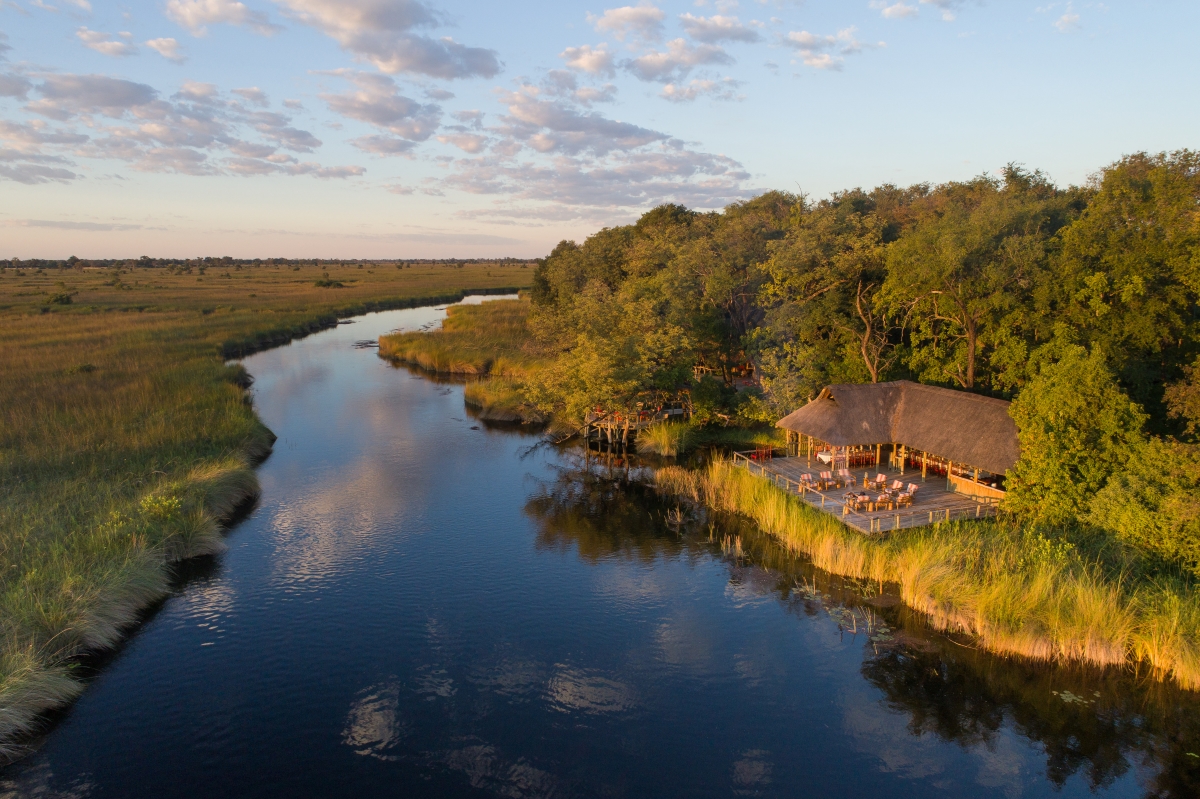
Enjoy a year-round Moremi Game Reserve land and water safari experience, Image Credit: Camp Xakanaxa
Nestled on the edge of the Xakanaxa Lagoon and the Khwai River, within the embrace of Moremi Game Reserve, Camp Xakanaxa (pronounced “ka-kan-a-ka”), stood as a gateway to a world where land and water met, offering a unique safari experience combining aquatic journeys and land explorations.
“We thought our thatched chalets in Chobe were good (and they were!), but the canvas tents at Xakanaxa were next level.” – Maggie.
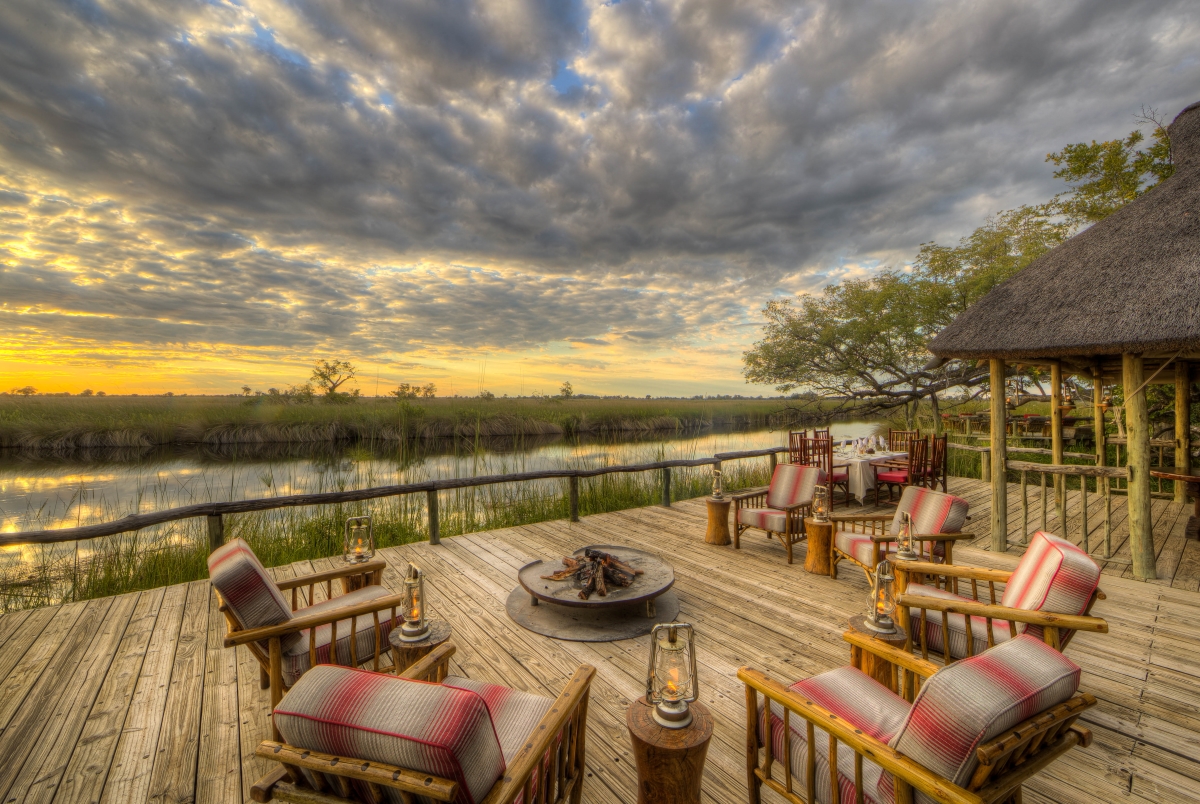
Main areas extend over the Khwai River and are set on raised platforms to maximise views, Image Credit: Camp Xakanaxa
A Boat, Birdsong, and Hippo’s Greeting
Their first evening unfolded gracefully with a sunset boat ride along the serene delta waterways. As the sun dipped below the horizon, they were enchanted by the mirror-like reflections on the water and the symphony of birdlife.
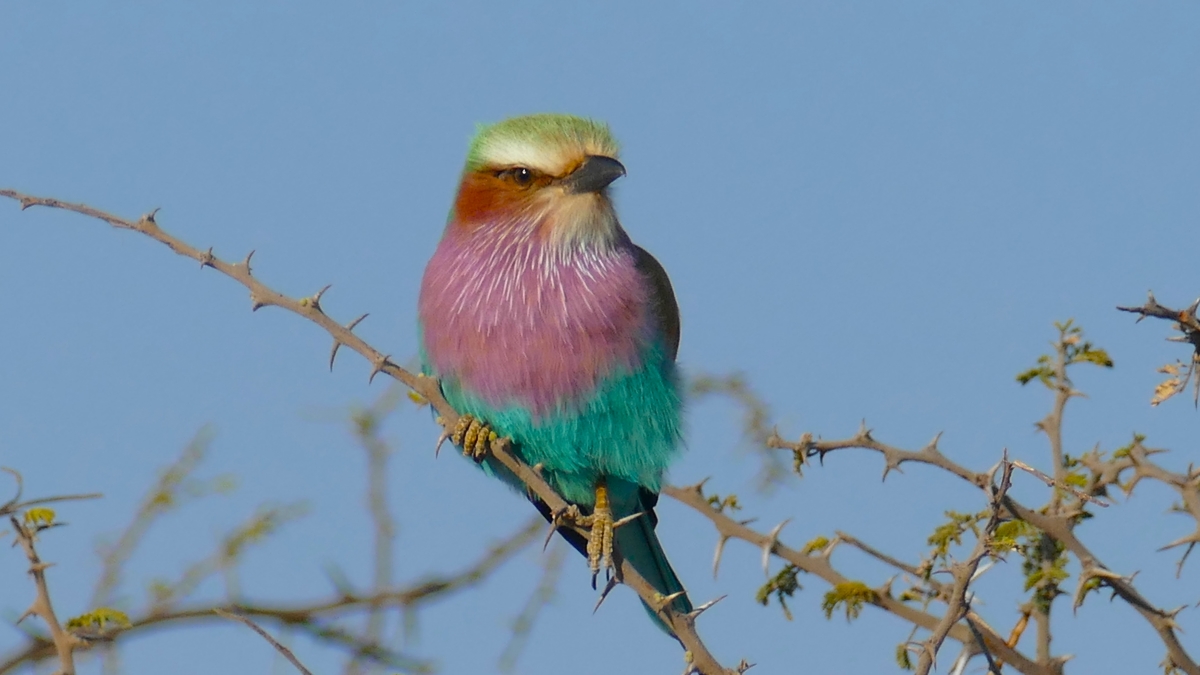
The Delta presents spectacular birdwatching opportunities, Image Credit: Brian Jones
An unexpected introduction with Oscar, the camp’s resident hippo, added a touch of whimsy to their stroll back to the tent, escorted safely by their guide through the twilight.
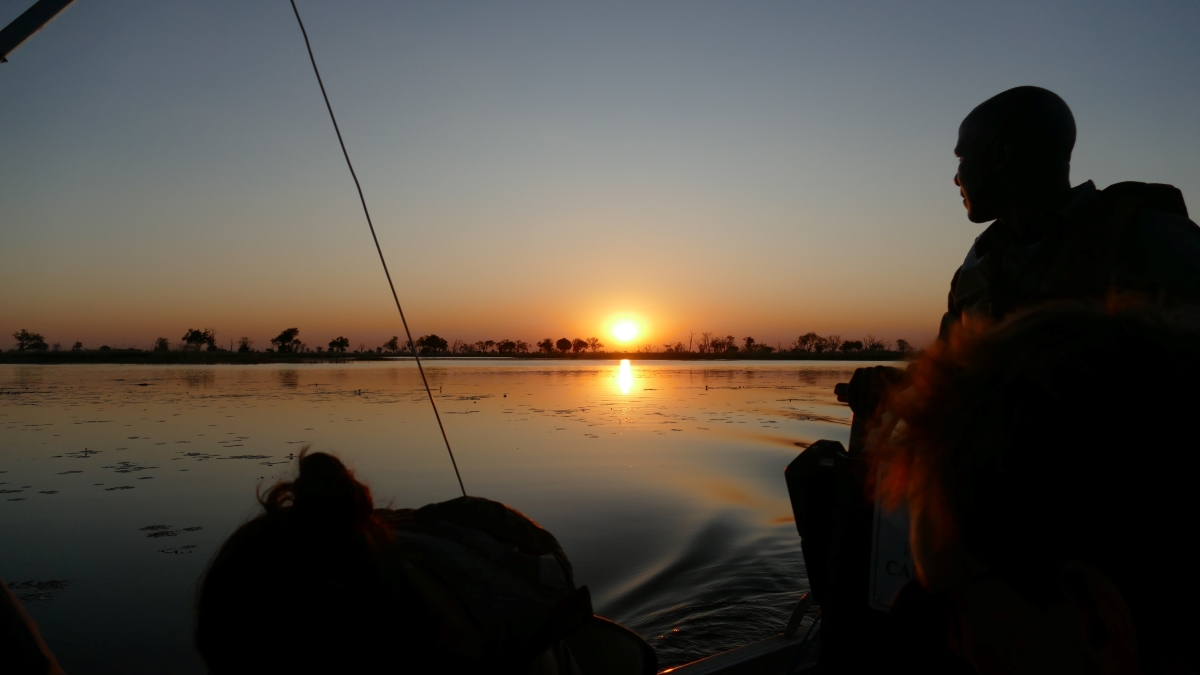
Xakanaxa’s guides are expertly trained, highly knowledgeable and always eager to impart their knowledge, Image Credit: Brian Jones
Roars at Dawn
The next morning, their game drive was a heart-racing encounter with the rawness of nature. A mere five metres away, a pride of lions feasted on a giraffe, their roars vibrating through the air, calling to their kin.
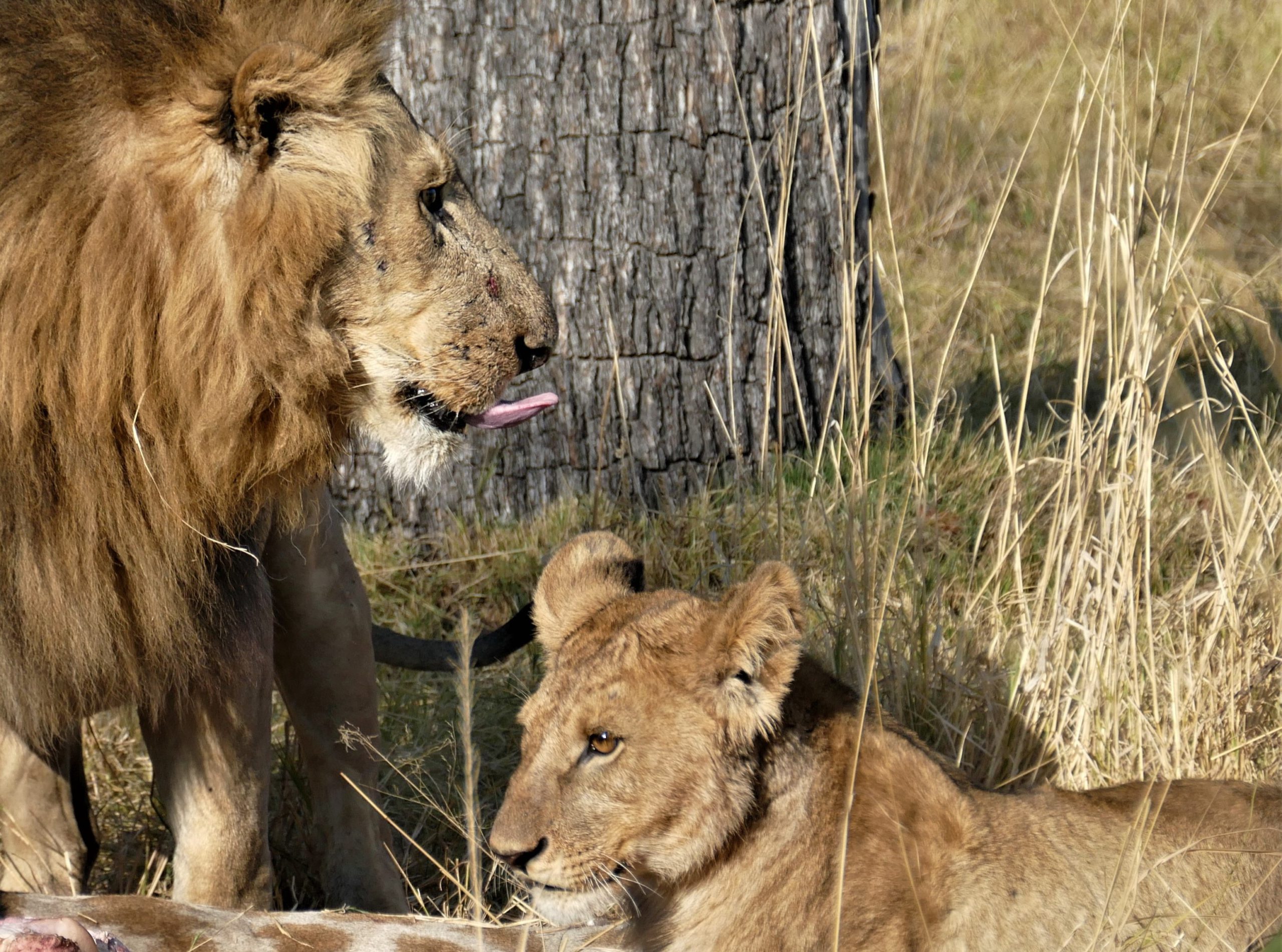
Lion family feasting on their kill, Image Credit: Brian Jones
This remarkable sight, coupled with the imposing presence of a 200-strong herd of Cape buffalo, captivated Brian and Maggie. The lions, satiated and uninterested in a buffalo breakfast, offered a rare moment of peaceful coexistence in the wild.
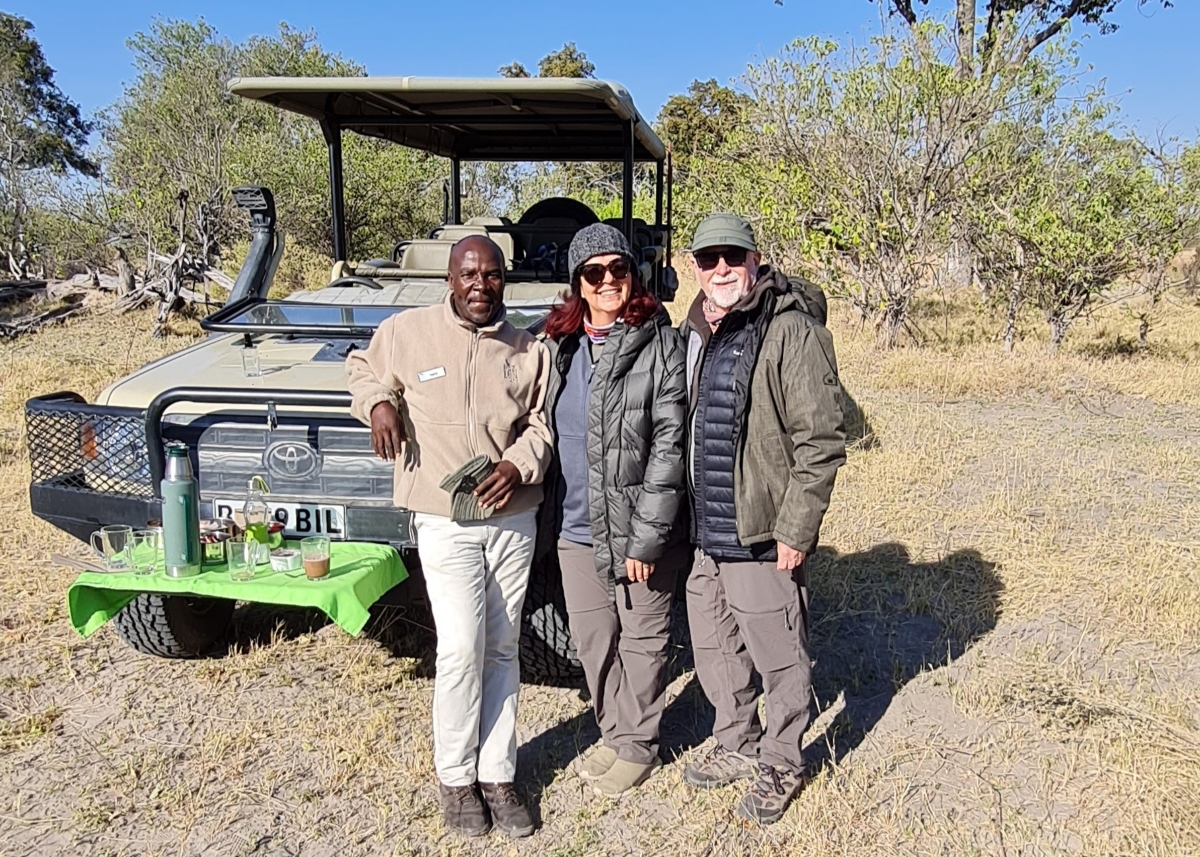
Maggie and Brian enjoying a bush coffee with their Guide, Harry, Image Credit: Brian Jones
A Thrilling Turn
Their return to camp was interrupted by an exciting detour. Harry, their seasoned guide, had received word of a leopard sighting nearby. As they navigated the gravel roads, an elephant, guardian of its berry tree, mock-charged their vehicle in a display of wild defiance. It was a heart-pounding reminder of their place in this untamed world.
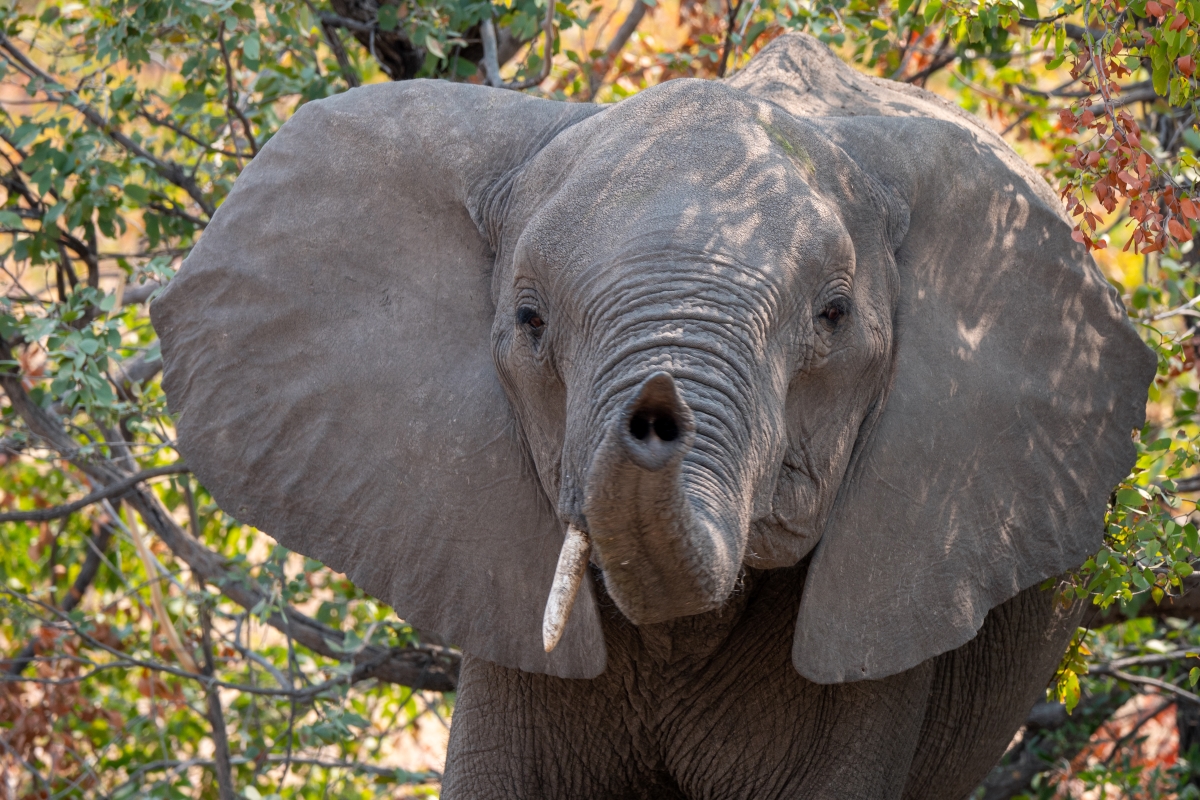
Don’t come between an elephant and its berry tree
The Lion’s Goodbye
Their departure was as dramatic as their stay. En route to the airstrip, three young male lions asserted their dominance, reminding them that in the African wilderness, animals reign supreme. With two lions passing within metres of their vehicle, Brian and Maggie’s safari in Botswana concluded with an everlasting memory.
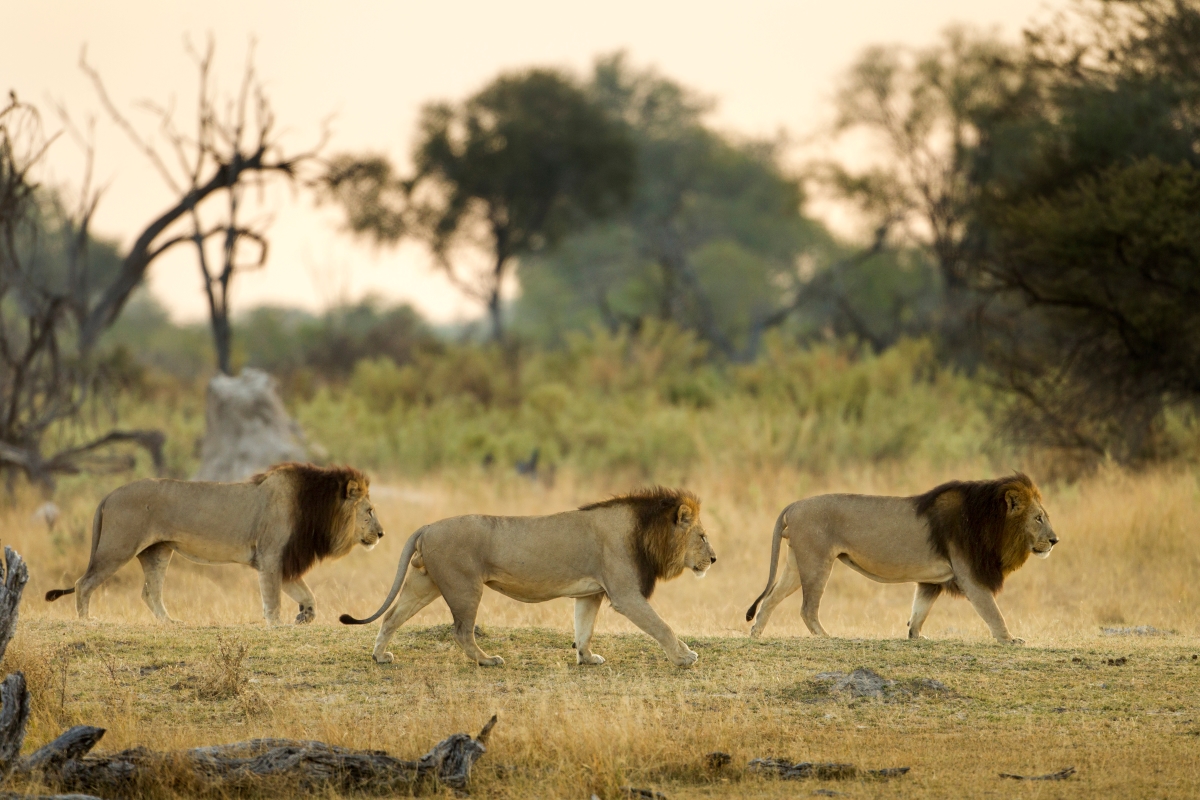
Never forget, in the wild, lions have the right of way
Cape Town – From Peak to Port
Their journey came full circle with a return flight to South Africa, ready to explore the colourful metropolis of Cape Town. Villa Zest Boutique Hotel would be their stylish home for the following three days.
From the awe-inspiring Table Mountain and bustling V&A Waterfront to the serene Kirstenbosch Botanical Gardens were among the daily discoveries. But how would this urban exploration compare to the final leg of their journey?
“Lunch and a walk around V&A waterfront is a must, and the African Trading Port with wooden sculptures shouldn’t be missed!” – Brian.

With Table Mountain as your backdrop, the V&A Waterfront pulses with energy, Image Credit: Brian Jones
The Greater Kruger – Land of the Big 5
In the vast expanses of the Kruger National Park, the captivating Chitwa Chitwa Game Lodge stood as the high point of their African expedition. The densely vegetated Sabi Sand Game Reserve was markedly different from their previous experiences.
“It just kept getting better, Chitwa Chitwa was the next level, absolutely fantastic!” – Brian.
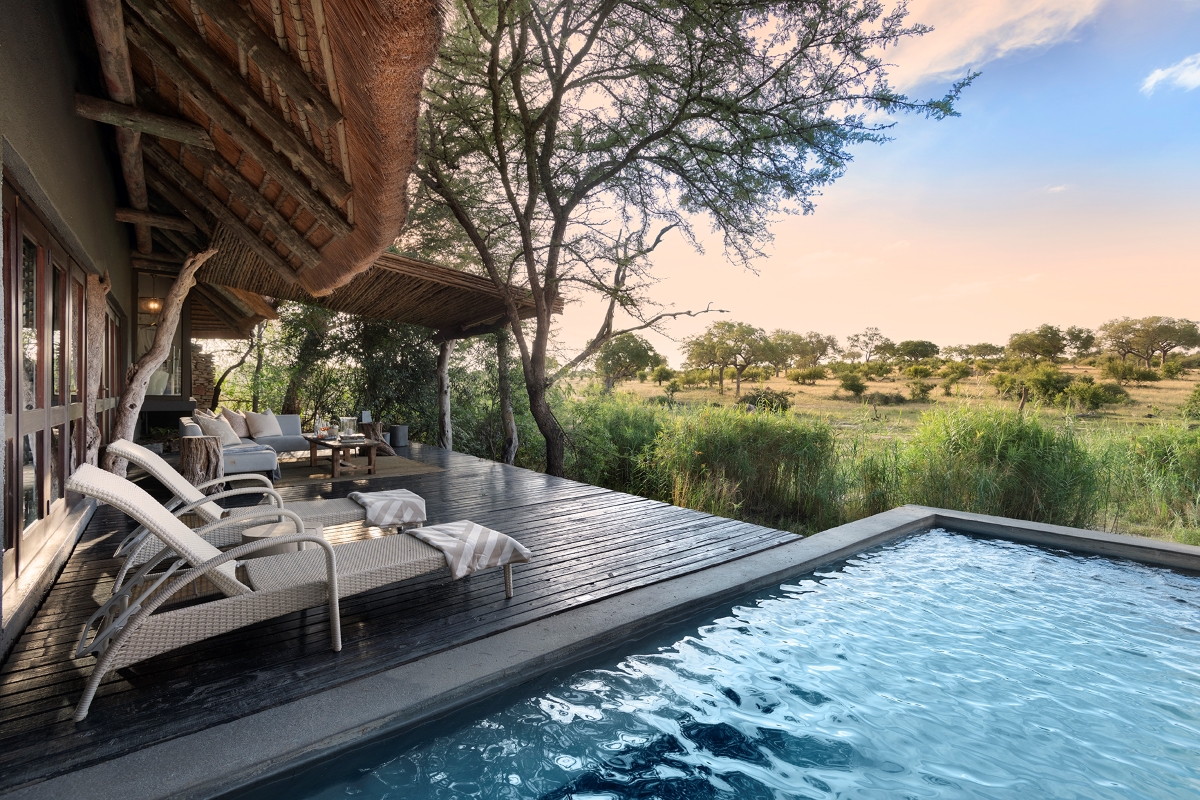
Chitwa Chitwa is your luxury escape surrounded by nature, Image Credit: Chitwa Chitwa Game Lodge
Their first safari drive in this new setting was a spectacle of wildlife, with the sighting of rhinos and leopards completing their Big 5 checklist. The reserve buzzed with diverse wildlife like elephants, lions, kudus, zebras, the ubiquitous impalas, and hyenas, including a playful baby hyena.
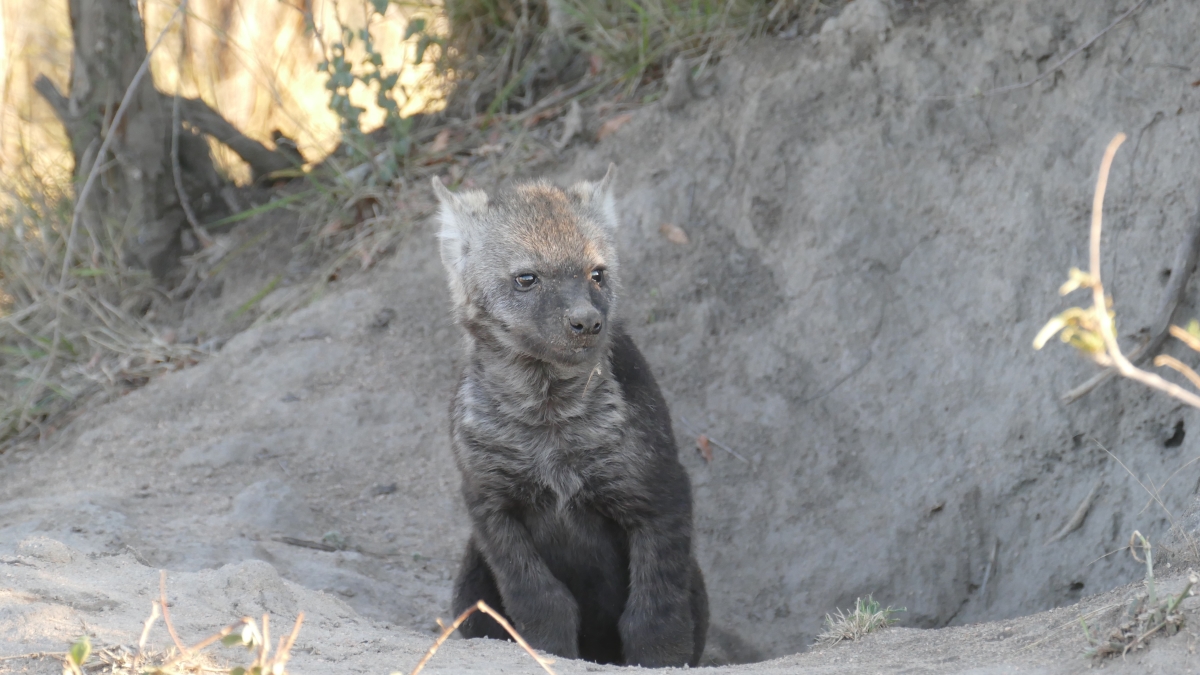
Enjoy spell-binding sightings of our abundant wildlife on game drives, Image Credit: Brian Jones
Leopard Spotting
The thick brush of this terrain presented a challenging task for tracking, but the expertise of their guide, Daniel, and tracker, Beth, shone through, revealing the hidden wonders of this wild land. This area, particularly favourable for leopards, offered them repeated sightings of these majestic big cats.
“This was the place for leopards – again and again, we saw them on multiple drives.” – Maggie.
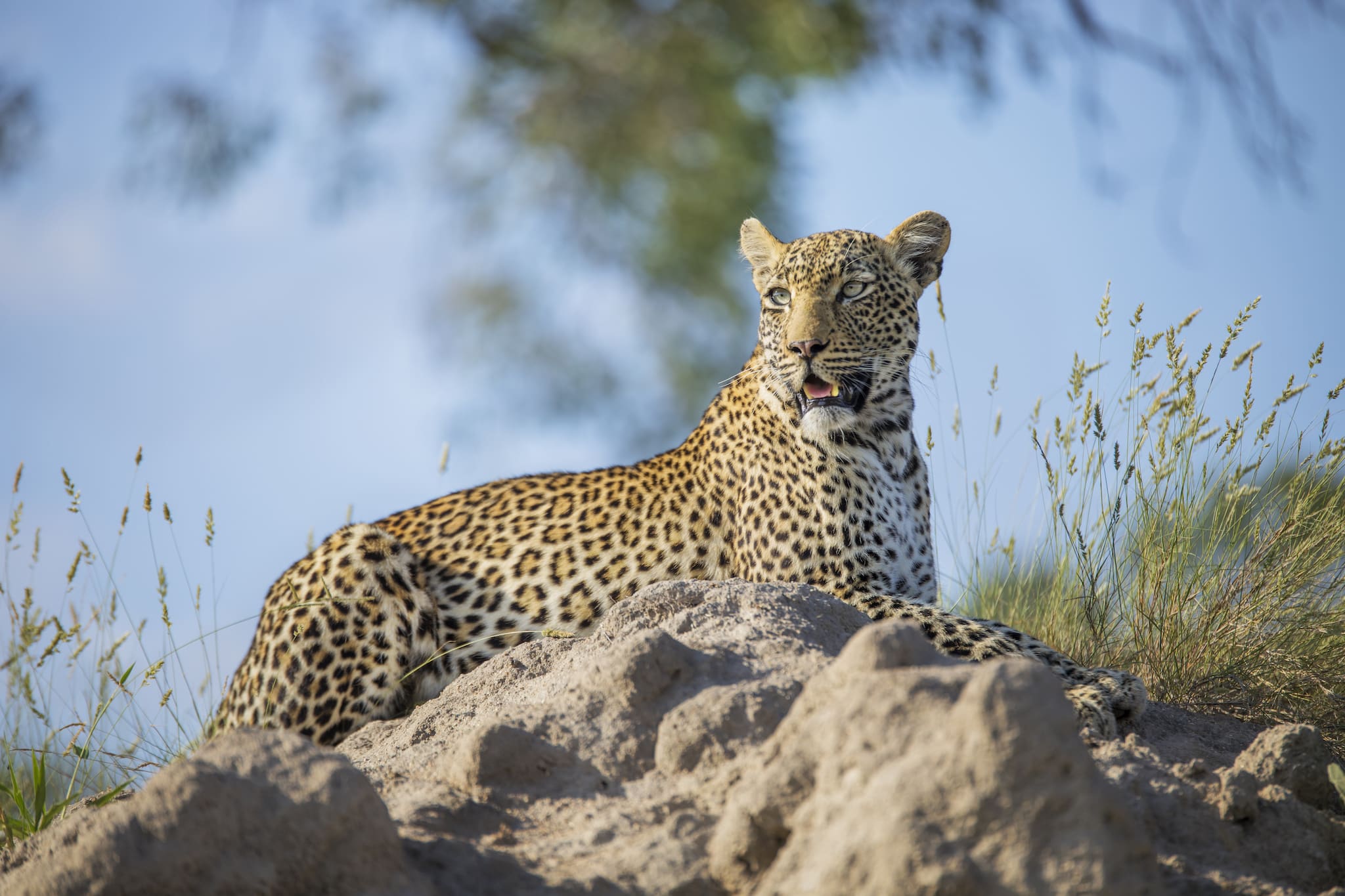
Sabi Sand Game Reserve has carved out legendary status amid 160,000 acres of leopard-rich land
Moonlit Mischief
As the evening unfolded, the walks back to their lodging transformed into thrilling encounters, not with hippos as before, but with prowling hyenas active around the lodge. The wild was at their doorstep, yet the reassuring presence of their guides ensured safe passage in the dark.
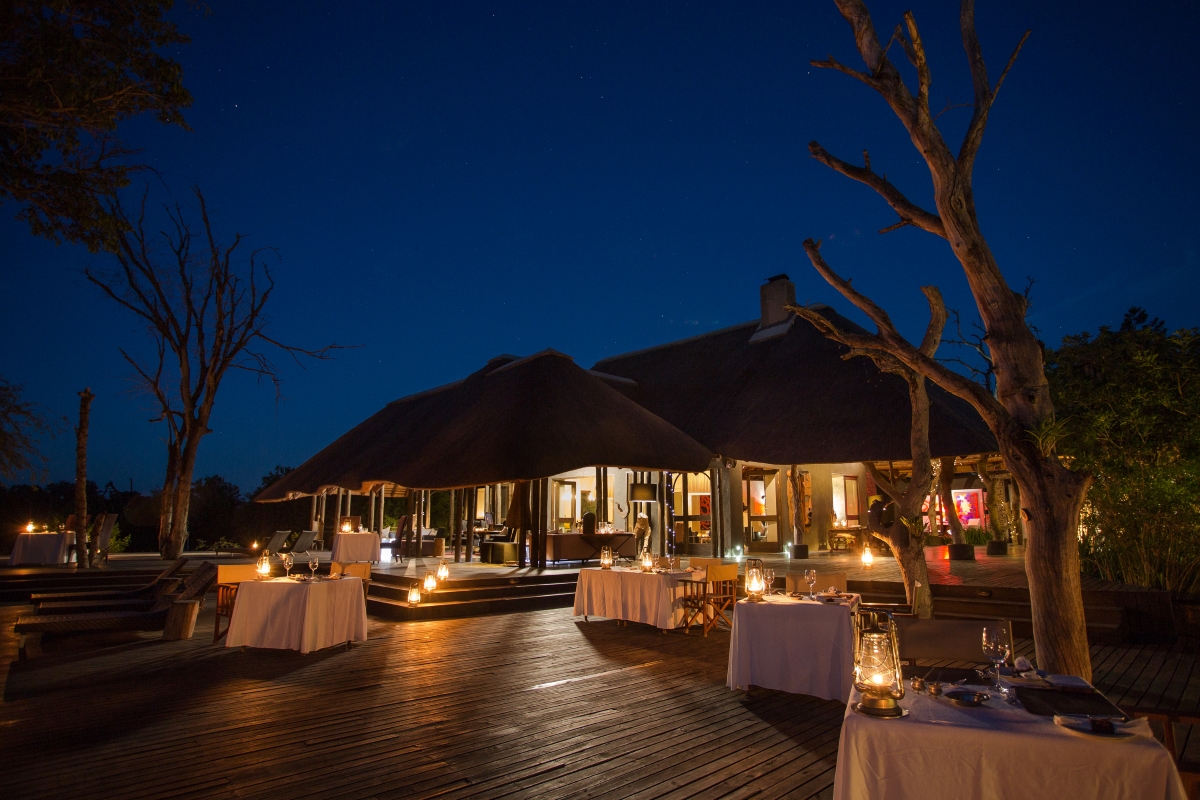
With your own private deck, you can view animals from the comfort of your room, Image Credit: Chitwa Chitwa Game Lodge
Clash of the Canids
Their guide, Daniel, inquiring about their specific interests, heard their eagerness to see African wild dogs, known for their scarcity. Setting expectations, he mentioned their rare sightings. However, the next morning, in a stroke of luck amidst the early mist, they encountered a pack of wild dogs, an experience that left them astounded.
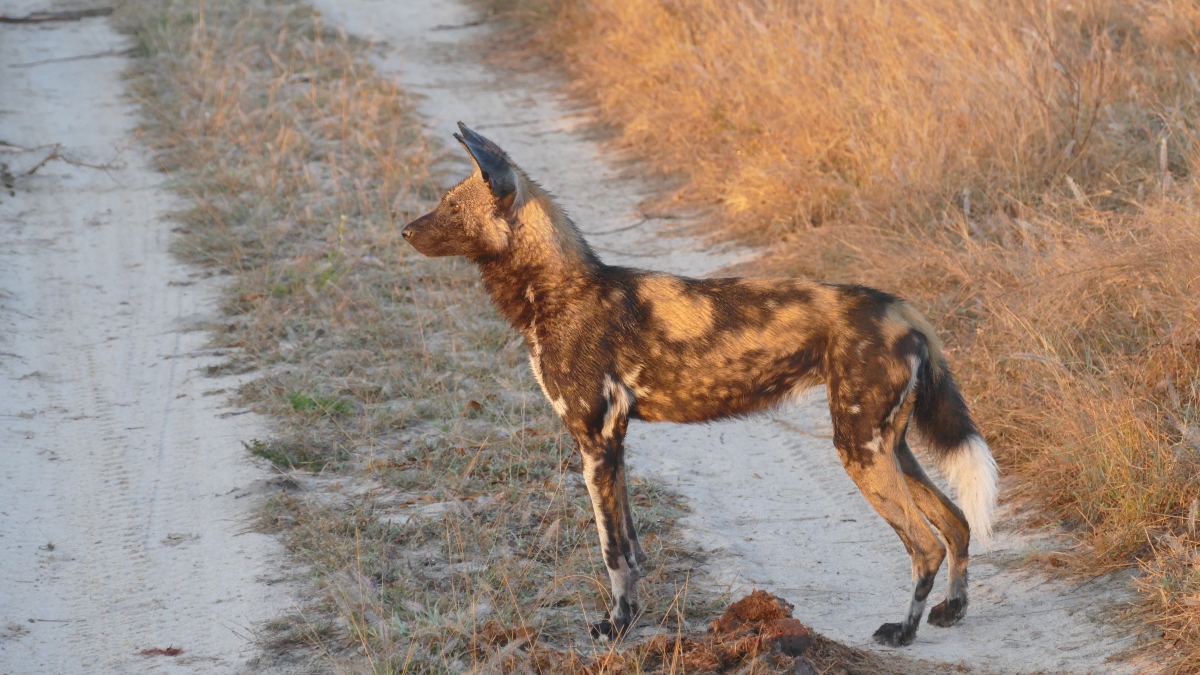
As one of the world’s most endangered mammals, the African wild dog is a sight to see, Image Credit: Brian Jones
Their tracker, Beth, with his deep knowledge of the land, led a thrilling chase through the bush. The journey was no longer a gentle drive but an exhilarating pursuit, culminating in a dramatic scene.
A pack of hyenas, cunning and opportunistic, had trailed the wild dogs, hoping to usurp their kill. Suddenly, they found themselves amidst a fierce clash between the wild dogs and hyenas. The wild dogs, with their remarkable agility and speed, soon sent the hyenas fleeing.
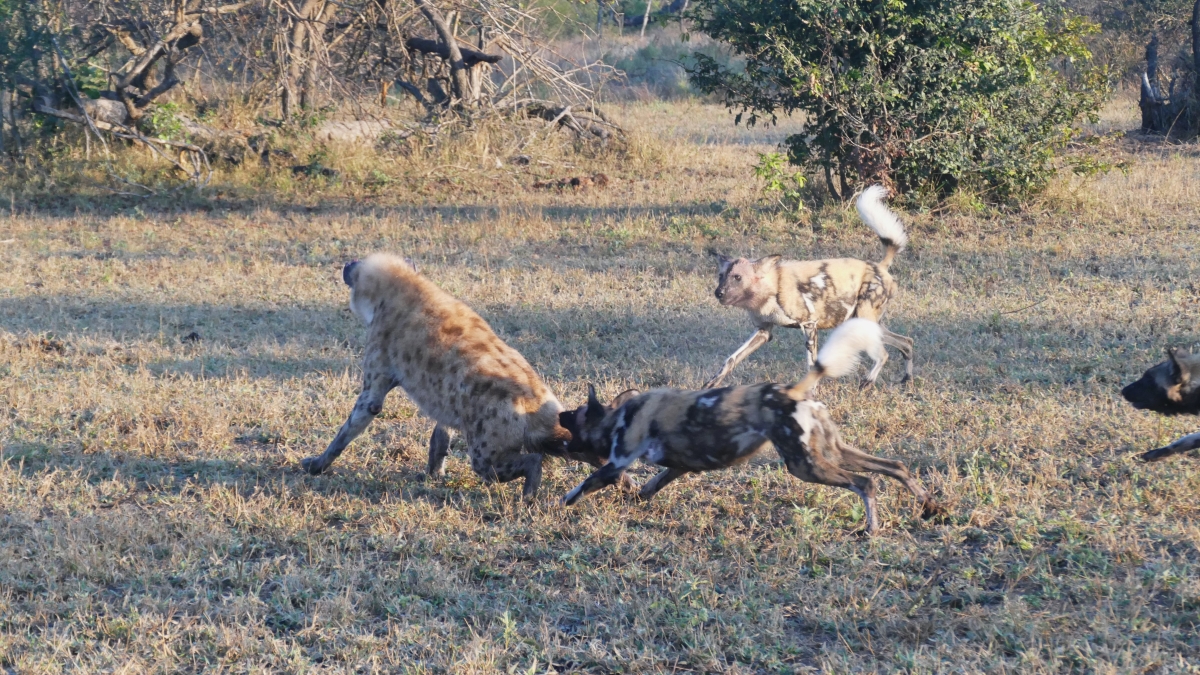
A lone hyena is no match against a pack of wild dogs, Image Credit: Brian Jones
Precision Meets Passion
Reflecting on their journey, the meticulous planning of their Travel Expert, Janine, became evident. Each destination had elegantly built upon the last, leading to a series of climactic experiences. Their African journey, packed with suspense, beauty, and unexpected delights, was a narrative they would cherish for years.
“When we look back at our adventure, it seems that Janine chose accommodation and experiences in a very specific way… and built up to the best for last! It was the perfect order. We were so impressed with everything.” – Brian.
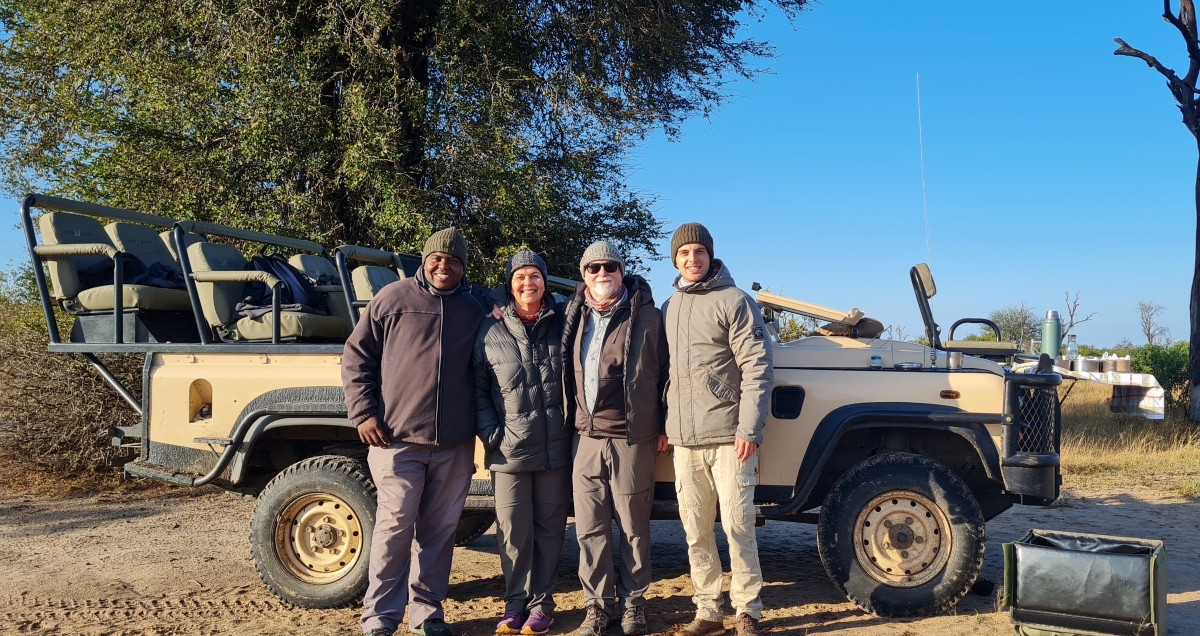
Maggie and Brian with Tracker, Beth (left), and Guide, Daniel (right), having another drink stop in the bush, Image Credit: Brian Jones
“The excitement and joy that we both felt throughout this whole trip is undeniable!
We can’t thank you enough for this once-in-a-lifetime dream come true! Thank you, thank you, thank you!!!” – Maggie.
Your Invitation to Adventure
Are you excited to delve into the wonders of Africa, to embark on a journey filled with discovery and awe?
Allow us at Rhino Africa, alongside our Travel Experts like Janine, to craft your own journey into the thrilling unknown, where every turn is a captivating new chapter in your African adventure.
Featured Image: Brian Jones
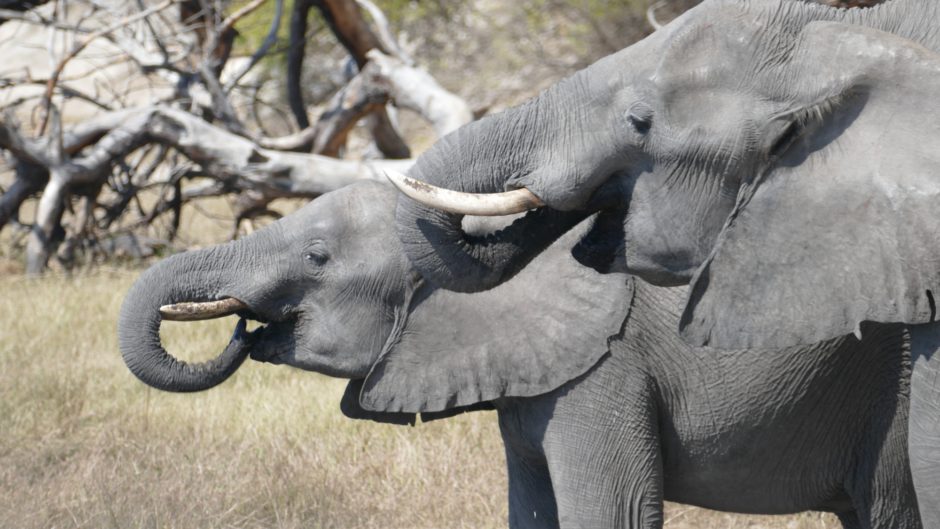
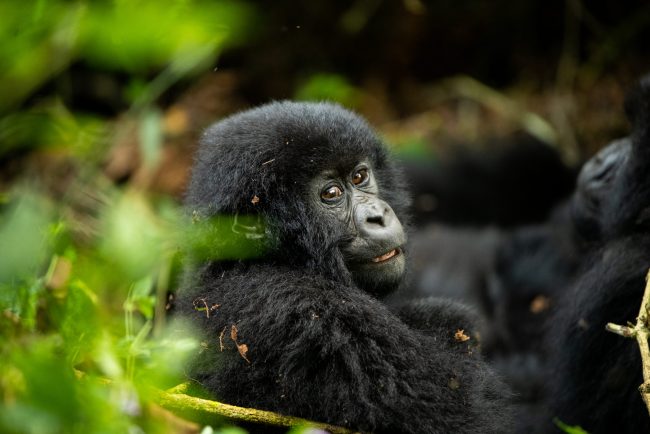
Gear Up For Gorilla Trekking: What to Pack
You’ve watched the movie “Tarzan” more times than you can count, and “Son of Man” by Phil Collins forms part of the soundtrack to your life. And now, it’s finally going to happen… You’re going gorilla trekking with precious primates! However, surely such a unique […]
RwandaYou’ve watched the movie “Tarzan” more times than you can count, and “Son of Man” by Phil Collins forms part of the soundtrack to your life. And now, it’s finally going to happen… You’re going gorilla trekking with precious primates! However, surely such a unique experience requires very specific items to pack? That’s where we come in! We’ve compiled the ultimate list of what to pack to make the most of your gorilla trekking adventure. So, it’s time to channel your inner Tarzan or Jane and start packing for the soul-stirring experience that’s gorilla trekking.
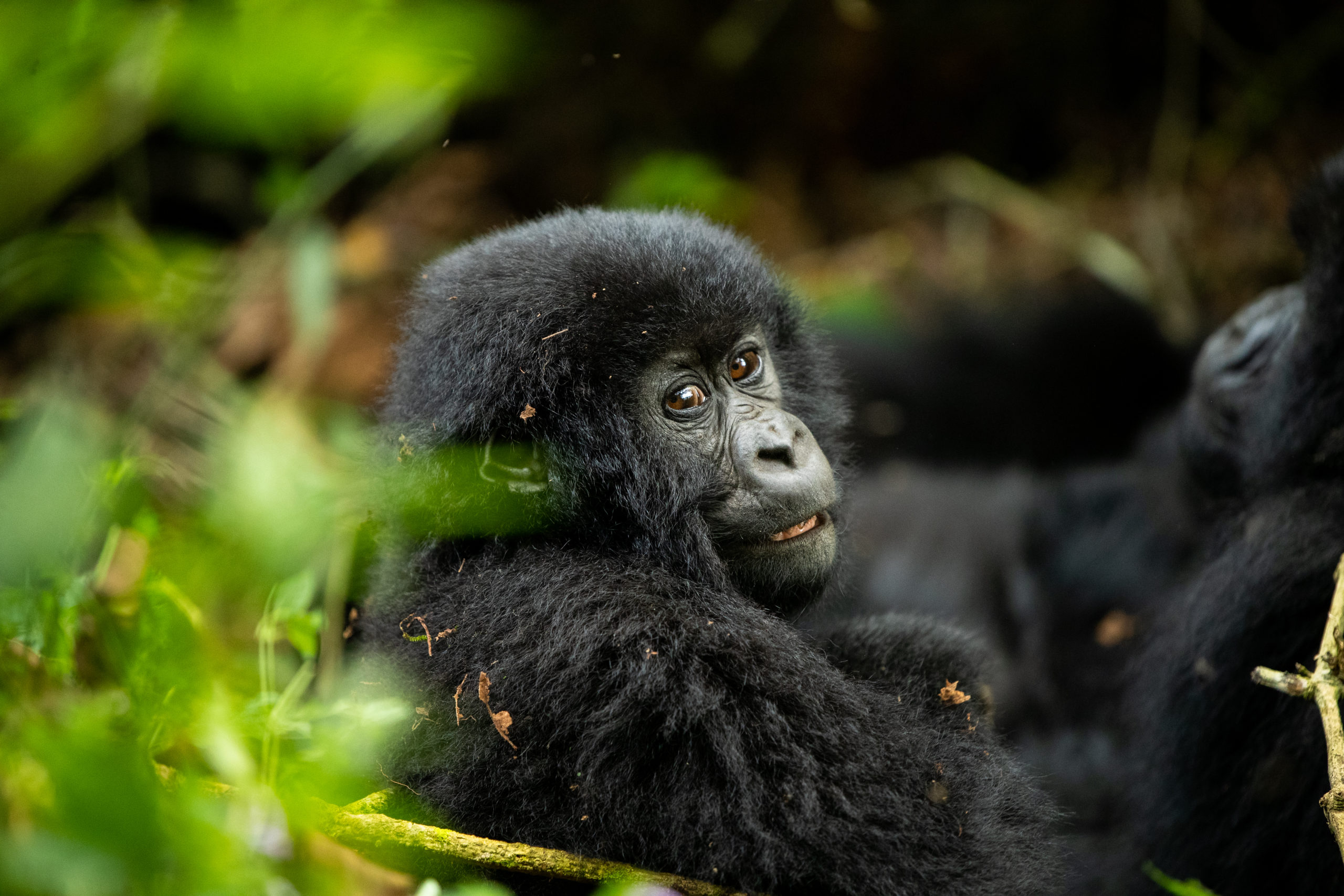
Pack like a pro for your gorilla trekking adventure
Gone Gorilla Trekking
But before we delve into what to pack for gorilla trekking, let’s take a quick look at where you should be going to experience this bucket list experience. These are some of our Travel Experts’ tried-and-tested trustworthy favourites.
The Land Of A Thousand Hills, Rwanda
Volcanoes National Park is one of the best places to go gorilla trekking in Rwanda. It’s here in the Rwandan section of the Virunga Mountains where Dian Fossey began her research. Plus, it’s the setting for the novel and film “Gorillas in the Mist.”
Where to Stay in Rwanda

See mountain gorillas in Rwanda’s Virunga Mountains, Image Credit: Singita
Africa’s Rainforest, Republic of Congo
If you’re looking for something that’s off the beaten track, gorilla trekking in Odzala-Kokoua National Park in the Republic of Congo is an excellent choice. What makes it great for gorilla trekking is that it’s less well-known than other primate trekking destinations, offering more exclusivity and greater availability.
Another key difference is the gorillas, with the Republic of Congo being home to lowland gorillas instead of the mountain gorillas you find in Rwanda. Mountain gorillas tend to be larger, with longer hair and shorter arms and can only survive in high altitudes. Lowland gorillas, on the other hand, prefer to live in flatter, more heavily forested landscapes.
Where to Stay in the Republic of Congo

The stunning landscapes of Odzala-Kokoua National Park, Image Credit: Odzala Discovery Camps
The Ultimate Gorilla Trekking Packing List
To make the best of gorilla trekking, there are a few essentials you should bring with you. Because you’re going to be trekking across forested terrains, having the right gear is paramount so that nothing gets in the way of you meeting your gorilla cousins. Here’s what you should pack for gorilla trekking in Africa.
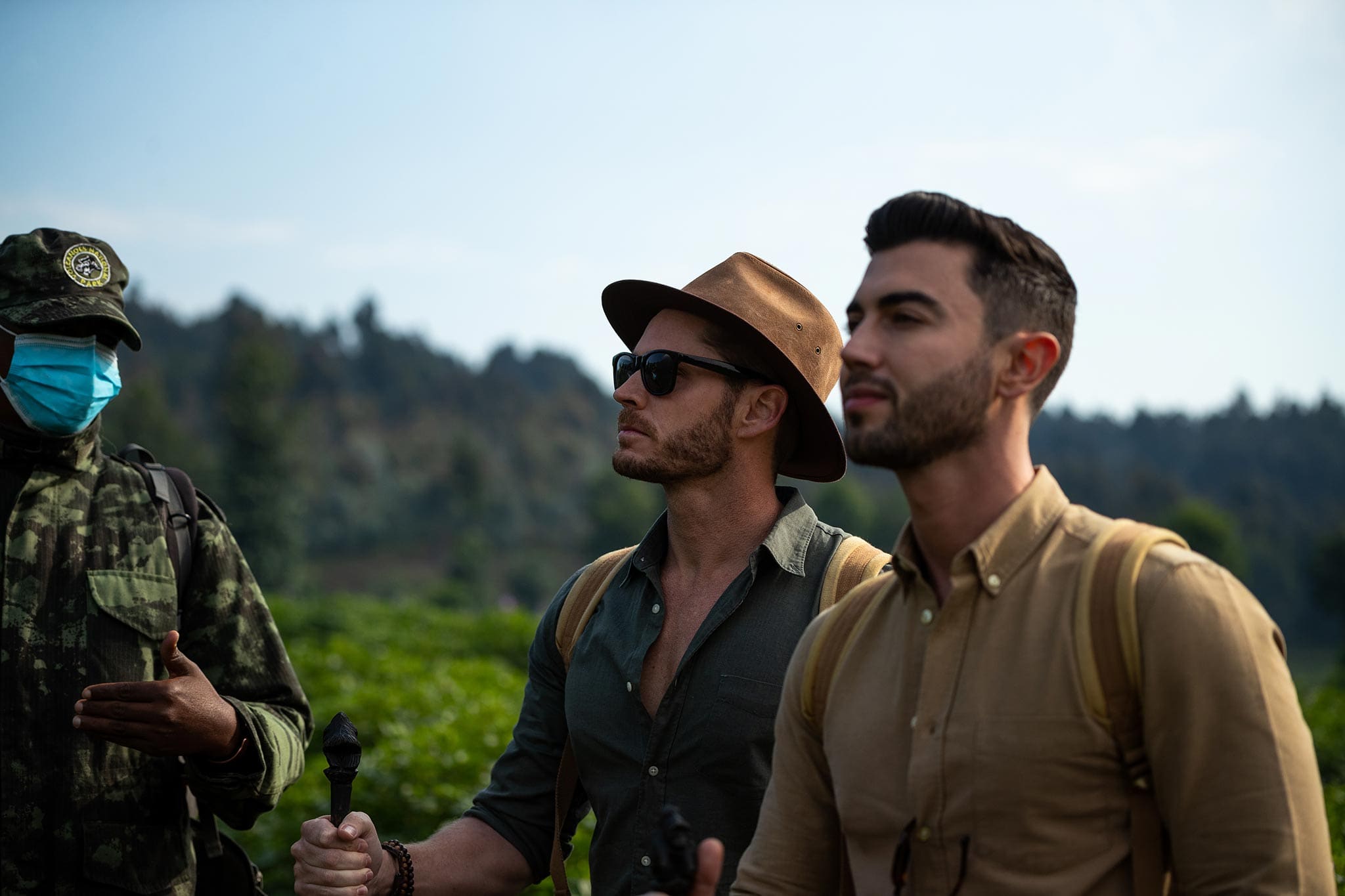
Soak in the rainforest views during gorilla trekking
1. Long-Sleeved Shirts and Jerseys
Long-sleeved shirts and jerseys are a must to protect your arms from scrapes as you weave your way through lush rainforests. Go for breathable fabrics with a colour palette that leans towards light greens, browns and khaki. Avoid bright colours as well as camouflage and animal prints.
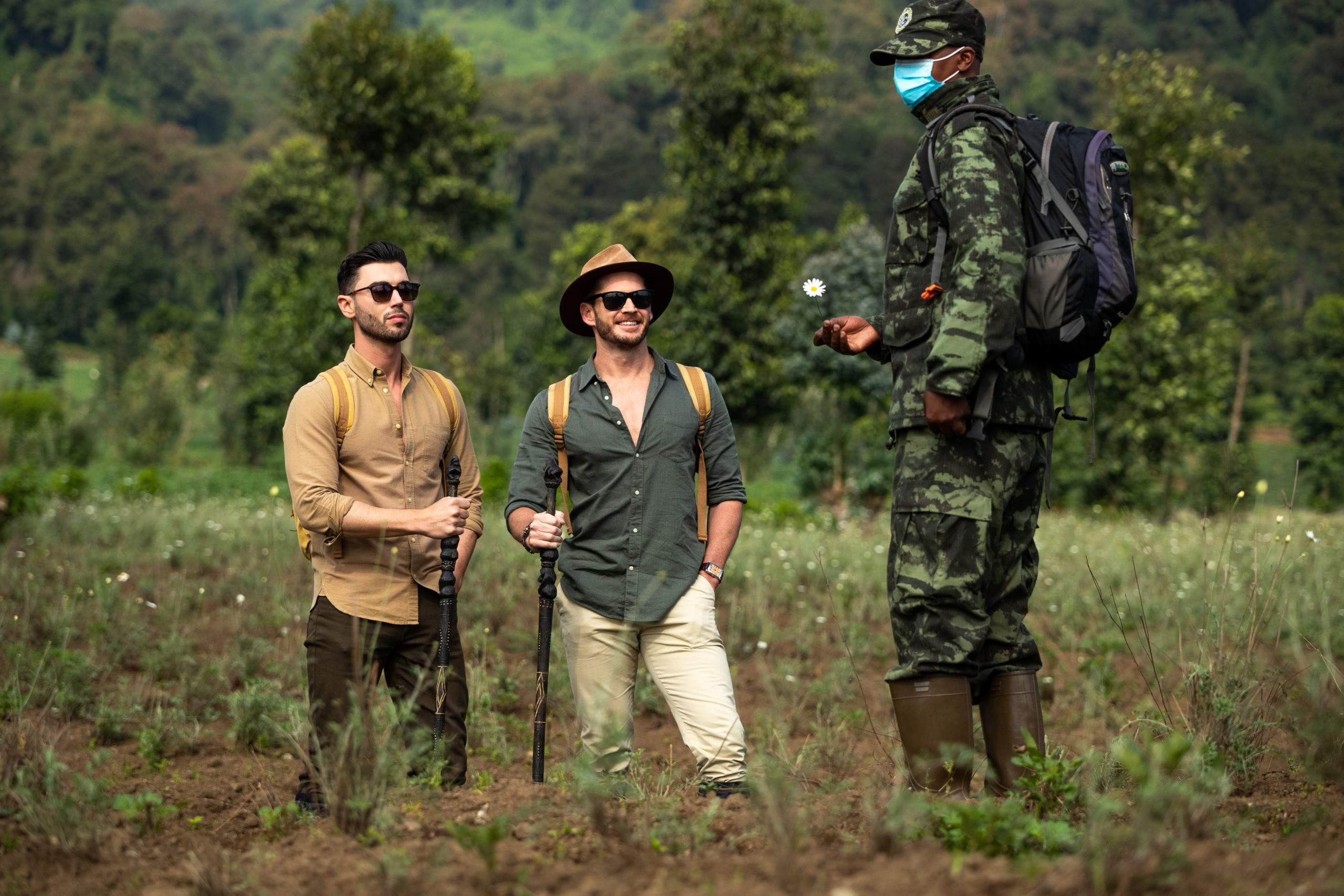
Who says you can’t look good while gorilla trekking?
2. Long, Waterproof Pants
Much like your arms, your legs will thank you for the extra protection, especially if it’s waterproof. The rainforests of Rwanda and the Republic of Congo have high-humidity climates, and wearing waterproof fabrics will help you stay dry and comfortable during the trek.
3. Good, Sturdy Hiking Boots
As the song says, “These boots are made for walking, and that’s just what they’ll do”. A pair of good quality, waterproof hiking boots will go a long way towards keeping your feet happy as you trek. Remember to splurge on a pair with good ankle support. Also, get some gaiters – sleeves to protect your boots from dust, debris, moisture and insects going into interesting places.

Gaiters will keep your socks clean and dry, Image Credit: Wilderness
4. Rain Jackets
You’ll be in a rainforest, so it’s important to be prepared for precipitation. A rain jacket will go a long way towards keeping your layers dry so that you’re never soaked and shivering. If the jacket is lightweight, it will be even better as you can stash it in your backpack until needed without adding much weight to your back.

A lightweight rain jacket can easily be packed into a backpack, Image Credit: One&Only
5. Sun Protection
The sun can be very unforgiving in Africa, even when you think it’s hiding behind the clouds. Therefore, you should protect yourself as soon as you step outside.
Don’t forget to pack a wide-brimmed hat to keep you cool and shield your face, neck and ears from the sun. Sunglasses are not just a fashion accessory but prevent you from squinting and protect your eyes from the sun’s glare. And finally, to make sure you don’t spoil your time in Africa with painful sunburn, slather on some sunscreen and reapply frequently.
6. Backpack
You’ll spend quite a bit of time out in the rainforest as you search for the gorillas, so invest in a comfortable backpack that you can carry with ease and keep your belongings like reusable water bottles, snacks, sunscreen and any other items you wish to bring along with you. Some luxury lodges will provide you with a backpack.
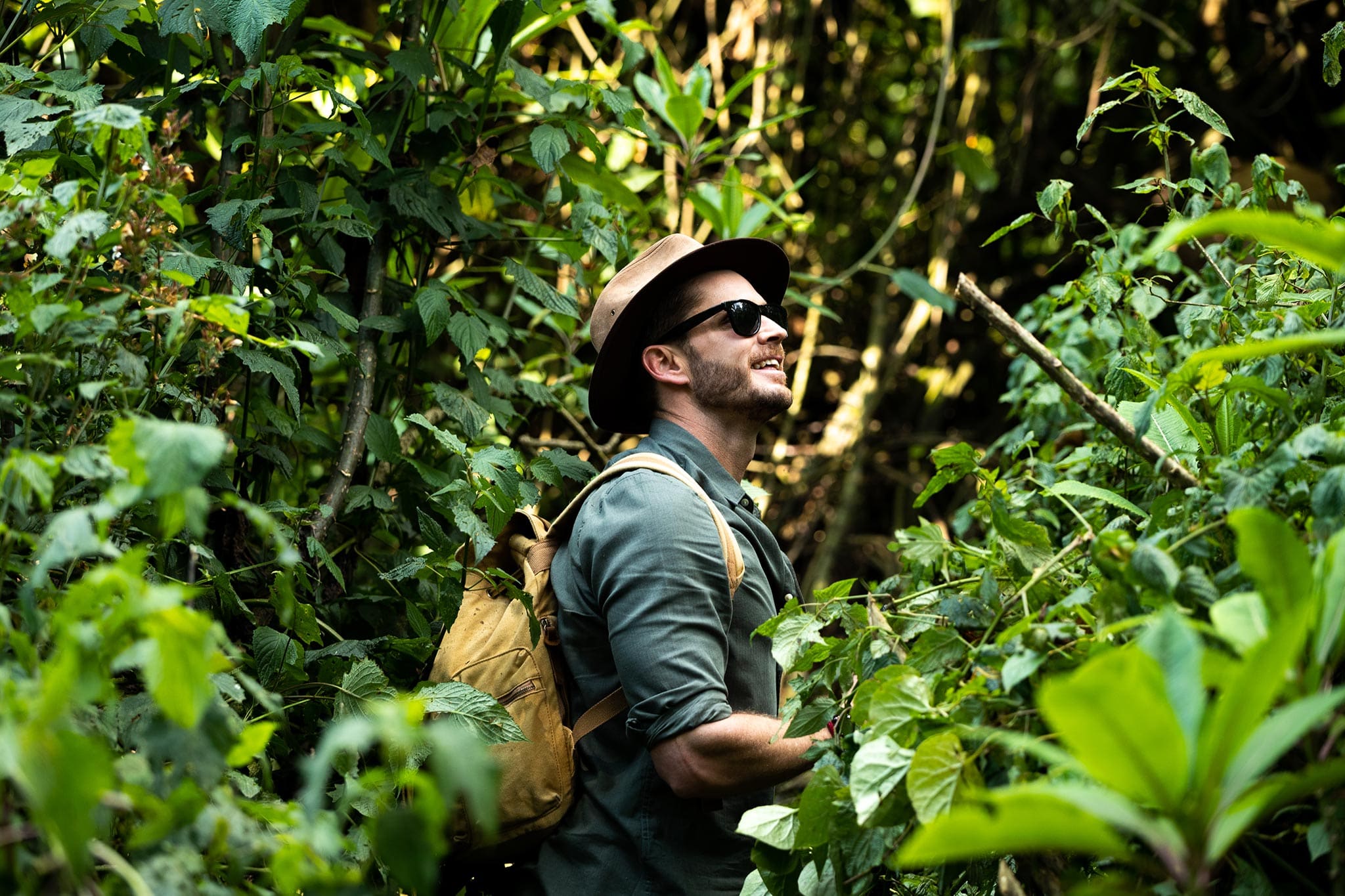
Keep the essentials close in a backpack
7. Camera
To ensure you capture the big moment you meet the gorillas, bring along your camera. It will let you relive the memories long after the day has ended, and you will be the centre of attention at your next dinner party when you show your snaps to friends and family. However, to avoid disturbing the gorillas and other wildlife, flash photography is not allowed during gorilla trekking.
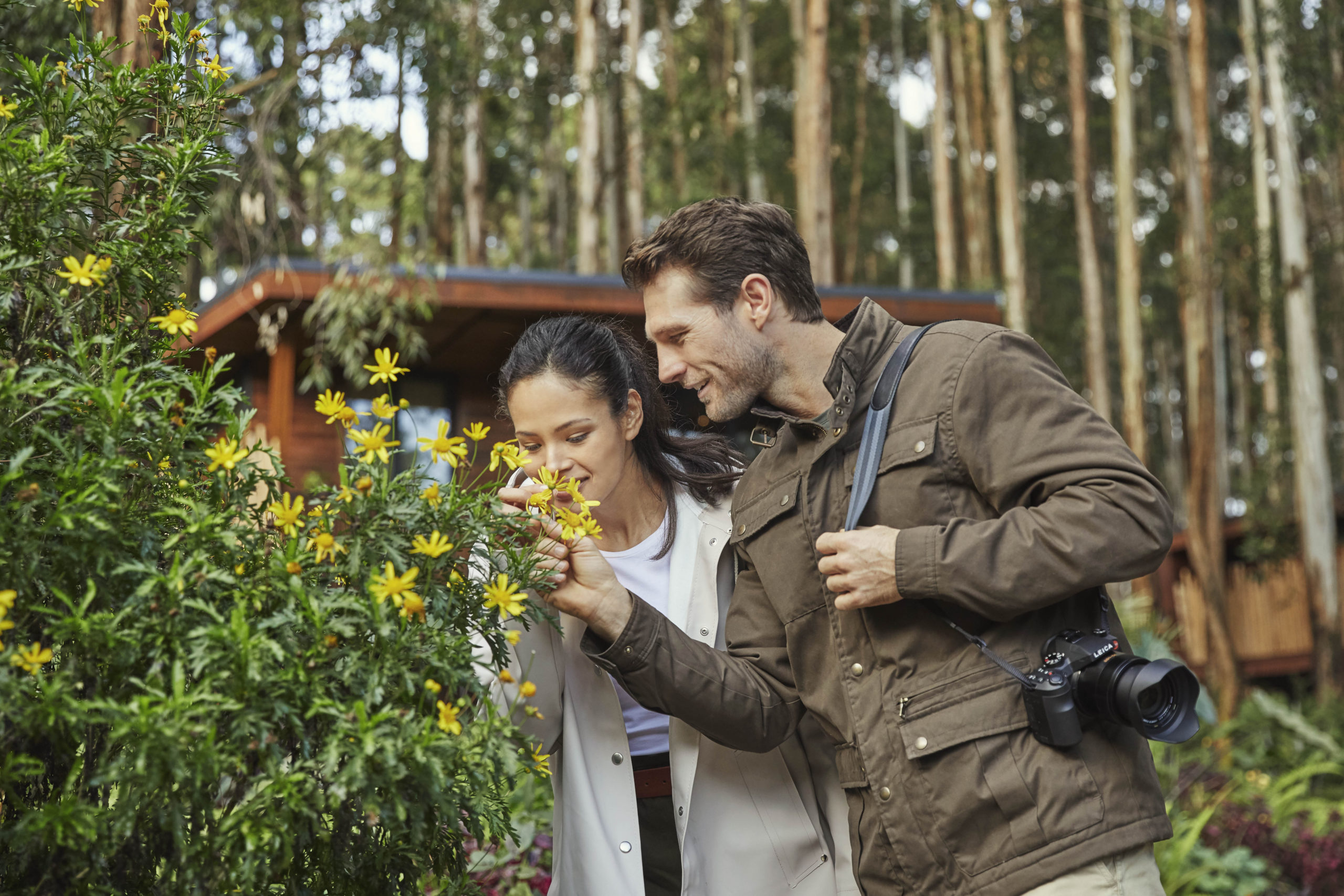
Bring your camera to capture every moment, Image Credit: One&Only
8. Thick Gardening Gloves
Yes, you did read that correctly: gardening gloves! While our gorilla cousins have evolved appendages that allow them to grip surrounding slopes and branches, humans have not. So, to best protect your hands when you use them to go up and down steep forested slopes, a nice pair of thick gardening gloves will go a long way!
9. Insect Repellent
While your eau de parfum probably smells wonderful, we suggest swapping it out for some eau de bug spray. Spraying insect repellent before and during your gorilla trekking excursion will help keep those creepy crawlies and their friends who fly far away from you for a comfortable trek.
Keep bugs at bay with insect repellent, Image Credit: Odzala Discovery Camps
10. Don’t Forget Your Permit
While coming across various other animals, like golden monkeys, on your gorilla trekking expedition will undoubtedly be a welcome surprise, forgetting to complete some important admin will not. To go gorilla trekking, you need to obtain a permit, which, depending on your destination, can cost anywhere between USD 700 and 1500. But don’t worry, that’s where we come in! We’ll worry about all the details so you don’t have to.
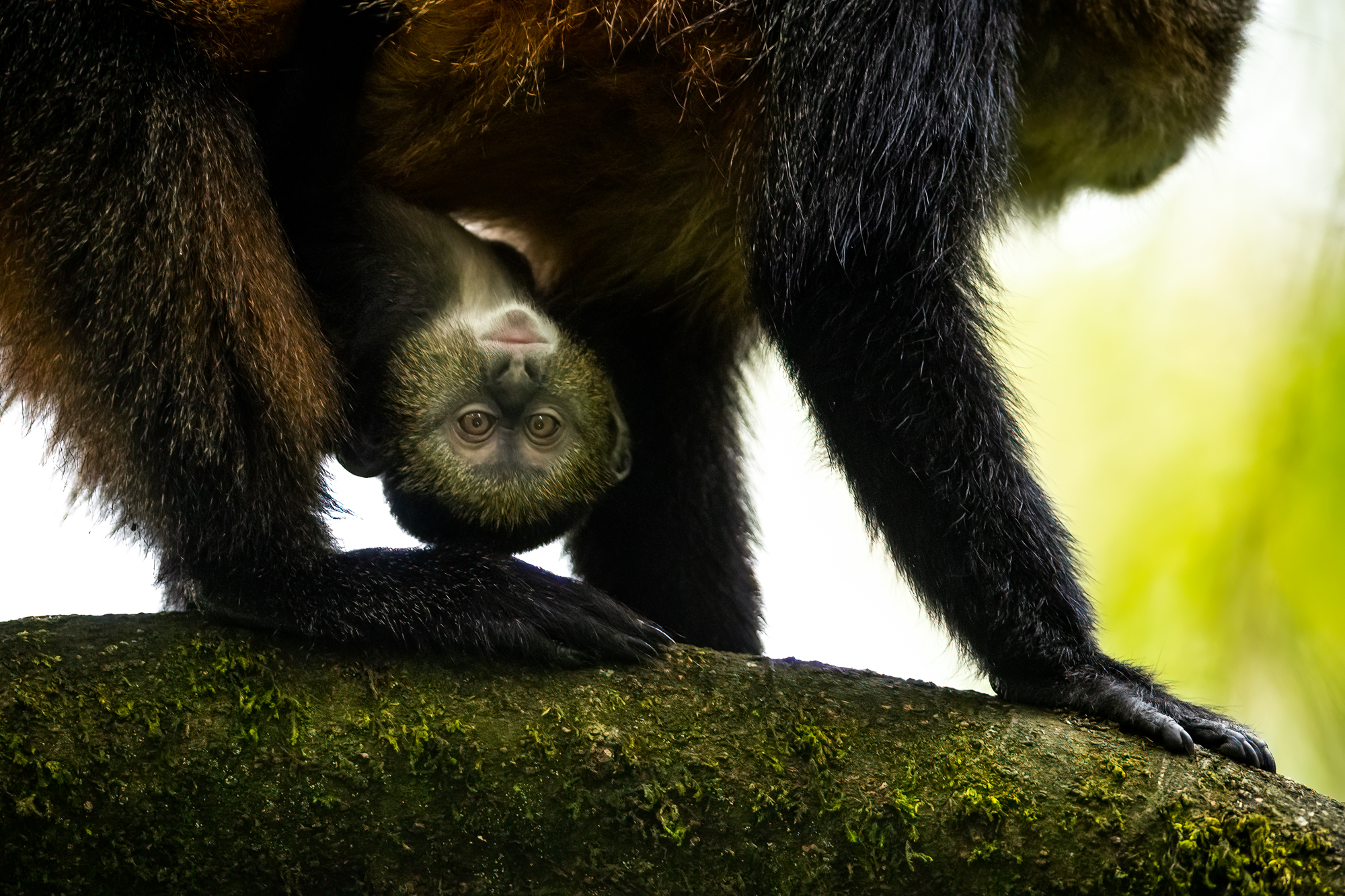
Golden monkey playing peek-a-boo, Image Credit: Singita
Your Gorilla Trekking Adventure is Just a Click Away…
Our seasoned Travel Experts have travelled far and wide across our beautiful continent so that they can guide you to experience only the very best. So, what are you waiting for? Contact us today to turn your gorilla trekking dreams into a reality!
